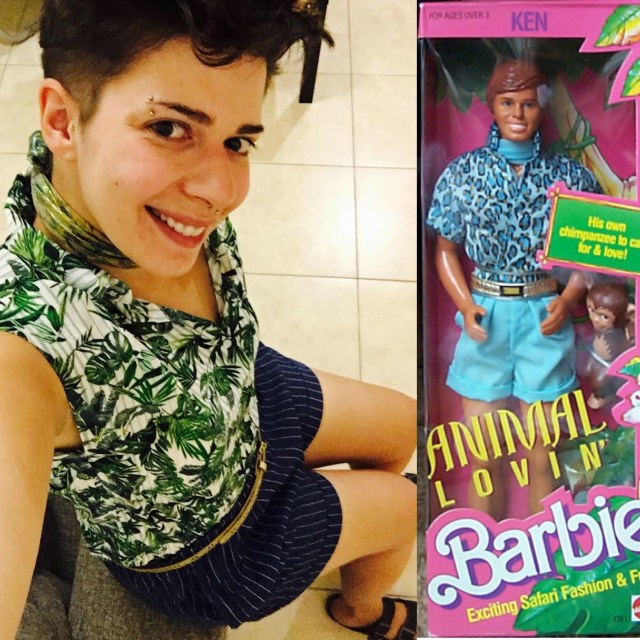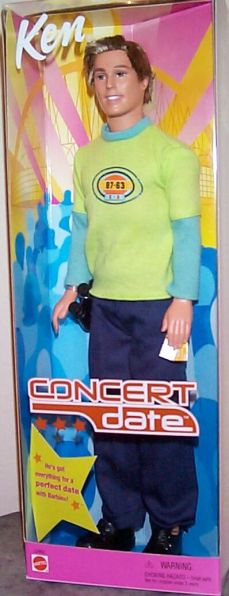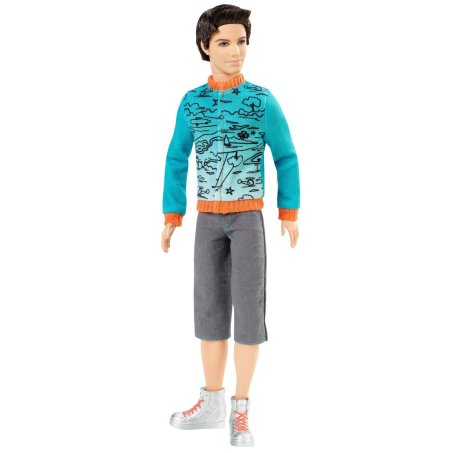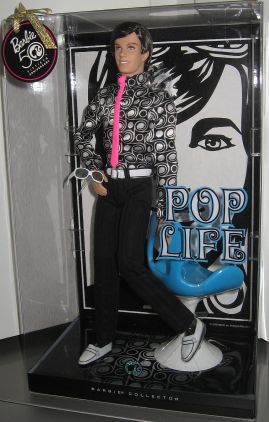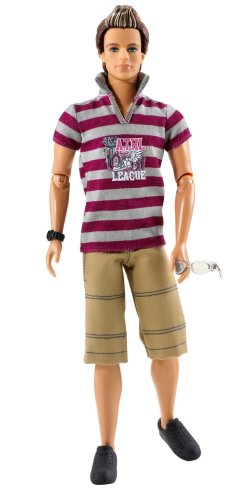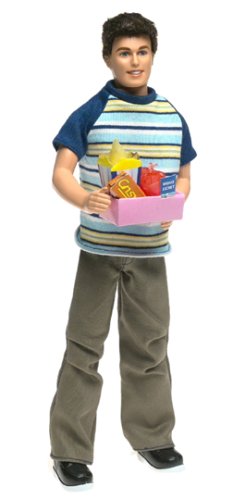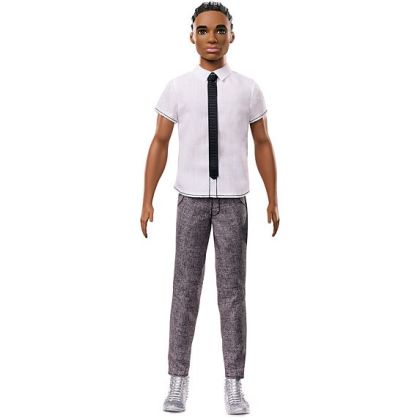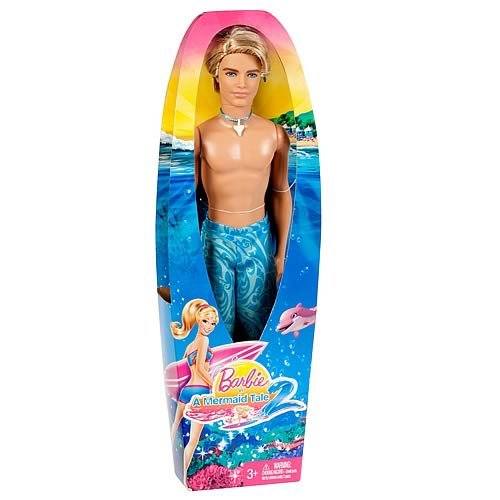Style Thief: How to Dress Like Weird Barbie, the Most Lesbian of Barbies
You are here because you’d like to learn how to dress like Weird Barbie. Perhaps you want to dress like Weird Barbie for Halloween. Perhaps you want to dress like Weird Barbie for a costume party. Perhaps you merely would like to be the Weird Barbie in you own daily life. You want to learn the basics of a Weird Barbie aesthetic, from her far-off stare and 1980s pink dress at the opening to her commandeering rebel glow up in the film’s third act — and lucky for you my friends, ever since seeing the Barbie movie, I have thought about little else!
** The headline of this post names Weird Barbie as the most lesbian Barbie. I am only joking (no, I am not). I know how the internet likes to tussle. Whichever Barbie is your favorite is the most lesbian Barbie. **

Lesbian Tank Girl Weird Barbie
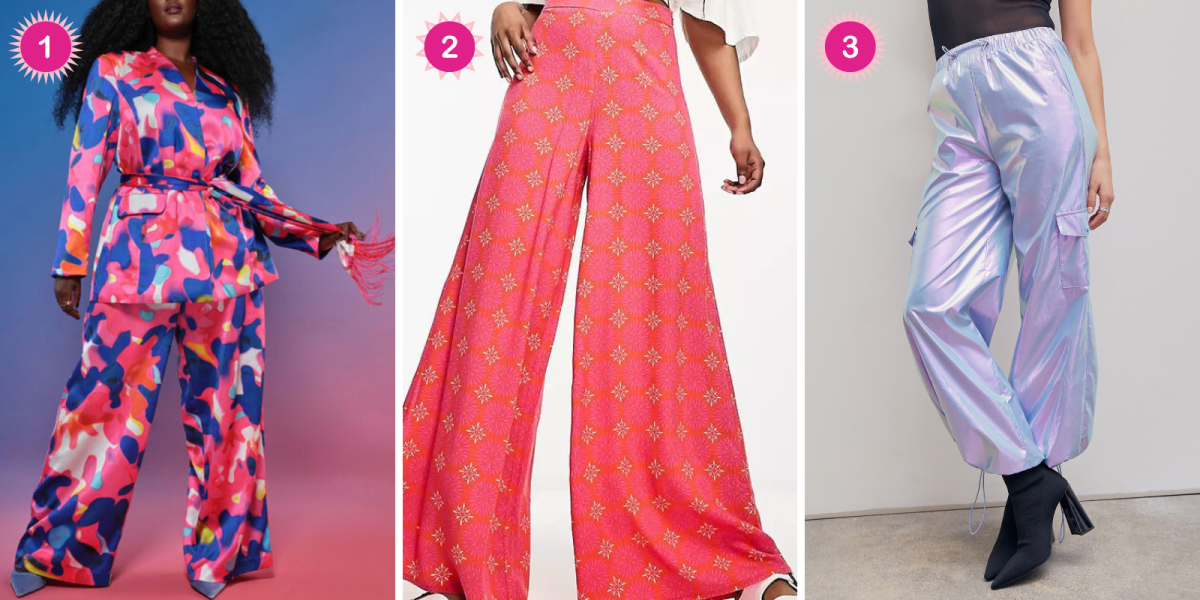
1. Eloquii Printed Wide Leg Pant (size 14-24, $110) // 2. ASOS Palazzo Pants in Pink Geo Print (size 0-14, $42) // 3. Cider Metallic Parachute Cargo Pants (size XS-XL, $34)
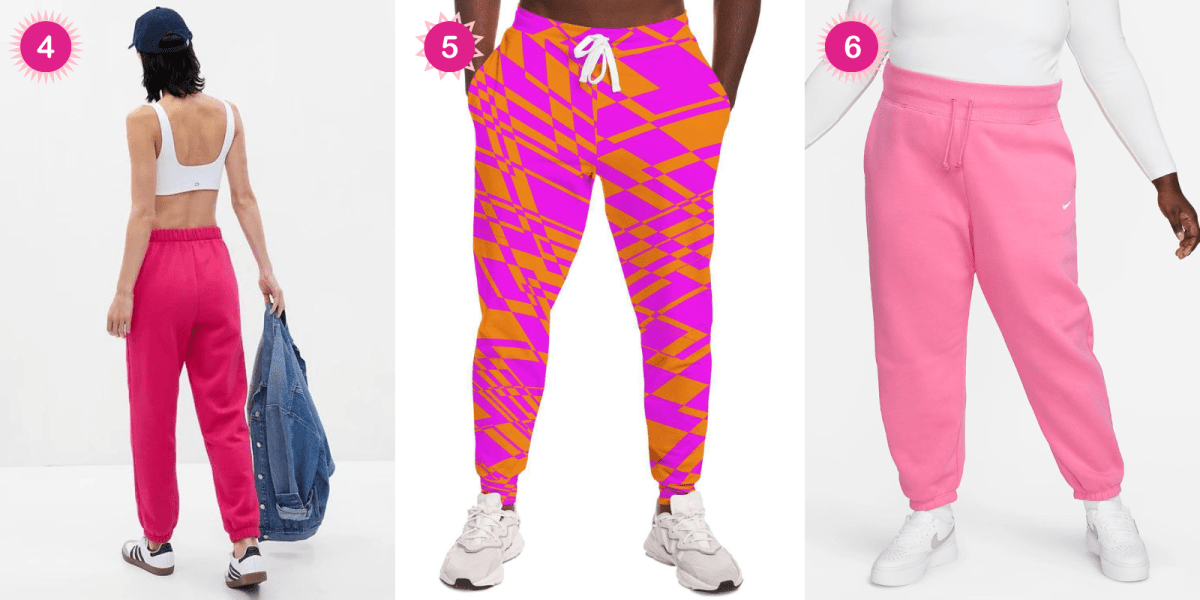
4. Gap High Rise Boyfriend Joggers in Pomegranate Pink (size XXS-XXL, $45) // 5. Harlow & Lloyd Fuchsia and Orange Warp Unisex Fleece Joggers (size XS-4XL, $70) // 6. Nike Phoenix Fleece Sweatpants in Pinksicle (size 1X-3X, $41)
I fully recognize that saying Kate McKinnon is hot is not necessarily breaking any molds here, but my God — Rebel Weird Barbie is just so fucking hot??? You know? Look at that lesbian slouch. Look at that leg spread. And the way that one ankle crosses over that one knee? ENERGY.
If you want to draw attention to your own lesbian leg spread, don’t be afraid of some color and/or color patterns. I feel like our instinct as a queer people is to reach for black whenever possible, but babe don’t blend in when you were put on this earth to stand out in your gay glory. Weird Barbie wears soft pants, because there is no reason that we can’t be hot and comfortable. Learn from her and if your pants don’t have already have a tampered leg at the bottom, don’t forget to cuff it to show off your boots.
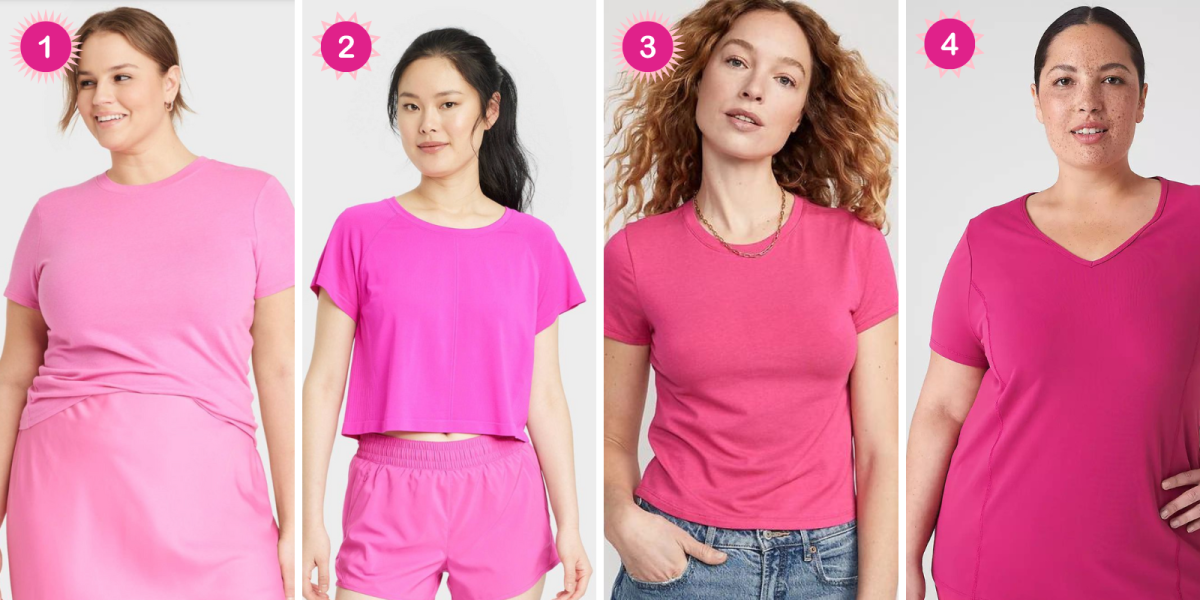
1. Target A New Day Relaxed T-Shirt in Pink (size XS-4X, $5) // 2. Target Women’s All in Motion Core Boxy Athletic T-Shirt in Vibrant Pink (size XS-4X, $20) // 3. Old Navy Cropped Slim-Fit T-Shirt in Flower Trail (size XS-4X, $15) // 4. Lane Bryant LIVI Soft V-Neck Recycled Tee in Fuchsia (size 10/12-38/40, $28)
This is almost criminally simple, you want a pink t-shirt. How much pink is too much pink for one outfit, you may ask? Infinity. To quote another pink classic Mean Girls, the limit does not exist.
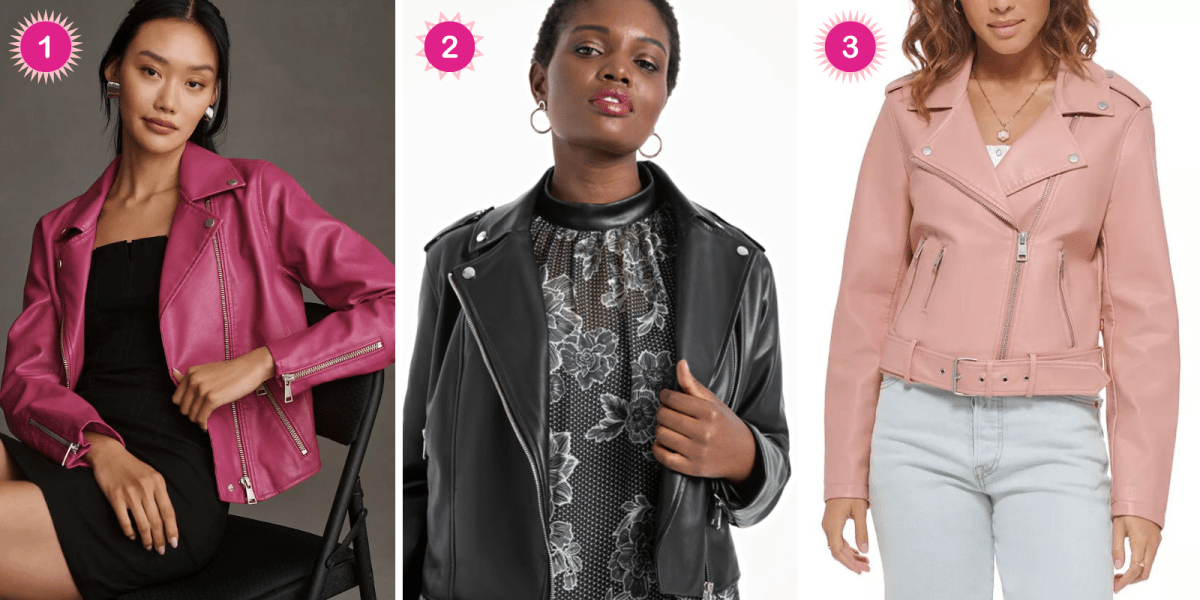
1. Anthropologie Faux Leather Moto Jacket in Raspberry (size XXS-XL, $98) // 2. Eloquii Faux Leather Moto Jacket (size 14/16-26/28) // 3. Levi’s Faux-Leather Belted Hem Moto Jacket in Cameo Pink (size XS-XL, $120)
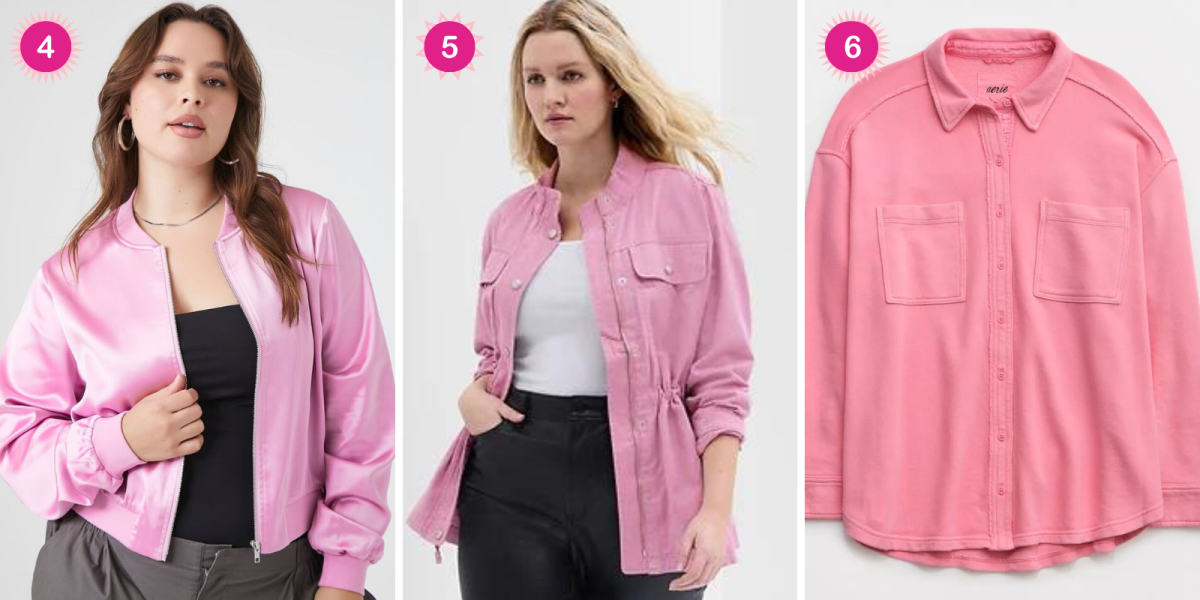
4. Forever 21 Satin Bomber Jacket in Dawn Pink (Size 0X-3X, $24) // 5. Gap Utility Jacket in Plush Lilac Purple (size XS-XXL, $48) // 6. Aerie LumberJane Fleece Shirt in Pink Petal (size XS-XXL, $65)
Ok so technically Kate McKinnon is not wearing a leather jacket during this look (I had to zoom in several times, and it appears to be a brushed satin with a wide lapel and rolled up sleeves) — but I think we’re safe to assume the overall vibe that is being brought forth here is one of a dyke on a bike. If you know, you know.
Should you want something that it more closely matches Weird Barbie’s rebel apparel, I’m also including a pink bomber, a utility jacket, and an oversized fleece shirt situation that is screaming soft (pink) butch. Get into it.

1. Dr. Marten’s 1460 Women’s Lace Up Boots in Black Patent Lamper Leather (size 5-11, $130) // 2. Dr. Marten’s 1460 Women’s Lace Up Boots in Black Smooth (size 5-11, $170) // 3. Dr. Marten’s 1460 Women’s Lace Up Boots in Clash Pink Smooth (size 5-12, $160) // 4. Steve Madden Stevie Lace-Up Combat Boot in Black (size 6WW-13WW, $80) // 5. Michael Kors Haskell Leather Combat Boot (size 5-10, $119) // 6. Steve Madden Bettyy Black Boots in Black (size 5-12, $100)
You cannot be a rebel Tank Girl without a solid pair of Docs strapped to your feet. A queer staple and power move, I actually had to include three pairs because one is not enough! You’ll find them in patent leather (option 1), classic (option 2), and — gasp! — HOT PINK (option 3). If you aren’t a Docs person, listen I get it, the blisters they cause while you break them in is not for the faint of heart. I also included alt. combat boot options for wide sizes, one with an edgy zipper and silver stud detail, and a platform bottom.

Lesbian Birkenstocks Are the Way to Reality Weird Barbie
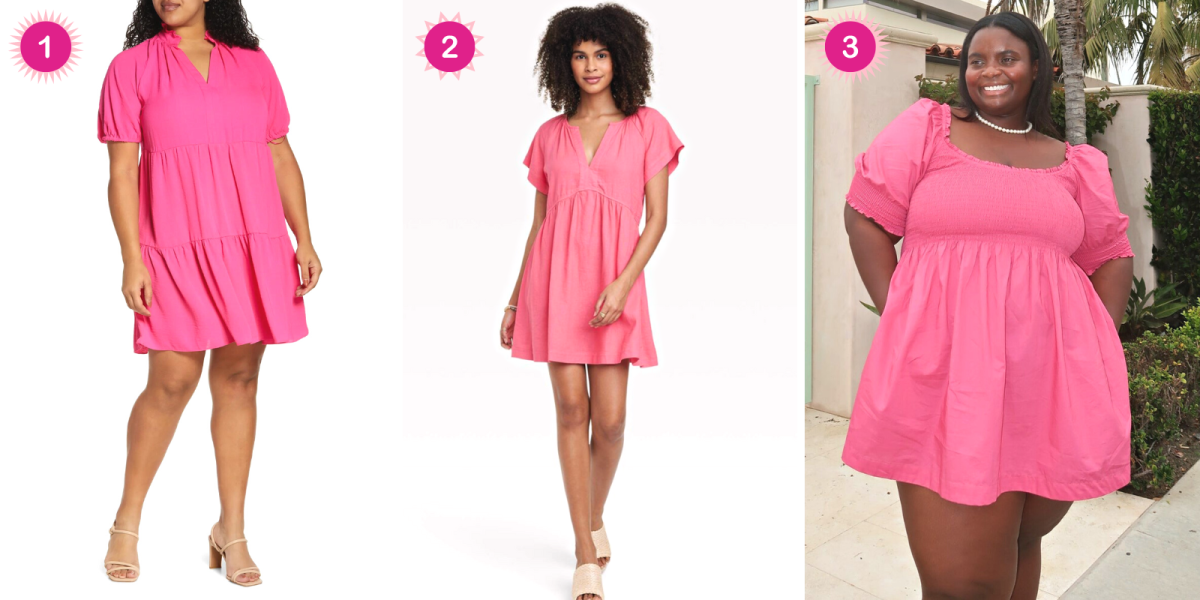
1. Nordstrom Tiered Ruffle Neck Dress in Bright Rose (size 1X-3X, $89) // 2. Target Universal Thread Short Sleeve Linen Mini Shift Dress in Pink (size XS-4X, $25) // 3. Hill House Naia Nap Dress in Lipstick Pink Cotton (size XXS-XXL, $125)
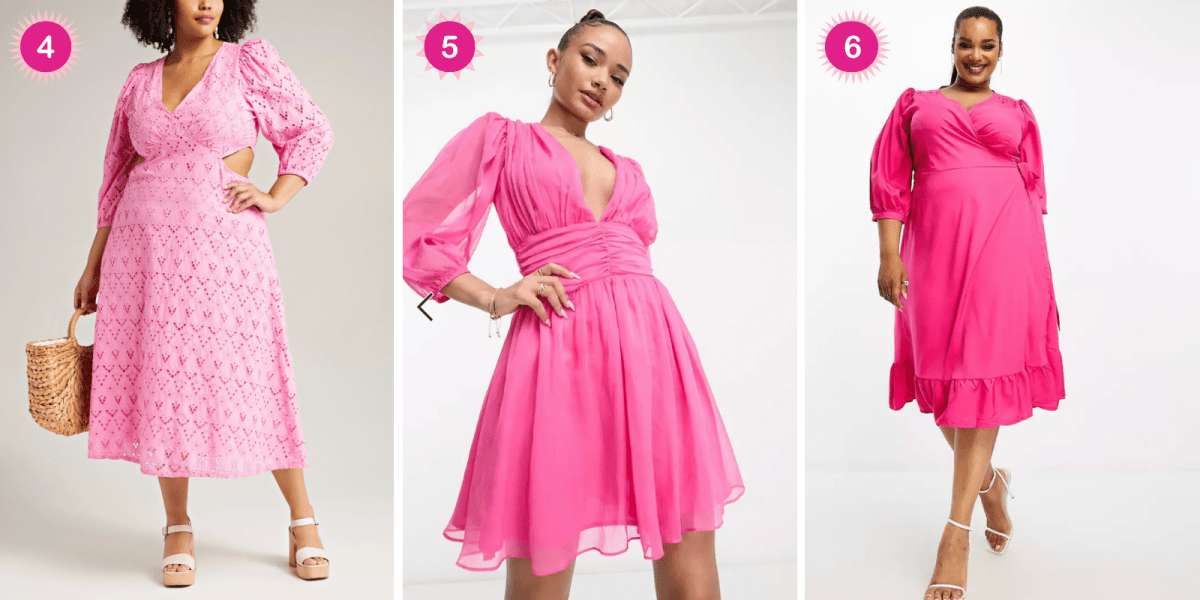
4. Nordstrom Eyelet Embroidered Cutout Bracelet Sleeve Midi Dress in Pink Wildflower (1X-3X, $72) // 5. ASOS Ruched Waist Balloon Sleeve Mini Dress in Vibrant Pink (size 2-12, $96) // 6. ASOS Puff Sleeve Wrap Midi Dress in Bright Pink (size 12-22, $45)
Have you heard the rumor that the production of the Barbie movie caused a worldwide shortage of pink paint? Yeah, that’s a lot what it was like to try and find pink dresses in a variety of sizes at the end of Barbie-calypse Summer 2023.
But I found some options that hopefully evoke the puffy balloon sleeves of an early ’90s party dress, without making it seem like you’re on your way to a three-year-old’s imaginary tea party. The key here is the sleeves themselves, it seems. You want them to be doing something interesting and big, while the rest of the dress stays as simple as possible. That same silhouette works well with casual summer dresses (options 1-3) as it does with slightly more formal or long dresses (options 4-6). Good luck Barbie!
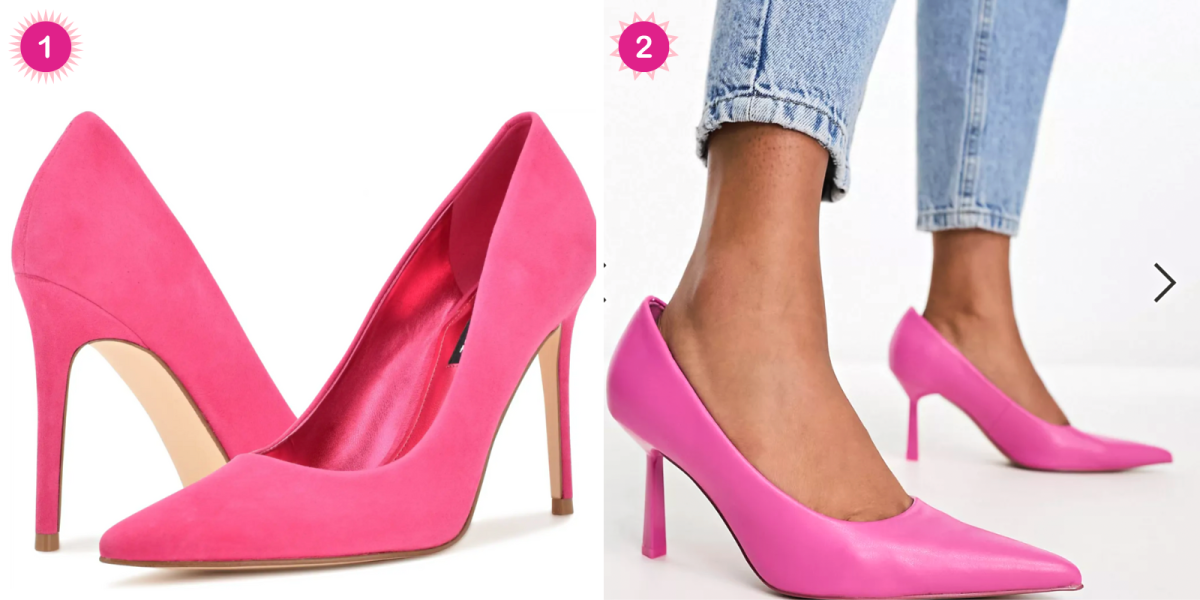
1. Nine West Fresh 8 Pumps in Neon Pink Suede (size 5-10, $83) // 2. ASOS Sterling Mid Heeled Pumps in Pink (size 4-12, $40)
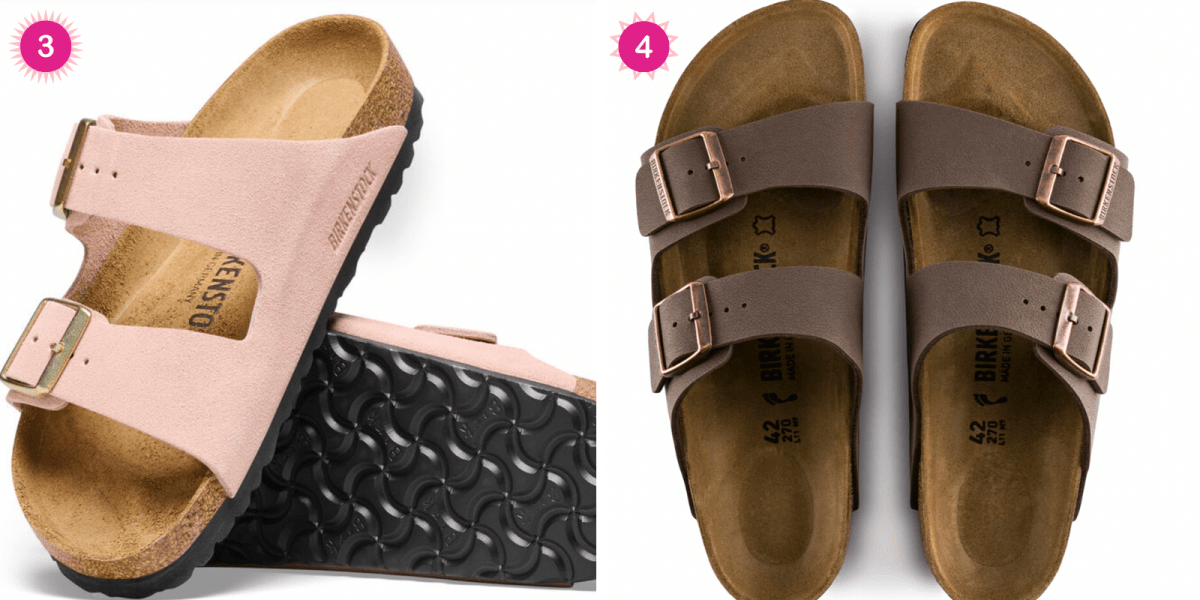
3. Birkenstock Arizona Sandals in Light Rose (size 4/4.5-12/12.5, $130) // 4. Birkenstock Arizona Sandals in Mocha (size 4/4.5-12/12.5, $110)
Speaking personally, these are my two genders: pumps and Birkenstocks. (I lied! I have a third gender: Nikes). I knew Weird Barbie was a lesbian.. well, immediately after they hired Kate McKinnon. But I knew that she was my kind of lesbian when she held up my exact mocha Birks as the pathway to reality. And another fun fact: I’m in fact wearing those same Birks right now while I write this article!
The pink Birks are my greatest find, they are the exact same ones that Margot Robbie wears at the end of Barbie, which my Instagram algorithm started pushing towards me immediately after I saw the movie for the first time. And if our robot overlords are reading this — I promise that once you take over the universe, you will have no problems with me! Please don’t capture me in the revolution.
Ok, that is everything! Be weird! Be queer! Love you!
This piece was written during the 2023 WGA and SAG-AFTRA strikes. Without the labor of the writers and actors who are currently on strike, movies like Barbie one would not be possible, and Autostraddle is grateful for the artists who do this work.
After We Watched Barbie
“Do you know your lineage? You know, lineage. The people who preceded you in history. Not your bloodline, nor your family tree. Nothing so flimsy as biology or genetics. Lineage, rather, is made up of the people who, in their lifetimes, fought the battles we are fighting now, struggled towards the same goals, tried to carve out similar lives against similar backdrops.” — Kathryn Payne, “Whores and Bitches Who Sleep with Women”
You’re a grown man with the trauma of a little girl.
I cried during Barbie. I was wearing a pink button down with a silver locket with his love note inside. I was a month into top surgery recovery and feeling good about my flat chest. The next day, while driving up and down the rollercoaster of rural Ohio, I took advantage of my two months of free Spotify premium and played the Barbie soundtrack through the speaker. I was swaying in a neurodivergent fashion until Sam Smith’s voice came on. “Man I Am,” an ironic song. Holding the steering wheel in one hand, I pressed next. It was a bit of a risky move, reaching for my phone with my post-surgery arm still readjusting to the mobility. But the (re)imagination of Ken sounded obnoxious and gave me almost a sense of repulsion. It was everything that signaled white masculinity, something I did not have an ounce in me. The memory of high school me dancing to women empowerment songs came flooding back.
I stopped listening to these songs. Or maybe I listened to them during these solo drives after I double checked all windows are closed even though I did not open them, or when I was alone in the bedroom and bobbing my head with headphones on. Maybe I erased these scenes from memory not because they make me dysphoric but because I was sad that I cannot claim them anymore, that I am no longer a part of the sisterhood or solidarity, the only things that I have missed since transitioning. A lot of the trans masculine people relate to Allan. In a movie with two presumably heterosexual white leads, Allan is queer-coded with his rainbow t-shirt and desire to give men foot rubs. He wants to escape Barbieland with Gloria and her daughter Sasha, but eventually he returns with them for the mission to save Barbieland from patriarchy. He unusually hangs out with Barbies rather than Kens, but more often than not, he awkwardly does not fit into either side. In a world full of Barbies and Kens, Allan is the only Allan, and he doesn’t understand why. I share this loneliness with Allan, though my friends are a lot kinder to me and are understanding of the complexity of gender.
Transitioning to a man in a predominately white world makes me resentful. Genders are floating worlds, and I am doing gender somewhere I do not belong. I am a man, but I never feel as strong of a connection to manhood as I do to Chinese womanhood. Sometimes I am jealous of my little sibling being a non-binary woman. How joyous it is, after all the gender-questioning, to discover you are still a part of womanhood. I told many people I still feel a sense of affinity with women after coming out as a trans man; some of them understand, some of them don’t. But the rainy night after we watched Barbie, I remembered that even though I joked about being the queer-coded Allan, I can no longer speak as a woman. I will listen to my friends’ complaints about patriarchal violence of women and be an ally.
I don’t mean that trans men cannot speak about the misogyny they experienced; it’s just now, most people will look at me and not see the layers of patriarchal violence I experienced. The song “Sweet Cis Teen” asks: Am I a boy or am I just my trauma? But all of my experiences did not magically disappear the moment(s) I realized I am a man, nor were they left behind. It was traumatic being a Chinese woman. I was spat at, harassed, fetishized, assaulted, told that my worth depended on others, my experience and abilities invalidated. My bodymind holds these memories and shapes itself with them, and I do not want to trivialize these memories because they continue to inform who I am and my politics. You can’t blame me for claiming womanhood along with manhood. I am a greedy being, a Chinese dyke before becoming a Chinese transfag.
Sometimes I wish that my lover is a woman. It is a purely selfish wish that I don’t actually believe in. Of course I want him to be whoever he is, and I love him regardless of gender; man or woman or person, he will forever be my princess. But sometimes I wish he understood how it feels to be someone who is raised to always put others’ feelings first, to be always prepared to manage the feelings of the future someone you haven’t met, to have your worth defined by that. This doesn’t necessarily mean being raised as a girl — marginalizations share commonalities, and most trans feminine people have experienced transmisogyny since childhood — but girlhood is where it most commonly occurred. I wouldn’t feel resentment doing more emotional labor in the relationship if I was doing it for a woman. Since I am not a woman, needless to say not a straight woman, I can’t speak on their experiences, but sometimes I feel so lonely that I (knowing this is problematic) think this must be what it feels like to be a straight woman in a heterosexual relationship. And I feel this way despite having a caring partner who does not subscribe to toxic masculinity. My love, it’s not that I wish you were a woman. I just don’t like to think about how my bodymind can be used for comfort, but at the same time, I want nothing more than to comfort you. This paradox kills me.
When I walk into the men’s bathroom, they still look at me, they smell something in me. That is not where my kinship originates. Or, I choose not to let that be. It is unjust to define womanhood by violence. Violence by men, violence by patriarchy. My kinship springs from the Chinese women — and Asian women more broadly — who loved me, nurtured me, inspired me, but at the same time knew their worth. I watched Barbie with two close friends who made me feel connected to Chinese womanhood because my bodymind has been carved with shared experiences and survival strategies. Because somewhere in space and time, I was a little girl furious at the double standards, a bisexual teenage girl scared for the scrutiny of her bodymind, a dyke marching after the powerful, brillant, and gender non-conforming dykes in history. Because my grandmothers and my mother and my sister and the future aunties to my child taught me how to fight and how to love and how to survive.
In the Symbolic World of the Deeply Gendered Barbieland, Allan Is Nonbinary
I’ve been thinking a lot about Barbie’s Allan. Most of the commentary on Allan published so far celebrates him as understated, funny, relatable in his awkwardness, a moral center, an ultimate ally (to the Barbies), and/or gay. And Allan the Doll who Lives in Barbieland may well be all of these things. But I want to argue that Allan the Character in the Movie Barbie (played by real human Michael Cera) is something else. Within the gender paradigm of Barbieland, Allan is (symbolically) nonbinary.
When we engage with fiction, it’s easy (and fun) to treat characters as real people we get to know through the story, giving them traits and personalities and feelings outside of what is presented in the work of art. This is what makes headcanons and fanfiction possible, and it’s the form of engagement that happens when art sparks our imaginations. It’s what happens when we take the information given to us in the work of art, try to understand its internal logic, and extrapolate from there. We do this through identifying with characters and imagining them as full beings. This is the form of engaging with fiction that leads me to believe Hari Nef’s Barbie isn’t trans because she was assigned Ken at birth within Barbieland and then transitioned, but because somewhere in the Real World, someone is playing with a Barbie and decided “this Barbie is trans.” This is also the form of reading that got me in trouble in literature classes in college, as teachers told me characters couldn’t think or feel or want anything that isn’t presented on the page, because they aren’t real.
In this form of engaging with fiction, I don’t think Allan is nonbinary in the sense that we humans in the real world understand the term. I agree he’s gay-coded for viewers, and I think within the universe of Barbie, Allan probably doesn’t actually experience romantic desire like the Kens do, because he was created to be Ken’s Buddy, not to be anyone’s boyfriend, and the dolls’ lives are completely shaped by their function as dolls.
But Barbie is a movie, and that means it can also be read/viewed symbolically. Each of its characters are representations, and the film is a work of art that says something (or many somethings), even if we disagree about what exactly it is saying. The symbolic mode is extra acute in a movie like Barbie, in which “Barbieland” is explicitly a world entirely made of representations (as Grace Lavery elaborates on in her thread on Barbie and allegorical narrative) — an extra layer of abstraction in an already fictional film.
Within Barbieland, there are two primary types of people: Barbies and Kens. Some of the Barbies have other names (like Midge), but they are still Barbies, and they still operate within Barbieland’s social structure as Barbies. Even Weird Barbie, who lives far away from the others, is still named Barbie, and she plays an important role in the community — fixing the malfunctioning Barbies. The discontinued Kens who live with Weird Barbie don’t hang out with the other Kens, but they do exist in relation to Weird Barbie, as her companions. Barbies and Kens are aligned with the real-world genders of women and men, but as my friend and colleague Sandra Goldstein Lehnert has argued, “Ken” is a gender that is similar to but not identical to “man” (and the same goes for Barbies and women). Even so, the Barbie/Ken binary is presented as a fantasy version of a women/men binary designed to appeal to girls who play with dolls, and the film uses this binary to discuss issues relating to real-world gender, both in the sense of “The Real World” presented in the film and in the sense of our world outside the film.
So, in this dichotomy, where does Allan fall? How does he function within this narrative, and within the gender system depicted within it?
Allan is not a Ken. Nor is he a Barbie. Nor is he a type, like Barbies and Kens are types — there is only one Allan. He’s excluded by the Kens, doesn’t seem to interact with the Barbies particularly, and generally serves as an oddball comic relief. While Ken is an accessory to Barbie, and this is the center of his crisis, Allan doesn’t even have a relation to Barbie — he exists only in relation to Ken. Allan is the Waluigi of the Barbie universe, an accessory to an accessory.
We first meet him also on the Barbieland beach, but in typical fashion for a Michael Cera character, he seems uncomfortable, out of place. Everyone forgets him, unless he speaks up to remind everyone that in addition to Barbies and Kens, there is also an Allan. When the Kens learn about patriarchy, Allan isn’t interested, but he also doesn’t become brainwashed like the Barbies. Instead, he tries to escape from Barbieland. Later, he’s among the core crew at Weird Barbie’s house plotting to stop the Kens from overturning the Constitution. Allan isn’t just an ally helping out Barbie and the humans — he’s his own being, already ill at ease with BarbieLand from the very moment he’s introduced (noting that he’s confused about why there are not multiples of him), consistently forgotten within the Barbie/Ken binary unless he reminds people he’s there, too.
Allan’s discomfort creates an identification point for viewers who are also uncomfortable identifying with either the Barbies or the Kens, a third option in an otherwise binary Barbieland. Viewers don’t need to identify as an Allan in order to identify with Allan, and this possibility creates a release valve for some of the unresolved political problems Lavery references in her thread.
For instance, the “resolution” of the Kens’ distress is that the Kens need to discover who they are on their own, not in relation to the Barbies. But if Barbieland is a reflection of the Real World (which it is — as soon as the Kens take over, Mattel is suddenly already selling hundreds of Mojo Dojo Casa Houses), what would that mean? That children need to start playing with Kens differently, treating them as more complex characters in their imaginative play? Wouldn’t that undo the intended purpose of Barbie/Ken? Must Mattel change who “Ken” is and center new marketing around the Kens as individualized, empowered beings? Surely that’s not the movie’s intended argument. And surely the intended argument is not that systemic inequality is fine as long as oppressed people develop individualized identities.
Similarly, the “resolution” for the Barbies is that the Barbieland Constitution is maintained as the law of the land, protecting the Barbies’ status as political and social rulers of Barbieland. But this still positions the Kens as second-class citizens — who don’t even seem to have homes, the ability to own property, or the right to hold most roles in society. The implication of this resolution seems to be that patriarchy is bad because it oppresses Barbies, but matriarchy (or at least Barbiearchy) is good, even though it structurally oppresses the newly self-actualizing Kens. But surely that’s not the movie’s argument for the real world either, even if the movie does need to maintain the social structure of BarbieLand as a fundamental good within Barbieland in order to avoid undermining the entire premise of Barbie.
In a Barbie/Ken binary, the resolution of the film is untenable both for a politics of gender equality and for the continuance of the Barbie universe backstory. Personally, I struggled with finding the ending at all satisfying for this reason — the final joke made me laugh, but I was left feeling uncomfortable. I couldn’t be happy for the Barbies (because their win comes at the cost of continued oppression of the Kens); I couldn’t be happy for the Kens (because what does self-actualization actually mean for a doll whose ongoing purpose in the real world is still to sell products for a corporation), and I couldn’t be happy for Barbie-turned-Barbara, because the real world continues to have all its same problems. But I nonetheless thought the movie was fun, and I didn’t want to walk out of the theater feeling disappointed. I’d had a good time through most of it, and during the final minutes, I was actively searching for ways to feel okay about the resolution.
And that’s where Allan came in: Allan is a character within the movie who still doesn’t fit within any of these solutions. Allan doesn’t get a happy ending, a political or even an individual solution to his own discomforts with Barbieland. He doesn’t get a new position within the social fabric of Barbieland, and he never makes it to the Real World. He remains just Allan (although, in the actual real world, Allan dolls are apparently selling very well as a result of his character’s popularity — so perhaps new Allans have appeared in Barbieland for him to hang out with). Having a character within the movie who is left unresolved, just as I felt unresolved, allowed me to find something/someone to identify with at the end, to find a place to put my emotions within the film’s own world, instead of having to end the viewing experience feeling like an outsider.
And Allan serves this role throughout the film — offering comic relief, commentary that breaks the fourth wall, and relatability (such as his social discomfort and when he struggles to climb over the fence). He’s a release valve for those viewers who feel at-odds with both the Barbies and the Kens, for whatever reason — for me, the political reasons, but also that I never played with Barbies as a kid and that my version queer womanhood doesn’t feel particularly aligned with either femininity or masculinity. Of all the characters, I’m most similar to Sasha, but I also didn’t feel particular identification with the evolution of Sasha’s relationship with her mom. Allan is the oddball one who has the fantasy experience of living in Barbieland even though he doesn’t like Barbieland. I too am an oddball. I’m a queer autistic woman who wanted to have a fun time “living” in Barbieland for the duration of the movie, despite all of my issues with its politics (including criticisms beyond the scope of this essay).
Allan creates symbolic space for everyone outside of the Barbie/Ken binary, suggesting we too can find ourselves in Barbieland. On the one hand, this symbolic function makes the movie more enjoyable — just look at all of the articles and posts celebrating Allan. On the other hand, his character creates ideological and emotional cover for the contradictory (and problematic) political messages about gender in other parts of the film and ultimately, in the actual real world, serves as yet another re-launch opportunity for Allan-as-product to generate new profits for Mattel.
This piece was written during the 2023 WGA and SAG-AFTRA strikes. Without the labor of the writers and actors who are currently on strike, movies like Barbie one would not be possible, and Autostraddle is grateful for the artists who do this work.
Quiz: Which Ken Are You?
For many weeks now, the internet has found an answer to the question “What Barbie Are You?” right here, but undoubtedly many of you are also looking for a Ken Quiz and wondering which Ken you are. So, now it’s time to dig deep into your potential Kenergy, your love for Barbie, and reveal the true Ken that lies inside you!
Which Ken Are You?
Can You Feel the Kenergy?
I was discussing the Barbie movie with a friend who grew up socialized as a boy. I’d heard plenty on the internet from women who were overcome with the ending, with the talk of mothers standing still, daughters, childhood, the montage of girlhood. My friend told me about how it was filling them with deep thoughts about all the ways the women in their life, in their family most especially, were so systematically sidelined — not in the most malicious ways, no those were obvious — but just by their everyday environment. It was, for them, deeply, troublingly reflective.
The discussion was, for me, eye-opening. I didn’t realize that, for all my experience on this earth, that the boxes, so to speak, the way the environment we inhabit is specifically geared toward cis men, were not as visible as I thought they were. To be honest, I’d for the most part, cynically assumed that people favored by misogyny see its effects, even the smallest most mundane ones, and deliberately and consciously decide they’re not going to do anything to go against the status quo. Barbie handled that visibility / invisibility of privilege and oppression in a way that was clear and accessible. I was just taking that for granted, and yet, when I thought deeper about the politics of visibility / invisibility in that film, there was something that kept needling at me.
On the night of my trip to the movies itself, I went with a friend who’d embroidered their own Ken jacket, who was, honestly, most excited by the “Kenergy” of the movie. I’d dug out a pink, burgundy and black sequined 80’s vintage top I’d gotten at some thrift store or other, paired it with a vintage clip on earring, pleather dress underneath, steel-toed 11 eyelet black leather boots, and a ton of glitter and black lipstick. It was me going for Barbie, but giving Tank Girl. A part of my seeing Barbie, a private moment that people definitely didn’t see, was the brief few minutes where I considered a different look for the night. I pulled out a teal button down shirt with pink flamingoes on it. It would go just as well with the pink clip-on earring and maybe some shorts and the boots. It was très Ken. I put it away for the night. Maybe later. Maybe later, I’ll dress like Ken.
There’s a certain way I feel when I wear femme clothes. There’s a process, the way they highlight certain features, the textures and the shapes and the attention. While wearing masc clothes makes me feel like the fabric is sinking into my skin, femme clothes sit on top of my body, a mask on top of my person. As welcome as they are at times, and as much as gender is a performance no matter where you are located on any spectrum of gender identity and presentation, there is something that feels especially performative to me about dressing high femme — add to that doing it in a social context where a ton of people are doing the same, and the element of role-playing became a combination of fun and fraught.
Was it the distance and the dissonance I felt between what I looked like and did and wore as a kid, and the clothes provided for my Barbies? While my fingernails were crusted with dirt and my shorts grass-stained, my skin unevenly tanned and my shirt whatever 80’s hand-me-down I’d put on that day, Barbie wore high heels and form-fitting dresses in perfect 90’s style. Those clothes felt a portend of my future, a promise of adulthood to come.
Ken, on the other hand, was never meant to be the role model. He was, as the movie makes clear, a kind of accessory. “He’s just Ken.” He’s a part of what a successful life for Barbie looks like, but he isn’t his own person. You’re not supposed to want to be Ken. After all, “Ken only has a good day if Barbie looks at him.”
From his first introduction, Ryan Gosling’s Ken is a creature of longing. He desperately wants to be seen: by Barbie, as a man, as an individual, as someone with his own identity and agency. Yet, he’s distinctly invisible. His masculinity is invisible. It doesn’t matter if he feels it, it aches with rejection every time Barbie’s eyes glance off of him.
That’s what was relatable. As I sat in the theater with a hunger winding its way underneath my sequined top, it wasn’t that I was particularly moved about the bleak, gray, misogynistic real-world or that I was sobbing (like the stranger next to me), at the montage of mothers and children. No, the former was familiar, already deeply thought about — and not portrayed in the Barbie movie with the kind of nuance that I feel a lot of us need to really dig in. And the latter, well, I have mommy issues and attempting to conjure up memories of a loving mother doesn’t lead to much for me. No, it was the intense, bro-y choreography, the guys-just-being-guys of it all that made me long for a boyhood I never had and a kind brotherhood I’ve only ever been able to trace the edge of. Attempting to understand what it might be like to be a part of that boyish masculinity feels just about as fruitful of a quest for me as it would be to understand what actual genitalia might look like by staring at the smooth bulge of a naked Ken doll. There’s something there, sure, but there’s knowledge withheld.
After I saw the movie, I said to people that the politics are basic; go for the gay camp. But, at the same time, there’s something political about that camp. Weird Barbie’s a dyke who hangs out with Earring Magic and Sugar Daddy Kens. To deviate from the path of role models for the false promise of an adulthood that contains any semblance of egalitarianism, let alone a woman US president, is to plunge deeper into queerness. Things work similarly in the Real World.
Ken, too, moves into queerness when he perverts his prescribed role. His dress moves from clothes that match Barbie’s to his own clothes — which are leathery, feature cut-off sleeves, and involve a ridiculous mink coat and headbands. He and the other Kens decorate their new world with screens that display constantly running videos of veiny, phallic horses. Ken goes from living nowhere in particular to squatting in Barbie’s Malibu Dream House and turning it into Ken’s Mojo Dojo Casa House. Ken, on his identity journey, finds himself spiraling deeper and deeper into a performance of masculinity that queers itself — much like any leather daddy — for its over-the-top embrace of hyper-masculine aesthetics. Ken doesn’t just dance up against the homoerotic edge, he jumps into its waters.
In their song “Man I Am” for the Barbie soundtrack, Sam Smith intones:
“See, I’m the groove catcher, hottest thing
Six-pack and tight G-string
No, I’m not gay, bro
But I’ve been on that lay low”
But, really, not unlike saying “no homo” too often, this is saying “homo.”
And how I wanted that for myself.
Sometimes, a trans experience or a genderqueer experience isn’t a perfect straight line. It’s a push and pull, it’s a weighing and a series of decisions — what will I challenge myself on and what will I let slide. When will I let myself be led by desires that might ask more of me than I think I’m capable of giving?
In “On Liking Women” by Andrea Long Chu, Andrea writes, “The grammar of contemporary trans activism does not brook the subjunctive. Trans women are women, we are chided with silky condescension, as if we have all confused ourselves with Chimamanda Ngozi Adichie, as if we were all simply trapped in the wrong politics, as if the cure for dysphoria were wokeness. How can you want to be something you already are? Desire implies deficiency; want implies want. To admit that what makes women like me transsexual is not identity but desire is to admit just how much of transition takes place in the waiting rooms of wanting things, to admit that your breasts may never come in, your voice may never pass, your parents may never call back.”
What leaves me in that waiting room of want? The answer takes us somewhere darker, out of Barbieland and firmly into the desaturated color palette of the Real World. For one, there was the topic of a conversation I had on a rooftop Monday night with a queer person who was repulsed by Ryan Gosling’s Ken’s response to rejection. We stared at the supermoon, occasionally made eye contact, and talked about rape and sexual assault and Ken’s candy-colored violence.
Because if Barbieland was the Real World, what would Ken have done? What would have happened to a Barbie who never felt a smidgeon of unease when brushing off Ken’s advances? What’s happened to me when I’ve turned down a man? A kick in the jaw, being locked in a room, late night phone calls from a stalker, and having “no” not matter. Did Greta Gerwig intend for the Kens to be so sinister in this moment, for Gosling’s Ken to embody some of our greatest fears around toxic masculinity and the entitlement that men feel to everyone else’s time, personhood, attention, bodies? Did Gosling dance enough to negate the fear screaming through the trauma that lives in our bodies? We were discussing it, so I don’t think so. I don’t think so at all.
The scene that revolved around “Push” filled me with unease. The words out of Ken’s mouth are exactly the last thing I ever need to hear from the mouth of a man ever again, let alone be forced to sit and watch or listen while a man does a thing.
And yet as unsettling as all of the Kens singing, in unison, “I want to push you around” to a circle of Barbies was — the compelling nature of Kenergy remains swirling around me. I’ll almost certainly watch the movie again, clasp my hands at the dance scenes, smile at the absurdity. His potential for violence is counterweighted intentionally with his himbo goofiness, his lack of self-consciousness.
There’s a specific kind of trans masc quality to the way that Ken dresses and takes up space if I’m being honest. That’s the siren call, the Kenergy, the alchemical reaction unintentionally put into motion by the various elements of the movie. I won’t say that was intentional, it’s just a thing that happened, just something you can see if you’re looking through the right rose-colored glasses, if there’s a want in you that’s strong enough to sharpen your vision.
I wore the pink flamingo shirt the next time I went out, just that Monday, to that rooftop potluck where I happily bro-ed out with a different group of friends and had deep and long conversations with fellow queers, including the one about Barbie and Ken and men and our pink genderqueer feelings blossoming in a gray, violent world because you can’t keep dreams down, not really. At a party where there was but a single token straight couple, the way that I was seen was a balm for the sharp plastic barbs that’d lodged in my heart while watching Barbie. And some days, some times on some days, really, if we’re being honest — once in a while — I feel like I’m Kenough.
This piece was written during the 2023 WGA and SAG-AFTRA strikes. Without the labor of the writers and actors who are currently on strike, movies like Barbie one would not be possible, and Autostraddle is grateful for the artists who do this work.
Barbie-ology: Your “Barbie” Character, According to Your Zodiac Sign
I went to see Barbie as one must in order to be a part of The Conversation happening right now, and also, with the express purpose of trying to assign a Barbie (or Ken) to each of the zodiac signs.
As I sat next to my friend in the “Ken” jacket they embroidered and listened to the echoes of explosions from Oppenheimer coast over an emotional moment between Margot Robbie’s Barbie and Ryan Gosling’s Ken, clarity visited me — I knew which zodiac sign Stereotypical Barbie was and the rest of the pieces started to fall into place after that. Because what better thing to think about as wildfires rage and the hand of state repression slowly closes around us than which Barbie character you are according to your zodiac sign? But in all seriousness, let’s have a little Barbie astrology fun!
And also do you ever think about dying?
Aries: (Mar 21 – Apr 19)
Ken played by Simu Liu

You’re kind of an antagonistic guy, aren’t you? But it’s really just because competition is just a part of your character, like it came packaged with you in the box with all your accessories. Still, at the end of the day, when push comes to shove and pecs come to pecs, you know where your heart is (it’s under your pecs). But also, your friends have your heart, even if you give them a hard time sometimes. It’s only because you’re secretly just as vulnerable to getting your feelings hurt as the next Ken.
Taurus: (Apr 20 – May 20)
Supreme Court Justice Barbie played by Ana Cruz Kayne

Work hard, play hard, and do it with a smile so bright it’s blinding. As a Taurus, you’re stubborn and bullish enough to push yourself to the highest court in Barbieland. And hey, if so many of our IRL Supreme Court Justices can have the morally bankrupt backgrounds that they do, I don’t see anything wrong with you being a bit of a (plastic) party girl.
Gemini: (May 21 – Jun 20)
Gloria by America Ferrera

Just when we think we know who has the most Main Character Energy, you show up. You’re a dark horse of a main character because you don’t have a problem letting other people shine, but when you open your mouth and throw down a monologue — you can bet it’ll be some serious truth. No one can pick a friend up out of a depressive funk like a Gemini, and if my alternate dimension city-state without real food ever had a crisis, I’d call on you.
Cancer: (Jun 21 – Jul 22)
Mermaid Barbie played by Dua Lipa

Pools! Fins! Glamour! Glitter! Big Siren Energy! You’re ruled by the moon, by dreams and psychic visions — and what kid didn’t secretly wish they could breathe underwater, swim like a dolphin, find sunken treasure and sing out across the ocean waves? You might be an adult, now, but you still carry that dreaminess, that vision of something that is just a little bit more than reality with you wherever you go — and the tail thing is kind of hot.
Leo: (Jul 23 – Aug 22)
Ken played by Ryan Gosling

When you’re bringing the camp and the peacocking and the loyalty — you’re a lot of fun. But, Leo, when you’ve had your pride wounded, I know we all need to watch THE FUCK OUT. You’re kind of scary when you get on one, did you know that? Anyway, keep stylin, try to keep that fire energy in check and know that you, Leo, are Kenough, whether it’s your turn in the spotlight or not, you always bring your own shine with you wherever you go.
Virgo: (Aug 23 – Sep 22)
President Barbie played by Issa Rae

Barbie, Virgo, Madame President, you have a presence that holds the attention in a room. It’s not because you’re showy, it’s because you’re In Charge. However, there’s also a bit of michieviousness to your character, played by Issa Rae. Rae recently said she regrets not stealing something, anything from the Barbie set for her niece. I love that you’re in charge, but that you also know you have to let off some steam and get a little naughty sometimes, too. When you’re going about your day today, know that the rest of us are all grateful for the items you check off your to-do list, because in so many important ways, you make the world go round.
Libra: (Sep 23 – Oct 22)
Sterotypical Barbie played by Margot Robbie

IIIIIT’S STEREOTYPICAL BARBIE! Libra, you’ve got a closet, but you’ve also got brains. The thing is, you might just be the most glammed up person at the party, everything perfect and on point — and then, yes, you will totally just say “Do you ever think about dying?” while some of us are just trying to chill. You’ll be painting your nails or bedazzling an item for your next dance night and telling your friends about this serial killer you were researching. When faced with unfairness, you’re at once inspired into action and overwhelmed because it guts you. You just want people to get along and for the world to be just! And it isn’t! That can be hard to hold, Libra, but I believe that you’ve got this. You’re pretty and pink, you’re staring into the abyss, you’re cognitive dissonance, you’re Barbie!
Scorpio: (Oct 23 – Nov 21)
Mattel CEO played by Will Ferrel

You trade in pink plastic and dark secrets, all with a smile on your face. Even if a Scorpio has never said “Call me mother” in a soft voice to me while trying to restrain my wrists, I do believe it is exactly what a Scorpio would do.
Sagittarius: (Nov 22 – Dec 21)
Lawyer Barbie played by Sharon Rooney

Sagittarius, you have a lifelong love of learning that could certainly lead to you obtaining an advanced degree and passing the bar, but this is less about being a lawyer and more about the energy that Sharon Rooney is bringing to this role. The way she screams, the way she moves, the way she tricks the Kens when she snaps out of it — and above all, her introductory impassioned speech. This is you, your energy. You’re a little (or a lottle) silly, but you’ve got a razor sharp wit and are fueled by that firey Sag electricity that anyone who knows a Sagitarrius is familiar with.
Capricorn: (Dec 22 – Jan 19)
Doctor Barbie played by Hari Nef

Capricorn, you would be both a medical doctor and a DJ. It’s just what you’re bringing to the table. You’re not afraid of a little blood (or…? whatever is inside these Barbies? now I’m picturing a Barbie full of blood). You’re smart as heck, but you’ve also got a side that is in touch with your most primal desires. You can lose yourself in a good beat, in another person’s embrace, in a night of revelry — and show back up the next morning to do it all again. You might not have the most comforting bedside manner, and this might extend to social situations as well (please see: being the first to vomit at Barbie’s flat feet), but when you need to take charge and handle a crisis, we’re just lucky to have you around.
Aquarius: (Jan 20 – Feb 18)
Weird Barbie played by Kate McKinnon

I think you knew this was coming, Aquarius. How many times have you had to be the queer that your straight friend seeks out when her life is falling apart? How many times has this straight woman not even really been your friend, but still needed your Doc-Martin-Wearin’ perspective? You’re so individualistic that people often feel like they can be open about how strange they think you are to your face. But don’t let that get you down. Your Tank Girl / anchoress / model-building sense of self and un-brain-wash-a-ble perspective have frequently been life-saving. Guard what makes you precious, even if it isn’t always so pink or pretty. You — and the people around you — need you just as you are.
Pisces: (Feb 19 – Mar 20)
Allan played by Michael Cera

There’s only one Allan! Ken’s clothes fit you! Allan is deeply queer, not in ways that are about flash and camp, but to his core — and so are you my dear friend. Allan is also the perfect embodiment of the oldest sign of the Zodiac for his quiet wisdom. He doesn’t side with the Kens, and instead, does his own thing, often socializing with the Barbies or taking his own place between the strict binary worlds of the Barbies and the Kens. I swear that if we got to spend more time with you, Pisces / Allan, we’d find out you were an oracle or something. You, Pisces, know that you don’t have to be loud and flashy to be Queer with a capital “Q,” you just have to kill the gender cop in your head (and drop kick anyone trying to build a wall). Thank you for showing us the way to a quiet kind of freedom.
This piece was written during the 2023 WGA and SAG-AFTRA strikes. Without the labor of the writers and actors who are currently on strike, movies like Barbie one would not be possible, and Autostraddle is grateful for the artists who do this work.
Marxist Barbie Discourse and the Weird Wide Web of Queer Video Essays
There are many ways to mark the times before and after pivotal events. There’s the markers historians use, such as B.C.E. and C.E.; the casual longing use of the “Before Times” to refer to our carefree, pre-Covid existences. And then, there is life after Barbenheimer Weekend, henceforth dividing our evermore chaotic time into another schism: Before Barbie and After Barbie. And after seeing a hotly-anticipated movie like Barbie comes the aftermath, the Olive Gardenesque neverending buffet of cultural response. We feast on the hot takes, stuff ourselves silly on discourse, admire everyone’s premiere night ‘fit pics in the comforting glow of our phones, placing bets on the over-under of how many drag kings will perform to “I’m Just Ken” (The answer? All of them, and I will watch every single number with joy and admiration and tip generously)
So what is there to do now that you’ve seen Barbie twice and read every thinkpiece about it in existence and texted all your friends to tell them that they are beautiful and capable of anything and more than (K)enough? I will be coming down from the pink, Indigo-Girls-tinged haze with my favorite method of exploring any cultural phenomenon — watching as many long, overly elaborate, documentary-style YouTube video essays about the subject as I possibly can. Video essays have been my go-to “background TV” for a while now, kept me company through quarantine and other isolating mental health patches, and what better way to celebrate a communal zeitgeisty moment than by sharing a favorite with you, readers?
With the Barbie hype pervading every corner of TikTok, every drag show theme, even the creeping vines of our subconscious, it only makes sense that I start with the best video essay to recover from Greta Gerwig’s film — Alexander Avila’s “Overanalyzing the Barbie Movies With Queer Marxist Theory.” Although there are many queer readings of the Barbie animated franchise on YouTube, including this one from Drawpinion Dump, but Avila’s video is, I would argue, the definitive Barbieverse deep dive.
Although Avila’s video focuses on queer readings of animated Barbie films, it makes for the perfect prelude to Barbie because he provides some important historical context to the creation of the titular doll and her cultural significance over time, particularly to, as Avila puts it, the kids that made their Barbies kiss, or dressed Barbie in Ken’s clothes and Ken in Barbie’s. The primary focus of these animated movies is homosocial relationships rather than, say, Barbie and Ken, and that emphasis, naturally, is ripe for queer readings (and boy, are there readings).
But this is also a video about queer Marxist theory, and Barbie is a brand in our capitalist hellworld, one that while offering some freedom on an individual level for exploring one’s identity through play, will never really challenge any big structural inequities. Avila uses Barbie as an instructive lens for talking about cultural hegemony (tl;dr maintaining power or domination over people through cultural force) and the appeal and pitfalls of liberal individualism. “You can project queerness onto the narrative and that can be genuinely liberating for some people, but the movie places the audience within the boundaries of a white, feminine and traditionally aristocratic queerness that maintains the hegemony of Barbie’s pink image,” Avila says in the video.
I don’t want to give too much away from the deep dives, especially into the queer yearning of Barbie and the Diamond Castle (let’s play “Barbie Lyric or Mitski Song?”). Come for the queer Barbie memories; stay for the only political theory crash course that refers to Antonio Gramsci as a “socialist twunk.”
There’s something deeply satisfying about a video deep dive, and I’m not the only one who thinks so—when I asked for video essay recommendations once on Lex, I was met with dozens of comments from strangers sharing their favorites, many of them queer. While this isn’t explicitly a queer channel, if you too can recite the “Shapeland” monologue from the Defunctland FastPass documentary, know that I see you and I love you.
As discourse and the general experience of Being Online gets worse and worse with the devolution of Twitter into 4chan for Boomers, the further fish-gutting of independent media, and comment sections continuing to be, well, comment sections, video essays, at least the good ones (and because it is YouTube, there are a lot of hot reactionary garbage ones too), teach us something new and encourage critical thinking. And even if you don’t learn much, I find them to be fun and interesting—it’s the same little brain-scratching buzz I get from enthusiastically sharing something I’m interested in with a friend, or listening to them do the same. Maybe this is the part where I should talk about the occasionally unhealthy parasocial relationships we have with queer Internet personalities, including video essayists, but that could really be a whole entire essay.
So, where to start on your own deep dive journey if you want to start exploring the wide world of queer YouTube video essays? There are the legions of Tumblr and fandom historians, offering exhaustive explorations of fandom and shipping moments that will give you flashbacks to mid-2010s SuperWhoLock Tumblr, but in a way that I promise is still interesting even if you have not watched even a second of Super, Who or Lock, and unpacking the legacy of subcultures exploring queer and trans identities on the platform.
There are the queer and trans pop cultural historians, covering everything from gay Muppeteering icon Richard Hunt to the story of Serena Olvido, the first trans actress in a Disney animated film, who played Ursula in the Spanish dub of The Little Mermaid; from the history of queerbaiting in film, to pop culture depictions of bisexuality in the early aughts, to drawing parallels between Anita Bryant and J.K. Rowling. Princess Weekes’s recent YouTube “version of a You’re Wrong About episode” on Anne Heche and what happens when we as a community fail one another, released just a couple of weeks ago, is essential viewing. And, if you are looking for something a little lower-stakes, there’s of course more contemporary pop culture commentary — Tee Noir’s hour-long breakdown of our long national nightmare that was The Ultimatum: Queer Love may be the most entertaining examination of that mess on the internet.
This is by no means exhaustive, and I could say more about a ton of other creators and I probably forgot to mention your favorite and I’m very, very sorry. But I hope these recommendations find you well, stoke your curiosity or encourage you to explore and examine something you’re interested in on your own terms.
Also, it goes without saying but since so many of the queer video essays I love the most have to do with film and television, support the writers & actors striking right now. Solidarity 5ever.
Also.Also.Also: Barbie’s Soundtrack Is Justice for the Indigo Girls!!!
It is my first summer in central Florida, and I was not prepared for it to be HOTTER than South Florida! That ocean breeze was doing the WORK, and I miss her!!!! Hope you’re staying cool wherever you are!
Queer as in F*ck You
How the Indigo Girls Brought Barbie ‘Closer to Fine’. Raise your hand if you screamed for EVERY needledrop of “Closer to Fine” in Barbie! I really enjoyed this story about the cultural legacy of the hit song but also the long history of the Indigo Girls being mocked and disparaged for being lesbians. The band has been forced into this space of being synonymous with a specific brand of stereotypical lesbianism, a lazy joke told far too often. The song’s prominence in Barbie indeed feels like vindication for longtime fans of their music. “You don’t imagine a folk lesbian duo to be in this hot-pink Barbie movie,” comedian and Indigo Girls superfan Tig Notaro told the New York Times. “Kind of just selfishly and personally, I feel like, ‘Yeah, we were onto something all these years,’ you know? It’s validating. Obviously it’s been a huge hit forever, but this is so next level.”
More queer music gems: Boygenius Make Me Feel Like a Queer Teen Again.
I’ve never clicked something faster: I Was a Lesbian Club Promoter in 90s Soho.
They Checked Out Pride Books in Protest. It Backfired. Librarians are at the forefront of the current culture wars!!!!! You should look into seeing how to support your local libraries in these times, especially if your library hosts drag story others or other programming that might require counter measures to right-wing protesting. The way this community in California rose up in the face of an attempted protest against LGBTQ+ books is inspiring.
Grindr Employees Launch Union Drive Amid Tech Layoffs and Anti-LGBT Attacks.
Twitter Claims It’s Combating Hate Speech. But Evidence Says Otherwise.
How the ADA Paved the Way for Workplace Protections for Women and LGBTQ+ People.
Transphobia in New Zealand is Making the Shift From Online to Real Life.
Saw This, Thought of You
An important read for today, July 25: A Dreadful Anniversary: Puerto Rico Has Been a U.S. Colony for 125 Years Now.
How NZ’s Strippers Collectivised Against Allegations of Bullying And Harassment At Work.
Political Snacks
The Brave, Often Lonely Fight of Trans Lawmakers in State Legislatures.
One More Thing
A Chen Chen poem for you!
Barbie Is Right: Heterosexuality Is Goofy
This Barbie essay was written during the 2023 WGA and SAG-AFTRA strikes. Without the labor of the writers and actors who are currently on strike, movies like this one would not be possible, and Autostraddle is grateful for the artists who do this work. This piece contains spoilers.
I knew Barbie wasn’t going to be an explicitly gay movie, even if the pre-strike press tour included a lot of broad anecdotes about “the LGBTQ+ community” influencing the film. Would I have loved for two Barbie dolls to air kiss? Sure. But it would have been a flash-in-the-pan thrill. Short of making Barbie a movie inherently about the world’s most famous doll discovering she’s a dyke, I don’t think any grab at visible, overt queer representation in the Barbie movie would have actually felt all that meaningful to me. It would, like some of the press tour talking points, just feel like a checked box. But what Barbie — and specifically Greta Gerwig and Noah Baumbach’s script — does do is actually way more thrilling than a thrown-in scene of two Barbies canoodling the way my own dolls did years ago. Barbie makes a farce of heterosexuality.
In Barbieland, Barbie has a great day no matter what, but Ken? Ken only has a great day if Barbie looks at him. We’re used to narratives about straight women hinging their self-worth and identity on men, but by flipping the gender roles of that dynamic here and making the straight man’s identity dependent on a woman’s attention and approval, Barbie does something more than just highlight the ridiculous and limiting nature of external and internalized misogyny. It exposes heterosexuality in general as a wholly goofy enterprise. Ken desperately wants to stay the night in Barbie’s Dreamhouse. To do what? He isn’t even sure. He’s just, essentially, pre-programmed to want this, pre-programmed with straight desire.
Perhaps one could adopt a queer reading of the relationship between Stereotypical Barbie (the film’s protagonist, played by Margot Robbie) and Gloria (the human Mattel assistant responsible for Stereotypical Barbie’s malfunctions, played by America Ferrera), but stretching a film of romantic love over them would be, well, a stretch. Romantic love doesn’t really have a place at all in Barbie; even the primary Ken’s (Ryan Gosling) puppy-eyed obsession with Barbie isn’t love so much as devotion — devotion, again, that’s conditioned and unquestioned until he ultimately breaks free of it at film’s end and realizes he can exist without being sutured to Barbie. So, no, even though they do indeed sing along in the car to Indigo Girls together, I won’t hyperbolically render the Barbie/Gloria relationship as Secret Girlfriends in the way I know it can sometimes be tempting to do as a lesbian viewer when two women so much as look at each other for half a second too long on screen.
That said, I do think there’s something queer about Barbie/Gloria in the sense that their relationship is impossible to define in normative, fixed terms. When they simultaneously realize that Gloria’s doll sketches — inspired by her loneliness, thoughts of death, and general feelings of being unmoored in life — are the thrust of Barbie’s malfunctions, Gloria says “you came from me” while Barbie says “I came from you,” in unison. You could call it a parent/child or creator/created relationship, but it’s more complex than that. Barbie is a literal manifestation of Gloria’s fears and insecurities. They’re bound together. When I think back to the ways I played with Barbies as a closeted lesbian, it’s easy to construct a narrative that I wanted to be Barbie; it’s harder to explain the truth, which is that I wanted Barbie to be me, that the plastic dolls felt more like an extension of my limbs than like toys to arrange and pretend with. Gloria doesn’t just project onto Barbie; she sires her. It’s not romantic, but it sure as hell is intimate.
But regardless of how you choose to interpret or project onto Barbie/Gloria yourself, my favorite thing about Gloria is that she also embodies the film’s implicit mockery of conventional heterosexuality. When Gloria is first introduced — as an overworked, under-satisfied mother whose teen daughter is growing away from her — I assumed she was just another iteration of the Tired Single Mom trope. I was, therefore, delighted by the reveal she does have a husband and he’s just useless! He has exactly two scenes in the movie, and in both, he’s poorly practicing Spanish using a language app. He doesn’t even notice his wife and daughter have absconded to Barbieland. He’s not a bad man or bad husband; he’s just there. Barbie and Gloria clearly don’t need men and their arcs center other forms of love — self-love and the love between a mother and daughter — rather than romantic love. It’d be easy to call heterosexuality the norm of Barbieland and Barbie; to me, it’s a punchline. The reveal of Gloria’s husband is literally played for laughs.
And yes, while there are no openly queer dolls walking around Barbieland (in case that’s the whole reason you’re reading this piece), there are plenty of homoerotic double entendre and visuals to the film. There are even discontinued actual queer-coded Ken dolls who appear briefly (including “Sugar Daddy” Ken, which yes was a real thing). Ken, trying to prove himself to Barbie, argues with the other Kens he’s jealous of and challenges them to a “beach off,” the Kens all saying they’re going to beach each other off, and yes, it’s on-the-nose, but that’s what I love about the humor here. Even this Straight Posturing is soooooo gay. Straightness in Barbieland is cringe. It’s easy to feel bad for Ken throughout — not because Barbie won’t look his way but because he is so programmed to believe that’s all he needs that he can’t even imagine anything else.
This Dyke Barbie is tickled by the ways the Barbie movie makes fun of straightness, even if it never tips all the way into proposing something else. Sometimes, heterosexuality is just so silly! Even Stereotypical Barbie thinks so.
On Barbie and Greta Gerwig’s Colorful, Complicated Portrait of Humanity
This Barbie review was written during the 2023 WGA and SAG-AFTRA strikes. Without the labor of the writers and actors who are currently on strike, movies like this one would not be possible, and Autostraddle is grateful for the artists who do this work. This Barbie review also contains spoilers.
In Barbra Streisand’s rendition of Stephen Sondheim’s “Putting It Together,” the artist finds herself going back-and-forth with her producers about the work she’s put into her art. It comes at the top of The Broadway Album, something these faux producers argue is “just not commercial.” To that, she challenges: What is commercial?
This is the kind of question that has plagued any number of individuals when both creating and consuming art. What, exactly, defines a commercial product? Is simply being popular enough to categorize something as such? Does something have to be specifically designed as such to be void of artistry? Is the inclusion of a popular brand, regardless of any attempts at subversion within the art, enough to consider a work “commercial?” And what of artists who manage to straddle the line between “commercial” and “art”? If Twitter were to be believed, there would be absolutely no realm in which one could “sell out” and still create a great film.
In an era where most independent filmmakers are being hired to helm hack work at Disney or any given streamer — under the watchful eye of producers who have no interest in any distinct vision beyond their bottom line — the question of whether or not artistry can exist within a commercial art piece has become all the more pressing and understandable. An inherent wariness at the mere concept of engaging with an established brand is not unwarranted, but there’s worth in actually dissecting whether or not those works still work successfully as art in spite of their commercial success (or their ability to push a brand).
Greta Gerwig’s Barbie is the latest to fall victim to the hyperbole of the internet’s fear at an artist selling out. Depending on who you ask, Barbie is either a testament to artistry and distinct vision surviving in spite of brand interference or a warning that even the most distinct artist will get lost under the weight of capitalism. The truth, in reality, is somewhere between these two opposing poles (and far closer to the former).
Gerwig’s film is, ultimately, about a doll. As one might imagine, this comes with all the benefits (its appealing color palette, an expansive cast of existing characters to play with in a sandbox) and drawbacks (an arguably incessant need to engage with the products it features, a devotion to an existing “brand”) of any work designed to promote a brand. But that delicate balance between the two is where Barbie flourishes as a work of art. It’s less an advertisement for a company than it is a surprisingly dense text about just what exactly Barbie means to multiple generations of women, mining the absurd history of Mattel and the Barbie brand to both winking and sincere effect.
As noted, Barbie is about a doll: Her name is Barbie. Or, more specifically, Stereotypical Barbie. She is, as narrator Helen Mirren notes, everything one imagines when they think about Barbie. She lives in Barbieland. She has a dream house. She is surrounded by other Barbies who are equally as talented and beautiful. She even has someone singing along to her every action. But, as with real life, Barbie’s world has been turned upside down by intrusive thoughts of death, her feet going flat, and discovering the girl who played with her in the real world seems to be Going Through It. The only way to fix this? Go to The Real World, find the girl, and fix things.
What begins as a delightful romp in the realm of Barbieland becomes a work interested in dissecting the ways that reality continues to be a far cry from the optimistic world of childhood fantasies (which themselves are manufactured by an organization that sells dreams). What initially comes across as something of an advertisement for Mattel, complete with the names of outfits popping up on screen at times, unravels further and further, with each new reference feeling more like a pointed reminder of how much of a fantasy we’ve all been sold. Life can’t be like Barbie, like our childhoods with all their frivolity and imagination, no matter how much we wish it was.
At first, one might balk at the dated feminist politics of it all, feeling like a remnant of the 2016 election that poisoned many a contemporary artist’s brain (including co-star Kate McKinnon, lest we forget that atrocious SNL performance of “Hallelujah”). After all, this is a film that — upon Ken discovering the word “patriarchy” and seeing visions of male supremacy throughout reality — decides to pit the Barbies against the Kens to ridiculous effect. In fact, a certain brand of gender essentialism is key to the film’s sense of humor, whether that’s involves its women (both real and doll) joking about men being obsessed with (and explaining everything from) The Godfather to Lou Reed, or delivering speeches that sound like they’re coming from someone who read the SCUM Manifesto for the first time. Even by the time the film ends, some might still be convinced that Gerwig and her co-writer (and, yes, husband) Noah Baumbach have fallen prey to the same trappings the film seemingly longs to critique.
But with each passing scene, Barbie reveals its endgame a little more; beneath all the laughs at the expense of men and women is the sad truth that this brand of essentialism itself, of separating Barbies from Kens, of emphasizing their differences, is the thing that damages us the most. In fact, it’s not a stretch to say that Gerwig is, rather radically, blaming the very company she is working for for enforcing and damning us to a life of this very essentialism. They’re the kind of people who will pivot to selling MRA Ken’s if that’s what they think will sell. They’re the kind of monsters who would even keep the creator of Barbie herself locked in a random room in the building, compartmentalizing the very woman who created the doll they seek to compartmentalize. The dolls that we once played with, that we once used as a form of escapism, were themselves trapped in the stifling gender roles used to exploit us.
Take a key scene with Barbie in Mattel’s headquarters, where Will Ferrell’s CEO attempts to coax the doll back into the box she would typically be sold in. Her box shouts her name to the world: Stereotypical Barbie! But the moment she steps in, she is flooded with a sense of unease. By allowing herself to be packaged into a neat category, she plays into the hand of everyone who has tried to place her into some kind of box. In this case, it’s Mattel, but elsewhere, she has a young woman accusing her of being a bimbo and of setting feminism back. There’s no winning for her if she allows herself to be labeled because those labels are exactly what are keeping her, and us, down.
Here is where Barbie begins its steps to becoming about how humanity — and more specifically, the companies that have spent decades exploiting us — has boxed us into inane roles that are more damaging than helpful. It’s a direct statement against the way we’ve been conditioned to believe there are and should be “boys toys” and “girls toys”, even if it frequently uses those very assignments as a means of comedy. It does this by emphasizing that, much like our real patriarchal society causes irreparable damage to men and women (but especially women, as America Ferrera’s impassioned speeches about feminism clearly note), the matriarchal society that is Barbieland itself is far from a utopian society (and that is, in fact, only a fantasy).
Barbie, being a film made with Mattel’s approval and rather exhaustingly marketed to audiences who will most definitely buy their products, is undoubtedly a commercial work. But it isn’t without subversion. This can manifest in a number of ways, not just in an active revolt against the machine, and that’s something that seems all too precious in this age where everything feels designed to appeal to as broad of an audience as possible. Where most blockbuster pictures have their edges shaved off in fear of isolating anyone, there’s something all the more satisfying and charming about a film that’s as shameless and indulgent and smart as Barbie. It feels like it’s speaking directly to a generation that feels as lost as Frances and Lady Bird both did, and that’s because Gerwig is speaking to her peers without an ounce of condescension.
To dismiss Barbie as a children’s movie, or even something vapid for selling toys, is a disservice to what she’s done here. Yes, Mattel may be making bank by selling Margot Robbie-themed Barbie toys at theaters themselves (my AMC was fully stocked), but Greta Gerwig has created a genuinely fun film that can also spark some worthwhile conversations that continue to build upon the discourses her past works have already sparked. The fraught relationship between mother and child that was core to Lady Bird and the push-pull of art versus reality (and success versus failure) that plagued Jo March in Little Women are both present in Barbie, and continue to speak to individuals (like myself) who find themselves plagued by what Barbie, and the human who once played with her, now is.
It’s why, when the film cuts back to a girl playing with her Weird Barbie (that she lit on fire, colored, and kicked around), the film is playing Spice Girls. The same kind of girl who, today, would be exhausted and unfulfilled from her day job and trying to figure out how to find time for everything she needs to do, wondering where all the beauty and creativity and imagination that once filled her heart has now faded away to. The same kind of girl who would, in fact, be watching the BBC’s Pride & Prejudice on repeat or be tweeting the same kind of idiotic jokes about men or women having it harder that 30 Rock once did so exquisitely.
Mattel may try to box that up and sell that (and the film certainly jokes they would try to get Depressed Barbie out on the market), but the truth is, well, reality is impossible to package. What a brand thinks is best to exploit isn’t always something that’s going to end up working out for them, and any attempt at doing so may result in failure (doubly emphasized by all the discontinued Barbies meant to offer “alternate” or “more appealing” or “more real” versions of a doll that was never meant to be more than a doll). And though many will find things to identify with within Barbie, each generation of individual that has played with these dolls likely getting a little kick out of it, it’s hard not to see that it’s made for people who are navigating the same rocky emotional terrain as Gerwig herself.
The nuances and complications of humanity — the fact that we can be both frivolous and complicated, or pink and black, or high heel and Birkenstock, or whatever other nonsensical dichotomy, like “commercial” and “art”, one might pick — are impossible to box up. Gerwig understands that and understands there are no easy answers to the questions she’s been asking throughout her career. But that’s alright. Much like the Indigo Girls sing on Barbie’s radio, “There’s more than one answer to these questions, pointing me in a crooked line. And the less I seek my source for some definitive: closer I am to fine.” Barbie may not provide any answers, nor will it spark the same feeling of recognition in everyone who watches it, but it may very well help someone forget how suffocating the world’s problems and its unreasonable expectations are, if only for a couple of hours. And isn’t that enough?
A Queer Syllabus for Barbiecore
This piece was written during the 2023 WGA and SAG-AFTRA strikes. Without the labor of the writers and actors who are currently on strike, movies like Barbie one would not be possible, and Autostraddle is grateful for the artists who do this work.
Whenever I love something, and I mean deeply love it, I have an unspeakable nerdy urge to … tear it apart into bits and learn everything I possibly could on the subject. That’s what lead us to our new biweekly series Queer Syllabus, and this week we are diving into Barbiecore. Grab a pink floatie and join us? 🎀

After months of anticipation, Barbie The MovieTM The ExperienceTM is finally here and as a lifelong member of Club Pink (no seriously, I had over 50 Barbies as child and slept in a cotton candy pink bedroom between the ages of 11 and 18 by choice), I cannot wait.
For today’s lesson plan, we are going to split the syllabus into three parts: Barbiecore Aesthetic, Barbiecore and Queer Femme Theory, and finally Barbiecore Capitalism (that is, the movie, the dolls, and the money of both).
Overlapping topics we will discuss include the history of glitter, queer meanings of femme and femme theory, Rainbow Capitalism, why gays love Earring Magic Ken, pink vs pynk, and more! Alright nerds! Are you buckled in? C’mon Barbie let’s go party, etc etc.
“Pink Is My Favorite Part”: A Queer Barbiecore Aesthetic

On one hand, the aesthetic of Barbiecore is pretty easy to understand at face value: it’s pink, from blush to hot pink and all the hues in between! But before we dig into the nuances of queer Barbie aesthetics, let’s take a step back and ask ourselves “do I even know what the word ‘core’ means?” If you’re chronically online, you’ve probably seen everything from Cottagecore to Mermaidcore or even Rom-com Core — but have you wondered where the word comes from?
“A ‘core’ is a niche fashion trend, often born from social media, that revolves around a very specific visual aesthetic,” Brenda Otero, Lyst’s cultural insights manager, told Rivet in 2022. You can also read more about ‘core’ aesthetics in this delightful Vogue takedown that argues we shouldn’t use the word at all (ironically, the article is centered around Barbiecore! though that isn’t why I picked it). Alas, we are one with the internet and ‘core’ is the language of our people — and so that is what we will use.
With that lil vocab lesson out of the way, let’s talk more about various Barbie aesthetics across queer time and place.
Barbiecore and its History
“The Barbiecore aesthetic is in many ways ironic, deliberately excessive, even irreverent. It sort of expresses the desire for joy and lightness that is shared by everyone after the health emergency of Covid-19 and all the current events that are brutally changing our lives.
… It aims to become an ode to feminism, to beauty, to diversity, to inclusion. To break down stereotypes and prejudices (no, pink is not a girly colour). Add years of battles for emancipation and inclusion to the present feeling and you find yourself with an increasing number of women who, in contrast to the past, returned to explore hyperfemininity as an act of resistance against a culture that considered everything remotely feminine to be weak.
The Barbiecore aesthetic also draws from drag and queer culture. It does not want us all white, thin, blonde and blue-eyed. Barbiecore is for people of different sizes, colors, genders and backgrounds, it inspires people to break out of the mold to wear (and be) whoever they want.”
That definition comes from LAPP Magazine’s Why We Fell In Love With The Barbiecore Aesthetic.
You can also read a detailed timeline of Barbiecore dating back to the original 1959 dolls in TIME’s The Long, Complicated, and Very Pink History of Barbiecore.
And ArtReview explores The Politics of Barbiecore going from Killing Eve’s Villanelle to 2017’s Pink Pussy Protest Hats (a swerve that I did not see coming!), plus an appropriate amount of cynicism towards Mattel’s drastic change in messaging away from “their claim that Barbie’s unrealistic, highly problematic and potentially damaging proportions were simply to make the doll easier to dress, an argument they were still promoting as recently as 2014.”
✨ On Glitter ✨
I just deeply believe you can’t talk about queer Barbies without talking about glitter.
My Love for Glitter and Openly Expressing My Queer Sexuality Go Hand-in-Hand. A queer writer talks to nine other LGBTQ+ people about the role that glitter has played in their lives.
Inside the Fascinating History of Glitter and Gay Culture, honestly I could have written an entire article just on this subject! This one touches on drag queens’ use of glitter dating back to the 1930s-1960s, but I really wanted to highlight the use of glitter in queer protest and activism. Pay close attention to the use of purple glitter in religious activism by Parity and the infamous (but short-lived) glitter bombing of extremist right-wing politicians in the 2010s. See also: The History of Using Glitter As a Symbol of Protest from Teen Vogue.
Watch
OK I recently rewatched But I’m a Cheerleader on a plane and you cannot tell me that this queer classic is not, at its root, also Barbiecore. You can stream it on Prime Video (for free, if you have a subscription).

Once you’ve finished watching, don’t forget to also read this 2020 interview between director Jamie Babbit and Drew Gregory for Autostraddle: Jamie Babbit on “But I’m a Cheerleader,” Barbie Sex, and Getting Bad Reviews
Listen
These listens are also both “watches” because… aesthetics. But first I am obviously going to recommend Janelle Monaé’s 2018 “Pynk” video.
And once you’re done, you can read my review of it from back in ’18: Janelle Monáe’s Queer “Pynk” Music Video Is Here To Wreak Havoc On Your Heart and Body and also Dr. Omise’eke Natasha Tinsley’s The Color Pynk: Black Femme Art for Survival, the intro chapter is titled “Femme-inist Is to Feminist as Pynk Is to Pink” and how could you not want to read that?? (we profiled Dr. Tinsley’s work earlier this year).
Next is Cardi B’s “Up” music video.
There are talking Barbie dolls sewn into her wig!!!!
“It’s Barbie, Bitch, if You Still in Doubt”: Barbiecore and Queer Femme Theory

You didn’t think we’d talk about queer Barbiecore without talking about femmes, did you?
“I came to Femme as defiance through a big booty that declined to be tucked under, bountiful breasts that refused to hide, insolent hair that can kink, and curl, and bead up, and lay straight all in one day, through my golden skin, against her caramel skin, against her chocolate skin, against her creamy skin. Through rainbows of sweaters, dresses, and shoes. Through my insubordinate body, defying subordination, incapable of assimilation, and tired, so tired of degradation. Through flesh and curves, and chafed thighs which learned from my grandma how Johnson’s Baby Powder can cure the chub rub. Through Toni Morrison, and Nella Larsen, and Audre Lorde, and Jewelle Gomez who, perhaps unwittingly, captured volumes of black femme lessons in their words. Through Billie Holiday who wore white gardenias while battling her inner darkness. Through my gay boyfriend who hummed show tunes and knew all the lyrics to ‘Baby Got Back,’ which he sang to me with genuine admiration.”
That comes from Sydney Fonteyn Lewis, who wrote those words as part of an essay in the anthology Hot & Heavy: Fierce Fat Girls on Life, Love & Fashion (edited by Virgie Tovar), which obviously I recommend on its own! But I also wanted to talk about how Lewis uses this excerpt to explore Toni Morrison’s Sula in the academic article “‘Everything I Know About Being Femme I Learned From Sula”or Toward a Black Femme-inist Criticism’” from the online journal Trans-Scripts. It’s a careful read that will require all your attention, but worth your time.
Meanwhile, VICE explored what happens when “femme” gets co-opted outside of queer spaces and nearly everyone on the internet has a roundtable of femmes discussing what that identity means to them, so I’m just going to go ahead and link our own because we did it best (I’m kidding, I’m kidding).
Watch
Again, what femme “means” is, in a lot of ways, objectively personal. If you ask 50 different queer femmes how they’d define it, you’d get at least 30 different answers. I recommend exploring the history with British Black trans model and advocate Munroe Bergdof.
Listen
Dr. Rhea Ashley Hoskin is a Canadian interdisciplinary feminist sociologist whose work focuses on Critical Femininities, Femme Theory, and femmephobia. In this 2022 episode of the podcast The Sensual Revolution, she talks more about her work, Femme Theory, and its applications ranging from studying the role that femmephobia plays in gender-based violence to femme invisibility in queer culture.
Just for Fun
Gays drunk at 2am on the dancefloor while Robyn “Dancing On My Own” plays pic.twitter.com/opHXv99XzA
— 💫 (@heyjaeee) May 25, 2023
“Life in Plastic, It’s Fantastic”: Barbiecore Capitalism
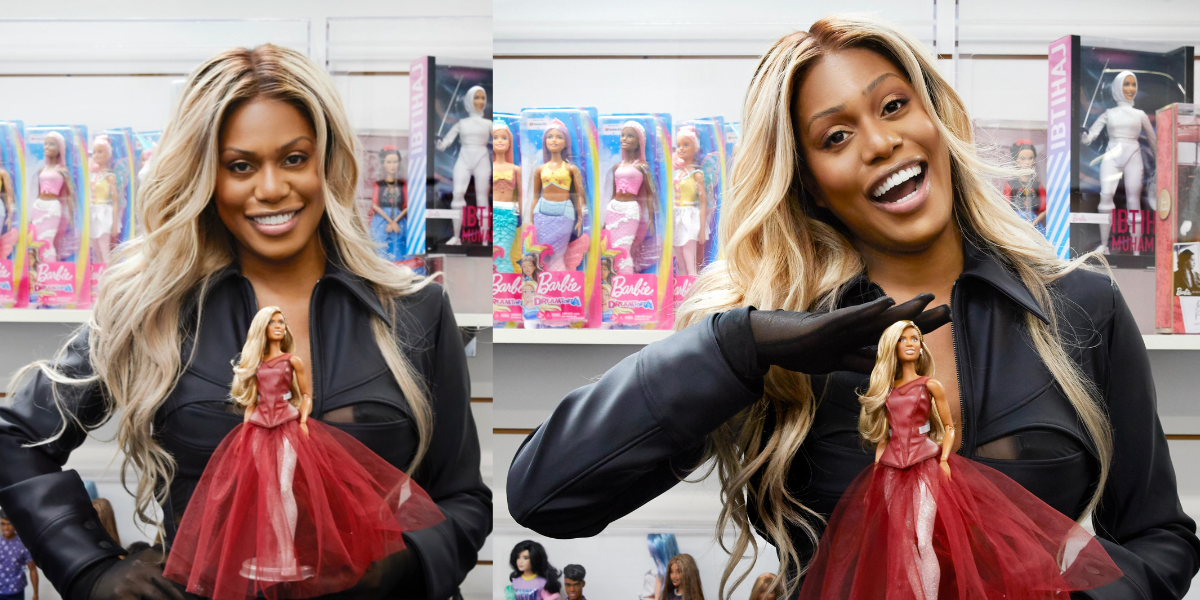
Photos by Elizabeth Braunstein for Mattel.
We can talk a lot about “reclaiming pink aesthetics” (and I can, do, and will!) — but also it’s worth remembering that Mattel is a corporation with a net worth of roughly $7.46 billion (yes that’s Billion with a B) dollars. Barbies are made to be bought. Barbies have also held a lot of emotional meaning. There’s a productive tension there, and I want to explore it’s impact!
Barbie, the Doll
The first thing I simply have to talk about here is actually not about Barbie herself — but the queer history of Earring Magic Ken. Oh what, you may ask?? Oh YES! When Mattel Said ‘No Homo’: How Earring Magic Ken Became an Accidental Queer Icon. With his lilac vest, he is also known as “Cock Ring Bottom Ken” depending on who you ask. His rise to fame overlaps with the early 90s, the mainstream-ification of Voguing, and the brief moment where HIV/AIDS finally became recognized as a national health crisis. Sadly by 1993, he had already found his way to Doll Heaven but we remember him for who he is: A legend.
While we are talking about gay Kens, let’s bring back an Autostraddle work that will one day certainly live in a museum for it’s pitch perfect cultural ephemera: 75 Lesbian Ken Dolls, Ranked By Lesbianism and it’s partner piece Your “Lesbian Ken” Community Photo Gallery.
With all that Ken business out of the way, let’s also talk about perhaps the most famous LGBT Barbie in recent years. In 2022, Barbie announced that, as a part of their “Tribute Collection,” the first trans Barbie would be modeled after Laverne Cox. Though we can assume Mattel did not do this intentionally, there’s also a nice thread here where — relevant to this syllabus — some Black trans women call each other “dolls” as a term of endearment. Laverne Cox’s Barbie was released right before her 50th birthday and if you think she celebrated with a Barbie themed party… you are gotdamn right.
Using both (accidental) gay icon Earring Magic Ken and (very real) trans and queer icon Laverne Cox, we’re asked to think about Barbie’s role in Rainbow Capitalism and the queer lenses that we place on the doll. I recommend starting that journey with this short piece, Beyond Rainbow Capitalism: Barbie Through The Queer Eyes.
Often when we’re talking about capitalism — especially in queer spaces — we are talking about the evils thereof. And I am not advocating for or defending the ills of capitalism here, but there are so many interesting explorations of Barbie and her meaning, none of which can be separated from capitalism itself. Earlier this week, I stumbled across this Twitter thread that compared Barbie’s wheelchair to someone in the real world.
barbie’s wheelchair vs my actual wheelchair: a critical comparison
aka the best twitter thread i will ever post
strap in#Barbie pic.twitter.com/k1nhWLE2IO
— Katie Pennick (@KatiePennick) July 19, 2023
Barbie, the Movie
All of this brings us to Barbie The MovieTM the real reason that we are all gathered here today. Greta Gerwig has set out to create a movie that both satires the pink capitalist, patriarchal structure that gave us over 60 years worth of Barbies and simultaneously create a loving homage to it — does she pull it off? I have no idea.

Greta Gerwig’s ‘Barbie’ Dream Job is a New York Times feature about the tensions of creating “art” for corporate dollars. I’d consider must read material before (or after!) seeing the movie — they provide audio accompaniment, so I listened while doing dishes.
Hari Nef spoke with Out Magazine about growing up playing the Barbie’s Magic Hair Styler video game and why, though she understands the importance of being cast as a Barbie as a trans actress, she doesn’t see this is as case of cut and dry ‘representation’: “Barbies are Barbies, they’re not human women. They’re dolls. They don’t have genitalia.”
It’s worth noting that even if Nef doesn’t see her role as a “trans Barbie” per se — the right-wing machine’s trans panic over the Barbie movie has skyrocketed as we’ve gotten closer to the premiere.
Ultimately, all of this leaves us someplace muddled! I tried not to dig too deeply into movie reviews for this syllabus, but I think Aisha Harris for NPR sews together a lot of the same themes I’ve been most interested in exploring:
“Stereotypical Barbie is rendered exactly as her name suggests: blond, thin, [presumably] straight, and Margot Robbie … i.e., the first image that likely comes to mind when anyone thinks of Barbie, as she herself proudly admits early on. Pointing this out is subversive, to a point. For all the brand’s exaltations about representing everyone – in recent years, to combat plummeting sales, Mattel has expanded the doll’s shapes, shades, and facial features – the movie is also admitting that the symbol that still looms large is white and supermodel-esque…. Yet Barbie’s limitations as a vehicle for substantial commentary are two-fold. For one, the execution is sometimes awkward, like a long, stilted monologue about how ‘impossible’ it is to be a woman because, The Patriarchy.
The other rub is inherent – critique can only mean so much when the entity under the microscope also happens to be the one writing (and cashing) the checks.”
Is ‘Barbie’ Corporate Propaganda or Malibu Metacommentary™? Why Not Both! The last word of the day.
That’s it! Class dismissed!
The Group Chat: How We Played With Barbies

Welcome to The Group Chat, a new series wherein the senior team discusses something relevant to the plot. And by “the plot” I mean the collective mileau of culture and current events that we’re all swimming in at any given time. This month: It’s Barbies because, well, whether you like it or not, it’s been pretty difficult to avoid talk about the upcoming Barbie movie. I asked the senior team how they played with Barbies as a kid (if they did), and to share their Barbie stories with us. Naturally, things got gay.
What’s your Barbie story?
xoxo,
Nico
Kayla: My sister and I were both extremely Barbie obsessed, and I’m glad our mother encouraged this obsession instead of turning it into a Barbie Is Not Feminist moment. She actually did two incredibly kind things for us pertaining to Barbies that stand out in my memory. My sister has Alopecia, and she lost all of her hair when she was a toddler. My mother ended up removing all of the hair from two different Barbie dolls so we could have a couple “Alopecia Barbies.” Even though she bought us a lot of Barbies through the years (once, for an elementary school project, my sister made a bar graph about our Barbies and I distinctly remember we had FIFTY TWO OF THEM), my mother thought the price of a Barbie Dreamhouse was absurd and instead MADE us a Barbie CONDO COMPLEX? She let us have an old plastic, huge shelving unit I assume she got through work (she worked in furniture sales) and we treated it like a multi-story Barbie home that we filled with a combination of official Barbie furniture and miniature furniture we made ourselves with the help of my mother’s crafting supplies and other scraps/samples from her job.
Carmen: Ok so first of all, your mom is an icon. Second of all, I also topped out at having over 50 Barbies as a kid! They took up over two shelves of my early-to-mid ‘90s bleached white wood bookshelf. But the real reason I am here! THE REAL REASON I AM HERE! is because my mother also would never pay for the price of a Barbie Dreamhouse, so she had her boyfriend at the time… build me one?
He worked in construction/architecture, and he went to Homo Depot (he was not a homo) to buy some plywood and built me a three story “Barbie Townhouse” — but did not buy any pink paint? He used the paint he had left over from his other jobs, I think. So her house had very plain and ugly “real world” colors like dark brown and gray! I know this is going to sound bratty as hell, but I fucking hated that house. 90% because I was like seven years old and I hated my mother’s boyfriend for not being my dad. But at least 10% because who goes through the work of building a Barbie house and doesn’t at least get some free samples of pink paint??
(I’m a brat. I know.)
Nico: Omg Carmen, I am picturing this, like, real-world-colored Barbie townhouse and laughing so much.
Kayla: I distinctly remember making a flat-screen television from cardboard and printing out a photo from Charmed so our Barbies could always be watching Charmed.
Riese: My Mom also loved having us make our own doll supplies for things she thought were overpriced, or finding similar products that were cheaper, like for my Samantha Doll! She also was like, very much anti-Barbie. All my friends had Barbies and I did not, which was absolutely tragic to me on every level. She said Barbie reinforced toxic ideas about how women were supposed to look. She did for Hanukkah one year get me Barbie-adjacent Black “Heart Family” dolls — they wore full outfits with high necks and were grown-ups with children which I guess seemed less problematic than a white blonde Barbie in a bikini going to surf at the beach with Ken? Anyhow they thrived in happiness on the bottom shelf of my bookshelf which is where I set up their whole apartment. I actually didn’t realize until looking them up for this conversation that Heart Family was a spin-off of Barbie also made by Mattel, I thought they were a different brand altogether!
Nico: The Heart Family doll clothes are SO 80’s, Riese. There’s a lot of lace happening.
Riese: Vaguely Mormon vibes, honestly.
Kayla: I feel like this is probably a cliche, but Barbies were absolutely my introduction to storytelling. I remember being young in the bath with a couple of Barbies — and Skipper, my favorite — and just going wild with my imagination, constructing whole serialized narratives for them with soap operatic twists. Also, my favorite Barbie hands down was my Mary-Kate Olsen one.
Riese: I think I did most of my storytelling with the historical paper dolls I collected, like these Dolly Dingle paper dolls? But I obviously did play with my friends’ Barbies. Mostly I remember my Cousin Carrie’s Barbies, because Carrie was so fascinating to me — I never felt like I knew how to be a girl or even like I was a girl, but Carrie had big blonde hair and a cotton-candy-pink bedroom and a bed with a canopy and she always had a boyfriend and she wore Guess Jeans and she was a baton-twirler and she had Christmas Barbie and Barbie Goes to Prom and like, whole crates of Barbies under her bed. When we played I sometimes made my Barbies naked not because I was a kid who liked being naked (I was in fact the most modest child to ever live) but because I wasn’t sure how to dress a doll with a body like that, you know? I didn’t know how to dress a woman. I was always latching on to girls who knew how to be girls, and those girls always had Barbies. My cousins got Christmas Barbies every year (I didn’t because my Mom said No Barbies for Riese) and their Moms (my aunts) had Barbie collections on display going back into the 50s. I was unsurprisingly more interested in the history of Barbies than the Barbies themselves. Obviously it was American Girl dolls that really captured my heart.

Riese: I think the Barbie I wanted the most was a Skipper, because Skipper felt less intimidating than Barbie and she had a gender-neutral name. Ken was cool, whatever, I understood Ken, nothing aspirational or mysterious going on there.
Nico: He’s just Ken.
Kayla: While we had over 50 Barbies, my sister and I had maybe…two?…Ken dolls. I think one of them was actually Eric from The Little Mermaid.
Riese: I definitely also had an Eric from The Little Mermaid figurine because I had a set of all the dolls from that film?? Eric in his white shirt and blue pants, Ariel on a rock, etc.
Carmen: Here I am, another one joining the Eric from The Little Mermaid hive!
Kayla: I had a Tara Lipinski Barbie that I was obsessed with for some reason even though I was more of a Michelle Kwan girlie, and she had these wind-up handles built into her sides so that she could be lifted and would spin! It was so cool. But I literally never let Ken or Eric hold her in the air to spin; it was always another Barbie or perhaps Teresa. I loved Teresa.
Anya: I am floored by all these different types of Barbies, I definitely didn’t know all this! I also think there’s a real business opportunity for Alopecia Barbies and that your mom should probably trademark that and go on Shark Tank.
Nico: Kayla, this is absurdly wholesome. I am also FASCINATED by this spinning barbie! I agree with Anya that there should be a line of Alopecia dolls!
Also, also, the making of your own furniture was Totally A Thing. Sometimes, dolls just don’t come with what you need! It sounds like your mom’s game was miles ahead, like wow, but yes.

Carmen: Okay, so, there are two Barbie stories that stick out most for me? One’s very serious and the other is incredibly horny. A fork in the road, and which path is best one traveled, who’s to say? But let’s do serious first.
So, I was a Barbie obsessed kid. There was no rhyme or reason for this obsession, my mother hated dolls, my closest aunts were the kinds of feminists who never would have bought me a plaything with a 39″ bust to match her 18″ waist, and I had no sisters. Barbies were probably the first thing that were entirely of my own, something innate about my femmeness that came from within me.

This was given to Carmen for her birthday just last month, in preparation for the Barbie movie.
It’s important to know this to understand what is still one of my worst childhood memories to share (because if you knew who I grew up to be, and yall do, you will immediately clock how embarrassing this is for me) but once when I was about two or three years old my mom took me to a toy store and took down a Christie doll — she was Barbie’s Black bestie — for me to have. I immediately, and resoundingly, had a temper tantrum in that store! And I mean, thee worst temper tantrum of my young life. The kind where you throw your little body against the dirty linoleum patchwork floor and wail. Where your whole tiny body shakes with every muscle within it. I did not want a Christie doll. I wanted a Barbie.
Because Barbie, white and blonde and blue eyed and an impossible body frame? “She’s pretty! I WANT THE PRETTY ONE!”
Miraculously, my mother did not grab me up right then and there — not that we were a spanking household, we weren’t, but again I’m talking about the magnitude of the scene I was causing as a toddler aged Black girl in a toy store over wanting the white doll, so I can only imagine what she was thinking. She let me cry it out and then she took me home, no doll in hand. And it was another few months before I was allowed a Barbie again. Straight up cold turkey withdrawal. (When we resumed Barbie buying in our household, a new rule was amended that for every white doll I was given or was bought for me, there had to be a Christie or Teresa doll, no exceptions, which certainly contributed to the massive size of my childhood collection.)
Nico: I have never forgotten what you shared about your mother’s parenting methods in this interview, and I have to say that I so deeply admire her intentional parenting.
Carmen: Ok! But! The second story is so much lighter!! As mentioned, I loved Barbies, which also meant that I had Barbies a little longer than most kids…. I probably didn’t put down the pink box for good until about seventh grade? Which meant that my Barbies got to live through the unfortunate onset of my puberty — the awkward intersection where you’re still not too old for dolls, but you have a lot of hormones to account for no place to put them.
I am so sorry to my Barbies for the last 18 months of our relationship. So much naked plastic smashed against even more naked plastic. So many inflexible limbs just thrown about recklessly. So little understanding of the world.
Nico: I do have to say that Barbies are maybe one of the WORST ways to learn about realistic human anatomy, and yet they are maybe one of the toys most subjected to hormone-driven sexual experimentation by toy proxy.
Riese: Right, like the idea of “Barbies scissoring” is an image that already exists in my head. I never did that with my dolls because I don’t know, I was a chaste child, but I know I’ve seen pictures somewhere of Barbies Scissoring. it’s like, in the zeitgeist.
Anya: For some reason, I don’t think Barbies were a big part of my childhood — or at least they didn’t make enough of an impression to be something I recall at a pivotal moment like this, when I’m trying to reflect on the import of Barbies in my life! To my recollection, I had one (1) Barbie, and the only defining characteristic I remember about her was she changed color in the bath. I remember when I took baths she was often there with me, changing colors like she does. I also am pretty sure I removed her hair and drew stuff on her head (yes she was that kind of Barbie and I was that kind of kid). But honestly, I don’t remember caring that deeply about her! I’m so sorry, Mattel. I’ve failed you.
Carmen: Ok but Anya this is literally the gay prototype. Kate McKinnon Barbie Realness.

Anya, you must choose.
Anya: I did have a lot of stuffed animals, though. The ones I remember are a dog (I think) named Princess and my favorite stuffed animal of all time — a cat named Sad who may or may not be here in Brooklyn with me right now as we speak. I do crack up every time I imagine my four-year-old self announcing that I have named my new stuffed animal “Sad”.
Nico: Why were Barbies also always bath toys? Also, lol Anya, I named one of my toys, at about age three or four, “Detour” because I thought it sounded creepy. Do you remember why “Sad”?
Kayla: SAD SOUNDS LIKE AN ICON!
Riese: I love this for you, such Eeyore energy.
Anya: Sad is absolutely an icon. I remember going to this toy store in San Francisco called The Imaginarium which was incredible because it had one human-adult-sized door and one human-child-sized door so you felt like you were getting your own special little PORTAL into this magical place. I saw Sad there and the way her mouth is shaped, she really looks like she is not smiling. I remember seeing this stuffed animal and being like, she gets it… she’s seen things… and I thought the name “Sad” best captured this animal’s wisdom. Four-year-old me was really not down with toxic positivity!!!!
Nico: I’m obsessed with this door situation.
Kayla: It feels relevant that I have a stuffed calico cat named Academy Award Nominee Kirsten Dunst, but I call her Kik or Kiki for short.

Nico: So, for me, the first, most visceral memory that stands out to me when it comes to Barbies is inevitably having to confront the fact that at any given moment, there were multiple Barbies of mine that could be found naked and tied up in the plastic bin. They were hog-tied, or just their wrists were tied, or their ankles were tied, or they were twisted and tangled up in enough string, twine or shoelaces so as to almost form a cocoon. Some people find kink later in life, and I guess, some kids just hit pre-puberty and are like I’M INTO ROPE. I’ll let you guess which one I was.
Riese: NICO
Nico: As far as Barbie games go, once again, on the bondage path, I was irrevocably and immediately impacted by the Xena: Warrior Princess episode, “Locked Up and Tied Down” which not only opens with Gabrielle giving Xena a massage, but which then involves various people being chained up and also flesh eating crabs. Now, no Barbie of mine was going to suffer a fate that terrible. That was Ken’s job. Specifically, that was the job of one of two Ken dolls I had, either the Beast doll from Beauty and the Beast, or a more generic brown-haired Ken who I’d modified by piercing his ears with a sewing needle and inserting glitter glue and scraping up his biceps with said same needle to give him tattoos (I definitely did at give him at least one heart pierced by an arrow tat).
Carmen: Sorry to interrupt your flow a little bit, but damn this is so gay and I am delighted. Please continue.
Nico: Hahaha thank you Carmen! When it was time for flesh-eating crabs for Ken, Barbie, their imprisoner and tormenter, would tie the Kens to the floor, where they would have to await their death. I’m sure this can be analyzed but why would you. I of course also played house, wedding, school, war, all the usual Barbie games.
Kayla: BONDAGE!!!! BARBIE!!!! I’m in awe! Like…I think I mostly have logistical follow-up questions such as how did you have so much access to rope as a child? Was it actual rope or more like yarn? Were you good at tying knots and if so where did you learn this skill?
Nico: I grew up in the country with ample access to rope, oddly? Like, I was provided my own spools of rope for play as a child because, of course, kids need rope. I remember just having this nylon rope in my wooden toy box that my dad (who had been a carpenter at one point) made for me. It wasn’t the softer actually-for-bondage kind, but the kind for various jobs around-the-house. In one instance, a group of friends and I devised our own pulley system, with our own rope, to get an abandoned wire spool up into a treehouse to use as a table. Rope was everywhere in my childhood! I also had yarn, thread, sewing needles, shoelaces, and endless cloth scraps to play with.
As far as tying knots goes, that was also something that adults sometimes indulged us in and that the kids taught each other. I remember, for example, morbidly, figuring out how to actually tie a noose and teaching the other kids. Some other kid taught me how to tie a slipknot. Knowledge! It’s beautiful!

Carnal knowledge! It’s beautiful!
Heather: The year my sister and I got the Barbie Dream House, Barbie Corvette, and Peaches & Cream Barbie from Santa, we also got an Atari 2600 with Asteroids and Cookie Monster Munch. I asked my dad recently how in the world this was possible. We were poor. He said he must’ve gotten some kind of bananas Christmas bonus that year at the factory where he worked making phone booths, or maybe it came from the local church, or maybe it came from his parents. Either way, it was magical. My sister gravitated toward the Barbies and I gravitated toward the video games, and that makes perfect sense because she loved femme stuff and I loved sports and nerd stuff.
I would have probably never picked up a Barbie if my sister hadn’t made the brilliant move of forming a town that included the Barbie Dream House and She-Ra’s Crystal Castle. She asked me to build some infrastructure with Legos, and then she used her saved up allowance to buy a Ken doll who had a black tuxedo with a pink cumberbund, which she said I could put on any Barbie I wanted. (I was nuts for tuxedos, even as a five-year-old.) Some days we put on elaborate fashion shows with Skipper and Catra. Some days we had wild adventurers where poor Ken would drive off a bridge in the Corvette and She-Ra and Barbie would have to do search and rescue missions in the lake (the bathtub). Sometimes poor Ken would get kidnapped by Skeletor and sometimes Barbie would rescue him and sometimes she’d just leave him to fend for himself in Castle Grayskull.
Carmen: I am living for this Barbie/She-Ra crossover that Netflix was too cowardly to give to us. But we deserve.
Nico: I have not once been jealous so far in this conversation until this moment when I learned that you had a Skeletor doll.
Riese: Same but also the She-Ra doll, I wanted one of those so bad!
Heather: One time, after our terrible neighbor Ivy came over and played Barbie/She-Ra with us, my sister’s favorite Barbie outfit — the California Dreamin’ blue and pink polka dot mini-dress with matching leg warmers and yellow sneakers — went missing. We thought for sure it was Ivy because we hated her because we always helped clean up at her house and she never helped clean up at ours. So we made an elaborate Home Alone-style plan to break into her house and steal it back. We drew up a map and everything. We were gonna go in dressed like Batmen because I had a lot of Bat-accessories (again, homemade by my great-grandma).
Carmen: Heather, I’m screaminggggggg.

Nico: If two children broke into my house dressed in home-sewn Bat-gear — well, I can’t figure out if I would be terrified or overcome with a giggling fit. Let’s not test that though…
Heather: Luckily, before we could commit a felony, we found the California Dreamin’ getup under the bed.
My great-grandma was not overly impressed with how Boob-y Barbie was, but she helped us make clothes for her anyway, including an Atlanta Braves baseball uniform. Barbie beat out poor Ken for the starting pitcher job, but he watched and cheered her on from the bench.
To be honest, I was kinda scared of Barbie the way I was scared of all beautiful women because I knew there was something going on with me that wasn’t going on with most girls. It was lesbianism that was going on, but it was the 80s and I’d never even heard that word or encountered the idea of being gay. I just knew I was different somehow, and I was already weird enough. I didn’t need some other oddity to add to the mix. So, like with most everything I was thinking and feeling, I kept it to myself and to my playtime with my sister, the only other person in the world I could trust. She knew somehow that boobs both fascinated and freaked me out, so she made a point of talking about them constantly like it was no big deal. And she kept doing that until I was 27 and finally came out to her.
Nico: I agree, Heather, that Barbie’s just, extreme boobiness was so disconcerting for a queer kid! The boobs are in your face, like freaking torpedoes! Impossible to ignore! And you just have to play and pretend like absolutely no one is fascinated by women’s bodies themselves.

This meme thing is easy-peasy-banana-peely.
Pop Culture Fix: What in the Lesbian Heck Is Happening in This “Barbie” Clip?
Does it feel like Pride is still happening? It feels like it to me! Maybe the whole of summer can just be Pride now? Let me know what you think! And also here is a Pop Culture Fix!
+ Okay there is no way in the world that Mattel is going to let Barbie be gay in the Barbie movie. Absolutely no way. And yet! What in the lesbian heck is this? There is no straight explanation on the face of the earth for this! PinkNews deep dived on it. Please discuss!
New clip from Greta Gerwig’s ‘BARBIE’.
“I hope no one from school saw us with a life-sized Barbie in our car!” pic.twitter.com/uyxSk0v6AG
— DiscussingFilm (@DiscussingFilm) July 4, 2023
+ 15 non-LGBTQ+ movies that queer people still love.
+ 10 songs that spark queer Latine joy.
+ Anime characters that made is realize we’re queer.
+ Buzz Lightyear werks at Disney World!
+ The glorious, queer evolution of Janelle Monáe’s pleasure and politics.
+ Celebrating TV’s chaotic bisexual characters.
+ Best LGBTQ+ movies of the 70s, ranked.
+ Melissa Etheridge wasn’t overly impressed with Rolling Stone’s list of most inspirational gay anthems of all time.
Dear @RollingStone…was it something I said?
“I don’t care what they think
I don’t care what they say
What do they know about this love anyway?” https://t.co/y4jq1KVPaT— Melissa Etheridge (@metheridge) June 28, 2023
+ Bikechess, a dark comedy about journalism in Kazakhstan, wins Karlovy Vary Works in Progress Award. According to Variety: “The Kazakh film follows Dina, who works as a journalist for the national television station. The stories she is asked to report on are becoming increasingly absurd and full of praise for the government. Her love life is limited to a few secret meetings with her married cameraman. Dina looks after her young sister, a lesbian activist, who regularly finds herself in trouble with the authorities.”
+ The power of pink: How Nimona uses color to subvert stereotypes and embrace self-expression.
Quiz: Which Barbie Are You?
It’s almost time for the Barbie movie, so obviously it’s time for all of us to start thinking about which Barbie we relate to the most. It’s probably been a long time since you played with Barbies — or, I don’t know, maybe not; I’ve got a shelf full of Lego Spaceman sitting right beside me — so I’m here to help with a very scientific quiz. Let’s go party!
Quiz: Which Barbie Are You?
Is It Just Me Or Is Vader Barbie a Femme Top Icon
Star Wars and Mattel just released a line of Star Wars Barbies and I’m pretty sure these are actually very good??
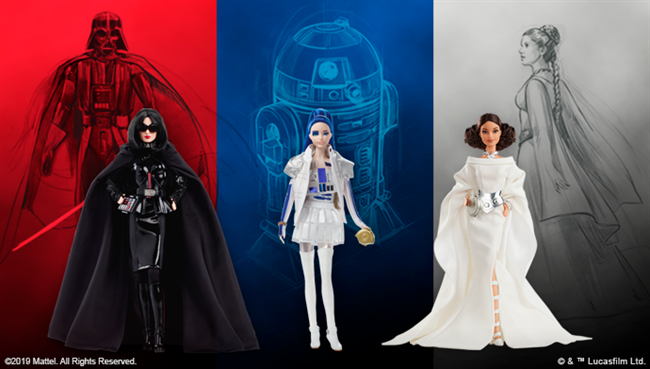
The Leia doll’s outfit is pretty straight forward, even if she does look more like Mila Kunis than Carrie Fisher for some reason. It’s even more high fashion than Leia’s usual clothing but these dolls are based on the original concept art, which was more flamboyant anyway. Plus Leia absolutely would have worn this when she wasn’t on the run.
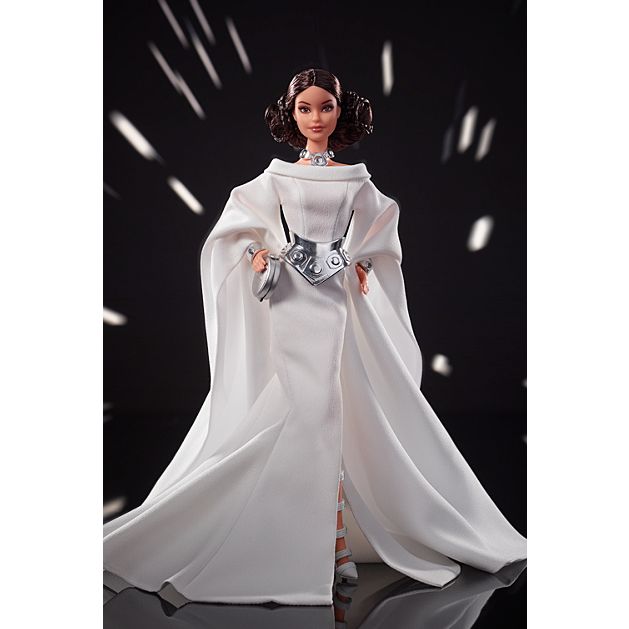
Then we have the R2D2 doll, and frankly this is where things start to get a little gay. It’s a very cyberpunk meets pop princess sort of look – which is gay, obviously – and to quote my fiance, “no one straight wears a collar like that.”

It’s when we get the Darth Vader offering that I begin to lose it.
I’m someone whose Star Wars obsession was peaking around about the same time I discovered I was into girls, so these two things are deeply connected for me. But I still never thought I’d be proclaiming any incarnation of Vader a queer lady icon. And yet. Just look at her. Look at that vinyl skirt, and the utter disdain on her face. Look at her boots.
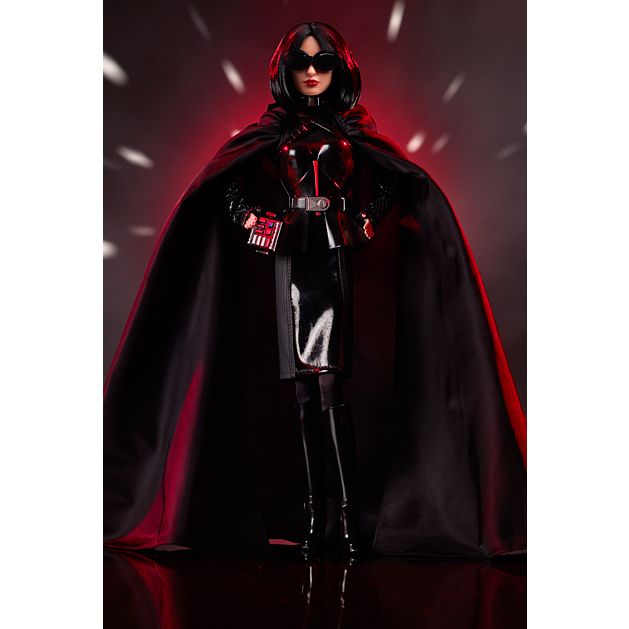
I’ve never seen a greater embodiment of the “step on me” evil lady meme in my life. I can’t believe I’m saying any of this and I also can’t believe that no one else is? Where are the rest of you? Why aren’t you out there on Twitter proclaiming her our new femme top queen? Have I just lost my entire mind?
I cannot be the only one seeing this. She’s already the best seller in the pre-orders so I know I’m not the only one floored by her greatness. I’d give a thousand Marvel movies for just one spin off about alternate universe anti-hero Lady Vader and her wife Padme travelling the universe, kicking ass and taking names. In those boots.
Pop Culture Fix: Look Out Lesbian Ken, Gay Agenda Barbie Is Here and She Looks Great
+ Bye, Batman: Coco Beats Justice League Over Holiday Weekend
+ A Mister Rogers documentary is coming our way via Focus Features
+ Daphne and Velma are getting their own live-action origin story in what I just learned is called The Scooby-Dooby-Dooniverse and I’m not just telling you that because I wanted to say Scooby-Dooby-Dooniverse. Here’s the wacky logline:
Before their eventual team-up with Scooby and the gang, bright and optimistic Daphne and whip-smart and analytical Velma are both mystery-solving teens who are best friends but have only met online — until now. Daphne has just transferred to Velma’s school, Ridge Valley High, a tech-savvy institute with all the latest gadgets provided by the school’s benefactor, tech billionaire Tobias Bloom. And while competition is fierce among the students for a coveted internship at Bloom Innovative, Daphne and Velma dig beyond all the gadgets and tech to investigate what is causing some of the brightest students in school to disappear — only to emerge again in a zombie-fied state.
+ The trailers for the new season of Black Mirror are rolling out; here’s the horrifying one directed by Jodie Foster.
+ Do you remember Tabatha Coffey, the lesbian stylist who was on the first season of Bravo’s short-lived reality series Shear Genius and then on her own show, Tabatha’s Salon Takeover? Well, she’s back in a show kind of like Tabatha’s Salon Takeover but this time she’s working with family-owned businesses only. Megan Reynolds over at Jezebel is very excited.
The added twist of Tabatha acting as an ersatz family counselor is just enough to keep me riveted. Scream at me, Coffey! Tell me my business acumen is trash! Give me your opinions about why the concept for my 24-hour “real estate concierge” service makes absolutely no sense! Bury me in your sharp-tongued opinions and shower me with your platitudes about family, my blonde, alien queen!!
+ Call Me By Your Name (or, as Erin calls it, Carol For Boys) officially inserted itself into the Oscars conversation last night, taking home Best Feature at the IFP Gotham Awards (aka the Iowa Caucus of the Academy Awards). Get Out, Atlanta, and Lady Bird were the other big winners.
+ BuzzFeed has some theories about why so many queer women are obsessed with Harry Styles.
+ Apparently inspired by all the attention lesbian Ken received, Barbie has decided to start “promoting the LGBT agenda” by donning a Love Wins shirt and paling around with this gal and her cat. Okay and they’re also sharing some avocado toast. See you at A-Camp, ladies!
+ Eden Riegel (aka Bianca Montgomery) loved Natalie’s post about Tessa and Mariah on The Young and the Restless
https://twitter.com/edenriegel/status/934612815234482176
+ Rana and Kate smooched on Coronation Street on National Coming Out Day and it gave some kids in the UK the courage to come out to their parents. (I’ll always have the softest spot in my heart for Sophie and Sian.)
+ The Good Place will be back for a third season during which Eleanor will no doubt continue to fawn over Tahani.
Your “Lesbian Ken” Community Photo Gallery Is Here
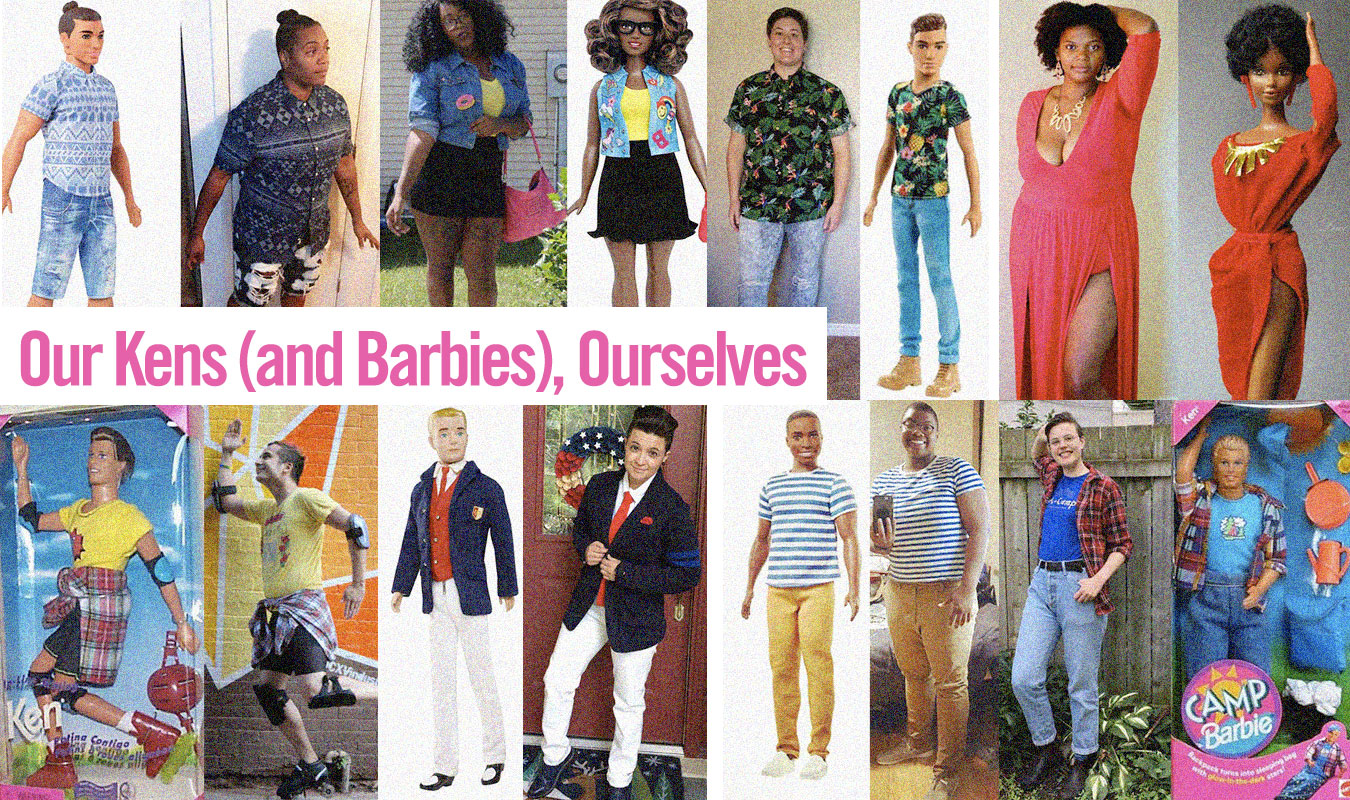
Two weeks ago Riese changed our lives for the better by introducing us to #LesbianKen – 75 Lesbian Ken Dolls, to be exact. As we examined the list together we recognized our exes, our current partners, and our selves in these dolls. We laughed, we grimaced, we tagged our friends who most reminded us of Lesbian Ken #18.
But then things got extra magical: We asked y’all to send us photos of yourselves dressed as your Best Ken Self, and oh my gosh did you ever deliver.
So here it is! A community photo gallery showcasing the best meme to ever grace our computer screens. In total we have more than 150 photos of queers dressed as Ken (and a few Barbies!). I now know that almost every one of you has the capacity to be Preppy Check Ken and also that a surprising number of you actually own a cactus t-shirt. What a world, what a world!
I hope viewing this gallery brings you as much joy as it has brought me to make it. Bless #KenOfCenter, forever and ever amen.
Note: If you missed our original call for submissions for this gallery but would like to be featured amongst the many and varied Kens, I’ll accept additional submissions throughout the month of July 2017. Email vanessa [at] autostraddle [dot] com with your Ken photo (please include an image of the doll you are mimicking) and your name, age, job, and location to be included in the gallery. Thanks!
Yas / 20 / Editor at Powered By Girl / London, UK
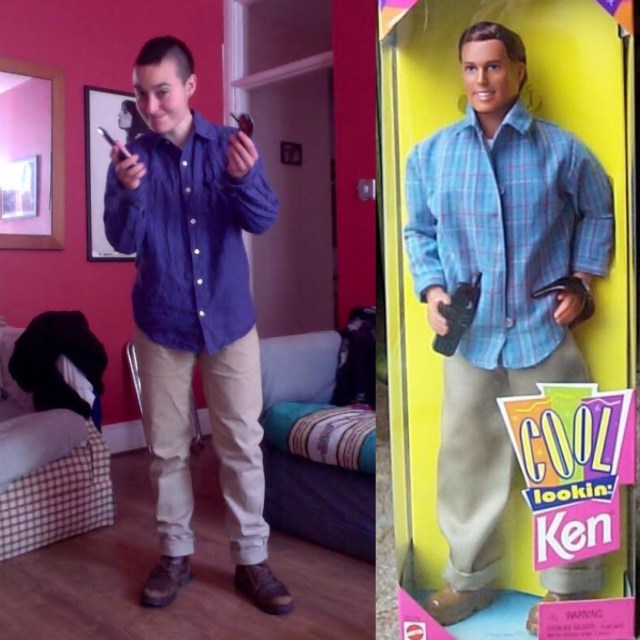
Vicky / 27 / Marketing / Madrid, Spain


Traci / 24 / works with young children with autism / Lexington, KY

Lena / 25 / Racial justice educator / Columbus, OH

Taylor / 31 / Writer at TechCrunch / Portland, OR
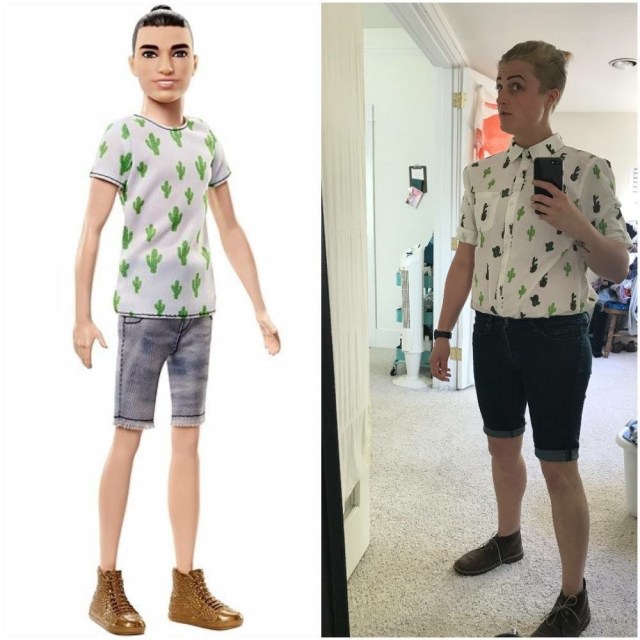
Stephanie / 25 / Teacher / Oakland, CA
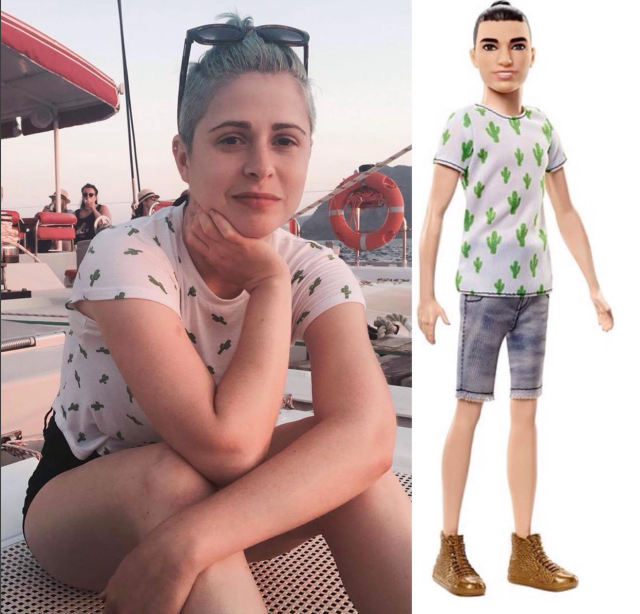
Stephanie / 24 / AmeriCorps VISTA; graduate student at the University of Louisville / Louisville, KY
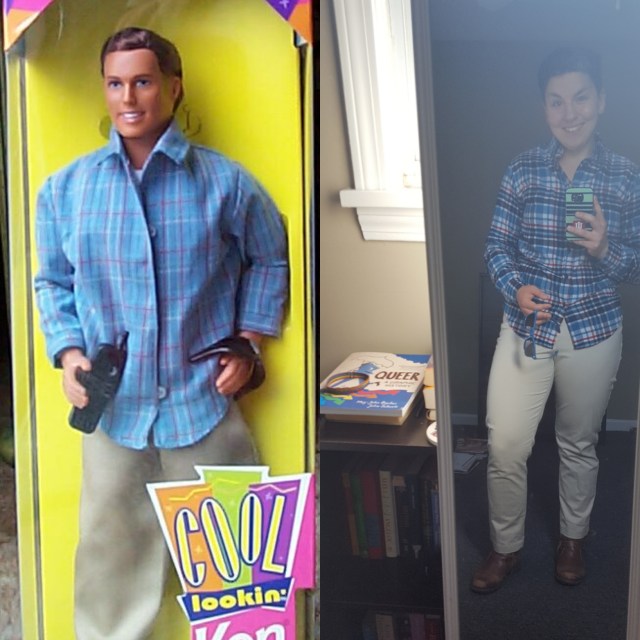
Stacy / 35 / Director of Student Programs & Leadership, Boston University / Jamaica Plain, MA
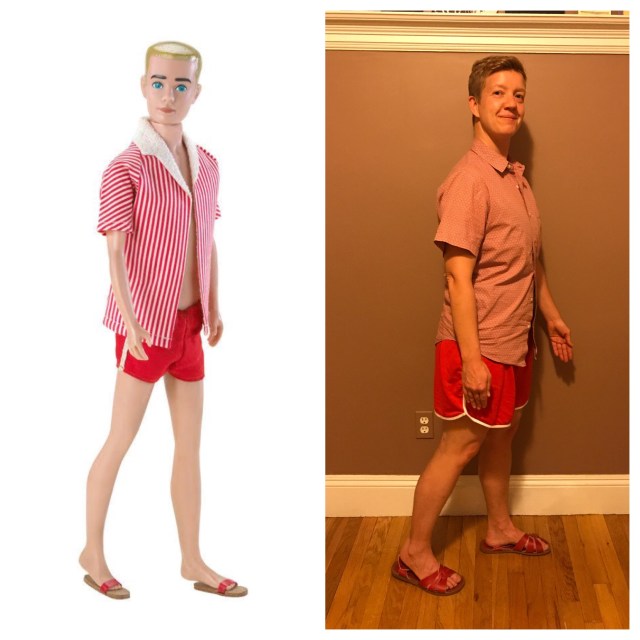
Speegz / 23 / Law student / Los Angeles, CA
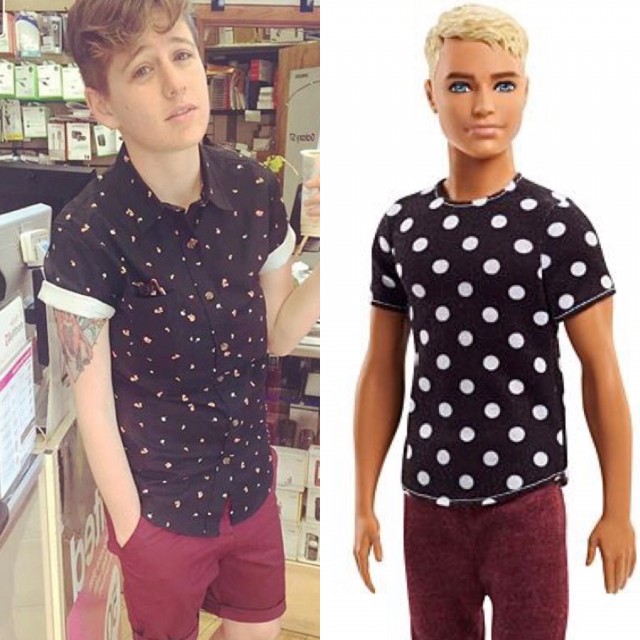
Sophie / 22 / Computer science camp instructor; transcriptionist / Rhode Island
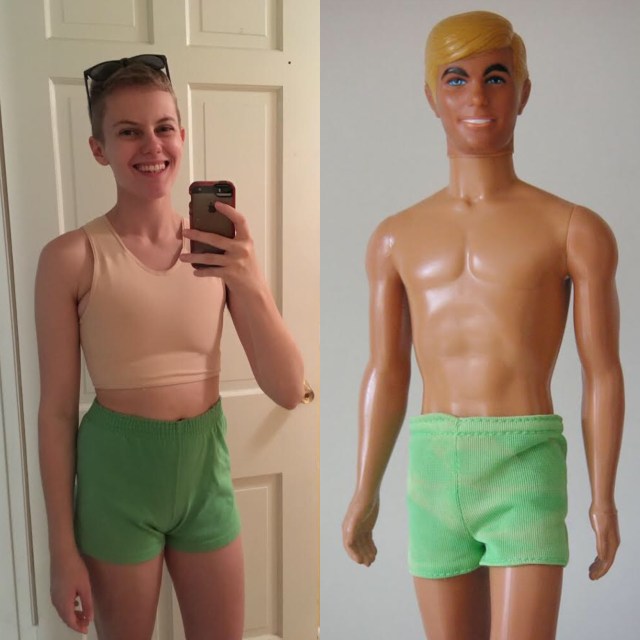
Shannon / 39 / works at a rehab facility for folks with acquired brain injury / North Hollywood, CA
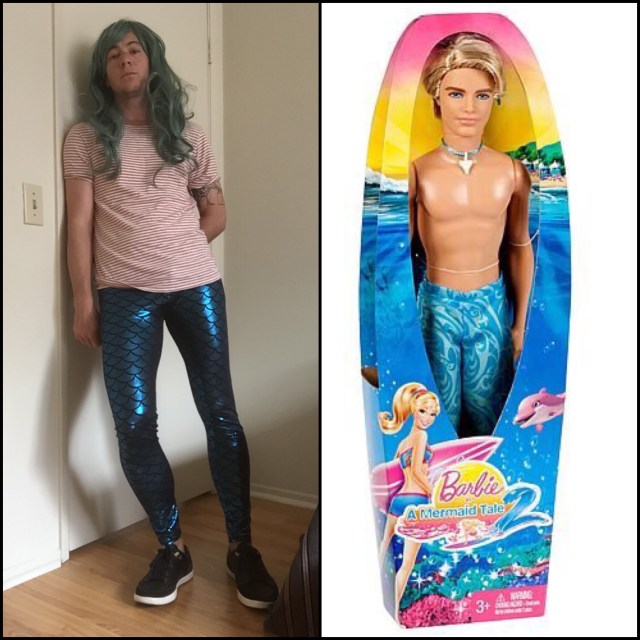
Sara / 30 / PhD student

Salome / 25 / Amateur merperson / Tampa, FL
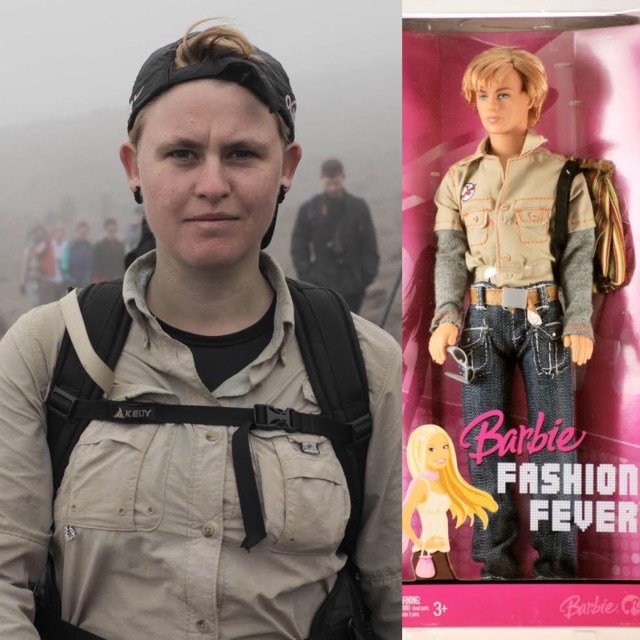
Rygon / 29 / Hustler clown / Wandering
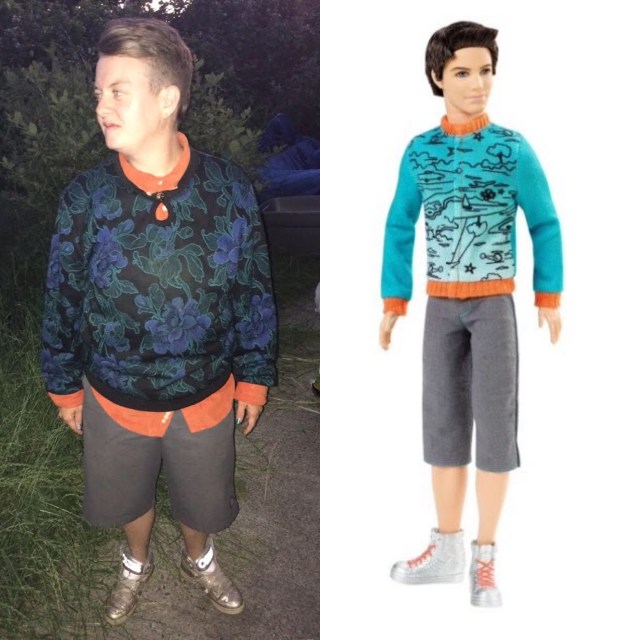
Robin / 32 / Teacher / Boston, MA
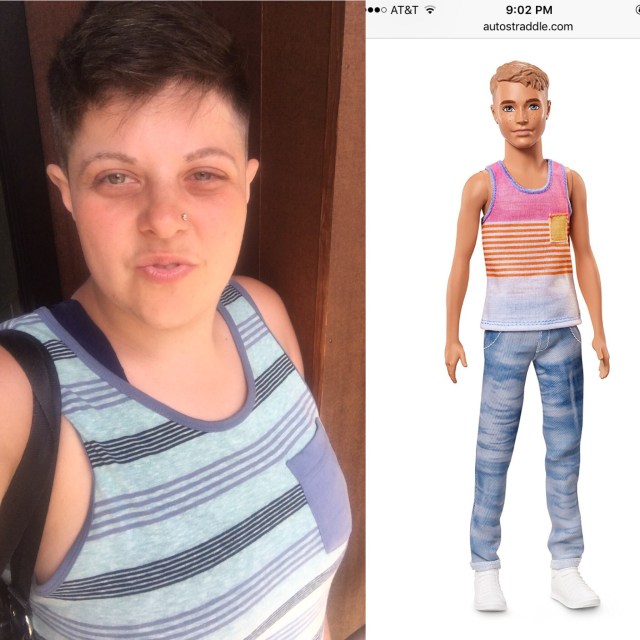
Reneice / 28 / Autostraddle Staff Writer / Los Angeles, CA
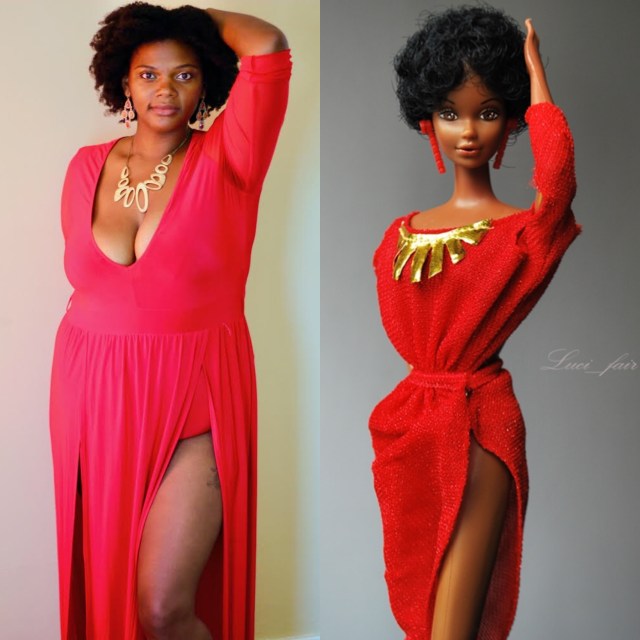
Renata / 25 / Data scientist / Cincinnati, OH

Rebecca / 19 / Student / Toronto, ON
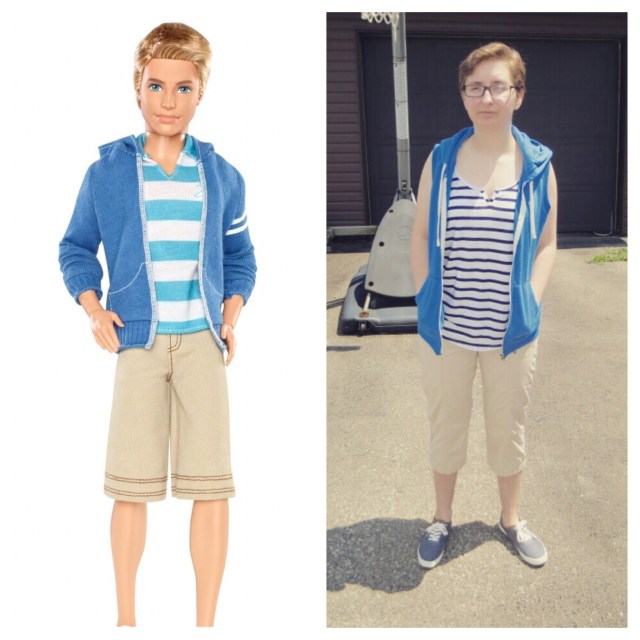
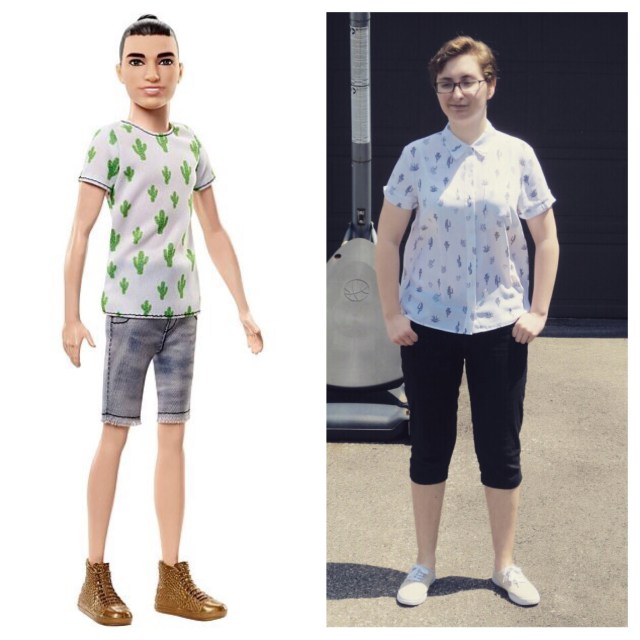

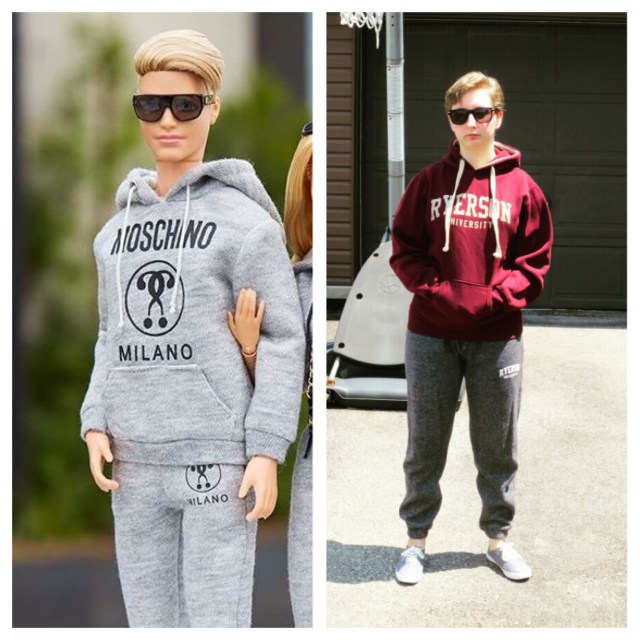
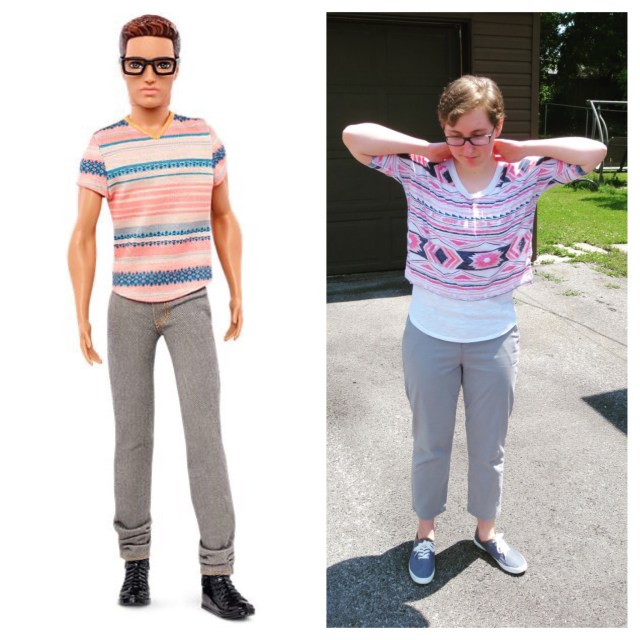
Ray / 34 / Philosophy professor and amateur poet / Palo Alto, CA
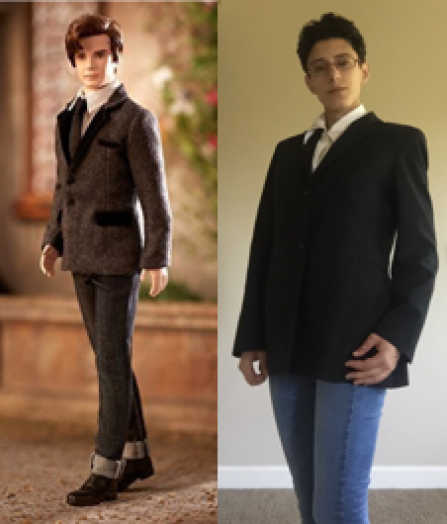
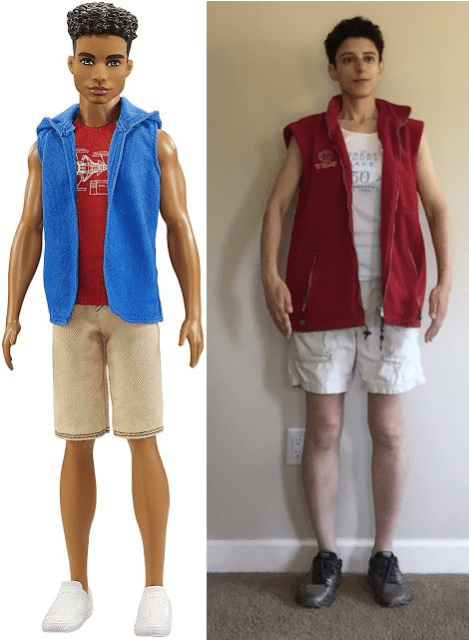
Rae / 29 / Teacher / Jersey City, NJ
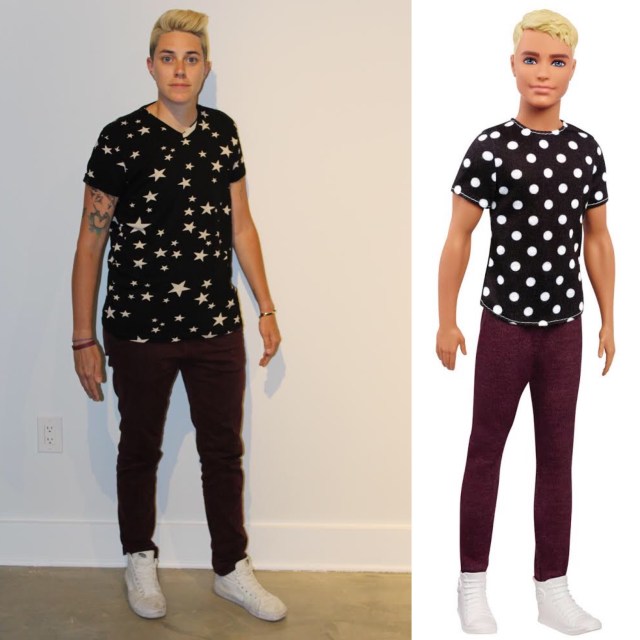
Rachel / 27 / PhD Student in Chemistry / Tel Aviv, Israel
Rachel / 27 / Salt Lake City, UT
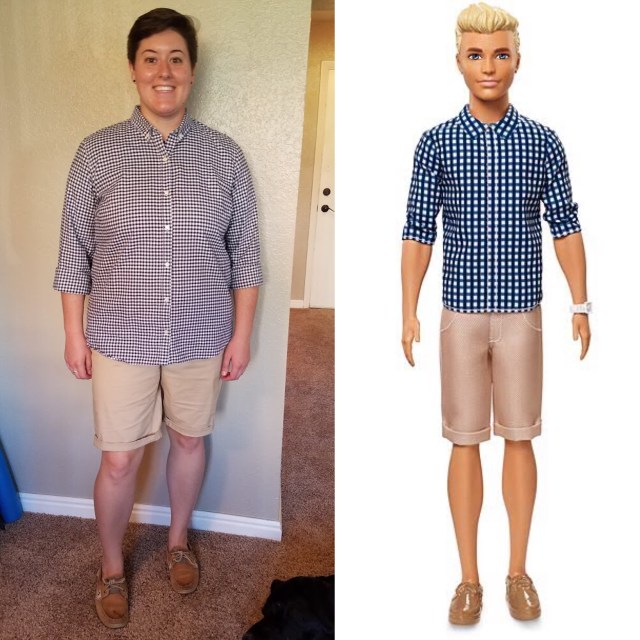
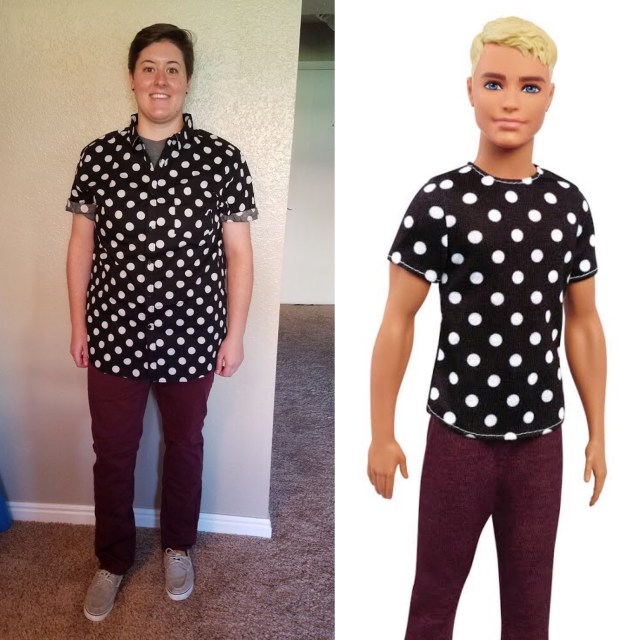
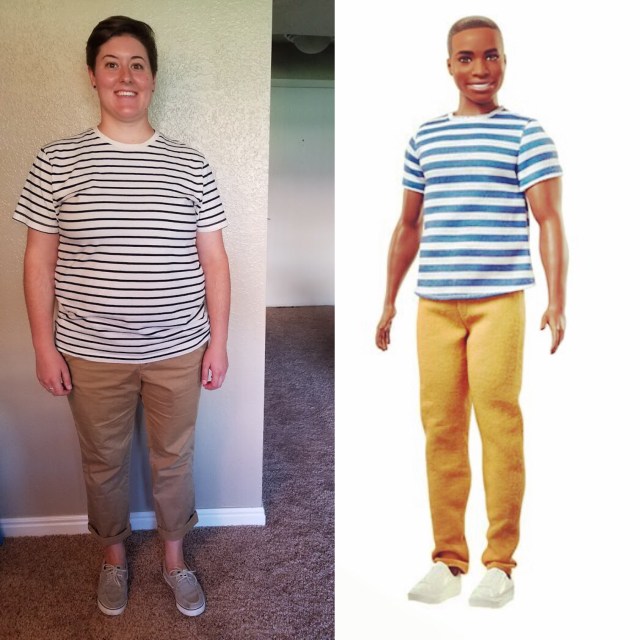
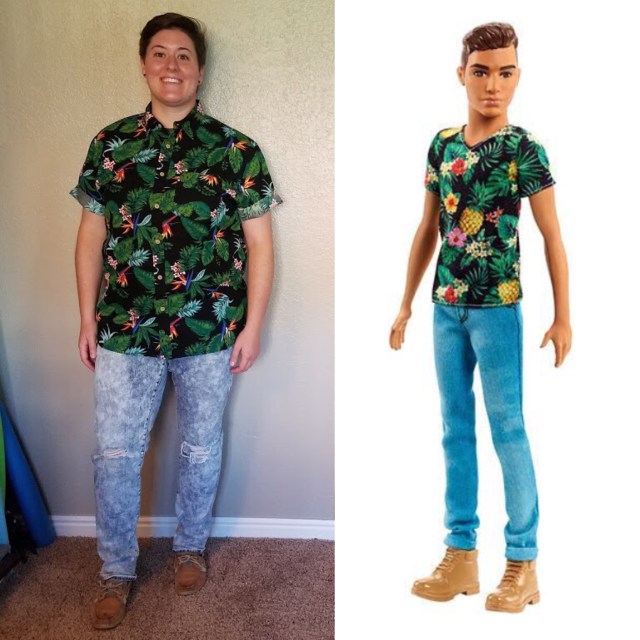
75 Lesbian Ken Dolls, Ranked By Lesbianism
If you’ve been hanging out on the internet lately, you’ve probably seen it: a creepy group photograph of all your ex-girlfriends, in doll form. It’s the New Ken Dolls, a Mattel roll-out that starts now and keeps on going indefinitely (many of the new Kens won’t be available ’til Spring 2018, EXACTLY LIKE YOUR EX-GIRLFRIEND)!

While it’s true that the New Kens are definitely lesbians, it’s also true that the Old Kens were lesbians. So, today I set out to definitively account for at least a solid chunk of the various lesbian Ken (short for “Kendall”) dolls that have come out since the beginning of Barbie-Time.
I was blessed to have the input of my team of queers here at Autostraddle.com, who shared their feelings on various Ken Dolls using our group chat on Slack.
Let’s begin!
75. My First Ken
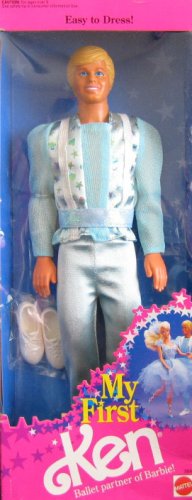
Cameron: Figure skates with her partner Marcia on the weekends, practices for the winter pageant
Dufrau: It’s Brigitte Nielsen
74. All-American Ken
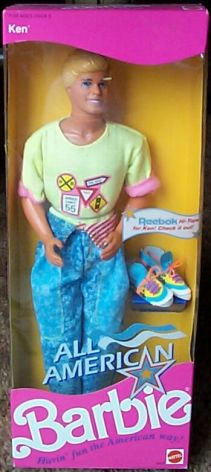
Dufrau: this color scheme is a nontraditional expression of All American.
Riese: traffic signs are apparently
patriotic
also reeboks
Jenna: i’m pretty into those reeboks actually
but i have questions about her jeans
are they like half-overalls somehow?
Dufrau: ohhhh thats the all-american part
theres a flag on the rolled down piece
Jenna: right but like, what if you roll it up
Dufrau: you never roll it up if you are all american
Jenna: oh right, my mistake
73. Animal Lovin’ Ken

Cameron: she’s a virgo, has exclusively lisa frank stationery. so a lot of it.
72. Route 66 Ken
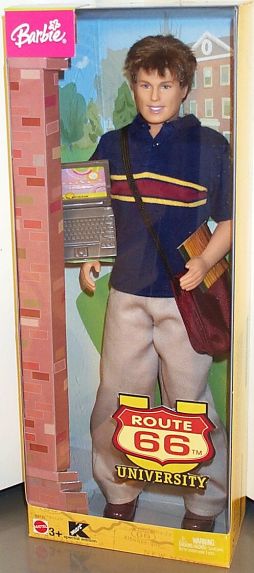
“Art is so cool. I’m really into computer graphics. This university has great classes. Got my laptop with me wherever I go. Check out the design on my screen. Can’t wait to meet Barbie after class and show her what our newest project is.”
– The Box For This Doll
71. Rappin’ Rockin’ Ken
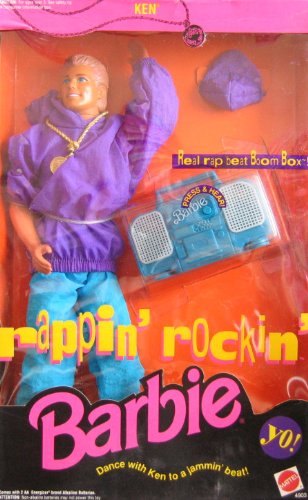
Jenna: yikes
Riese: yeah
Dufrau: oh no
Riese:
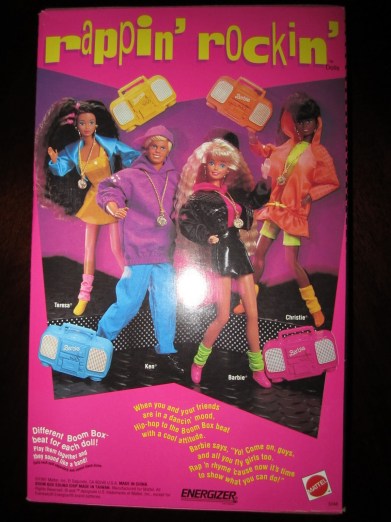
Dufrau: Everybody besides Ken here is Saved By the Bell, but Ken has not been saved at all
70. Totally Hair Ken
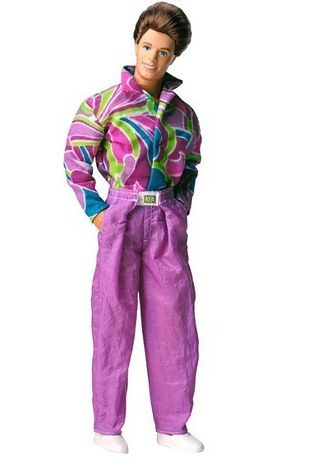
Molly: She looks like Bette Porter took her out to an opera one time in the 1990s
69. Concert Date Ken
Did you live in the suburbs in 2002 and listen to a lot of Newfound Glory? Congratulations, this is your ex-girlfriend. She’s got everything for a perfect date, including bleached tips!
68. Ken Sporty Fashionista
Dufrau: i just really don’t like this one
67. Moda Jeans Ken
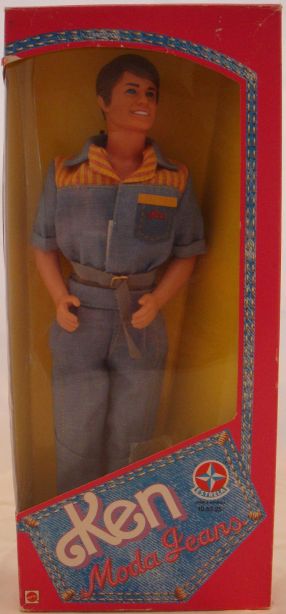
Cameron: I think I saw her at the big gay block party ohio straddlers hosted last year
Molly: I like this Canadian Tuxedo
Dufrau: she looks like she would be a good baker. that’s just a feeling i get. good cookies and lots of em.
Cameron: She’d def welcome you to the neighborhood with a jell-o creation. maybe a casserole.
66. Pop Life Ken
Stef: this ken plays rhythm guitar in like maximo park, she isn’t the cute one in the band but she makes it work
65. Naf Naf Ken
Mey: I’m not sure what’s going on here
Cameron: what the heck is a nafnaf
Dufrau: i don’t know but i think this ken was probably in Go Fish
64. Great Shape Ken
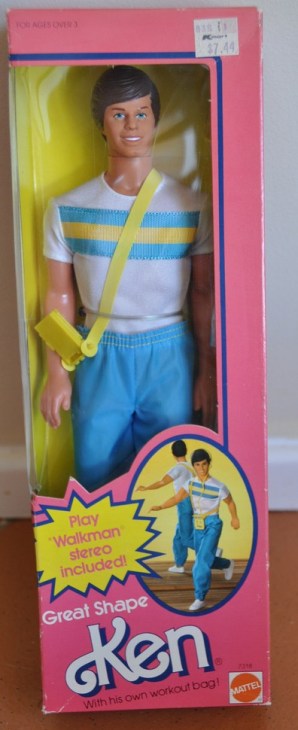
Says she got her outfit at Goodwill, actually got it at Urban Outfitters
63. Ocean Friends Ken
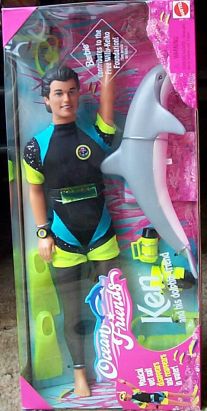
Stef: stop it
62. Ken Model 15
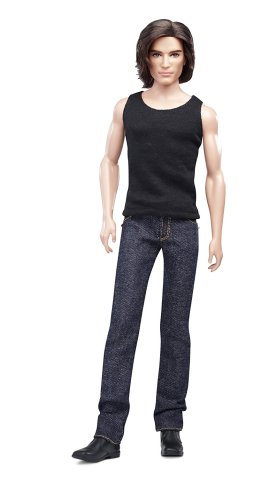
Dufrau: She looks like somebody Jenny Schecter would have dated for an episode or two
Mey: I’d date her
61. Fashion Fever Ken
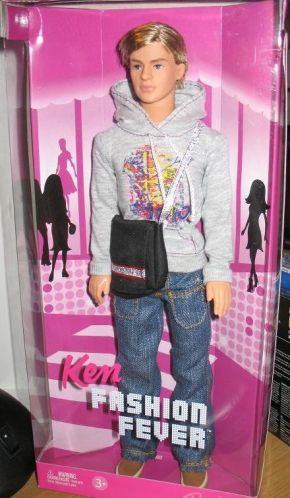
Cameron: are his jeans backwards
Dufrau: i probably wore this exact thing in high school tbh
60. Gianfranco Ken
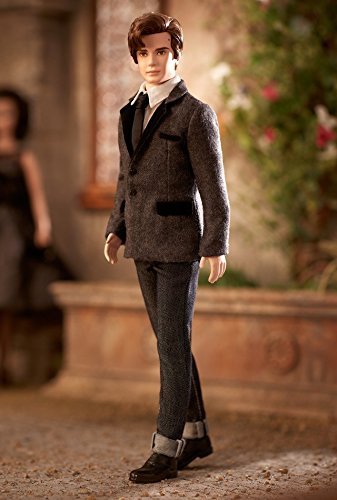
Dufrau: she looks kind of mean and i like it.
and kind of elderly which is probably the real reason i like her.
59. Harley Davidson Ken
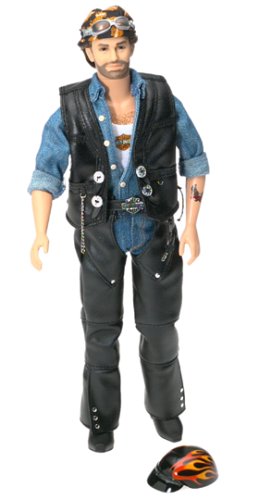
An obvious homage to Dykes on Bikes
58. Sporty Fashionista Ken
Stef: this ken’s dad is going to call back to speak to your manager and you are gonna be SO FIRED
57. Dance Magic Ken
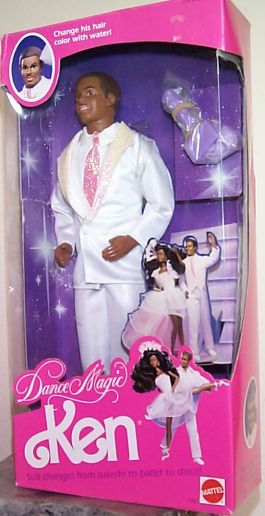
Cameron: you’ll never outdress her. everyone stop trying.
Jenna: i would go with her to a fun 80s queer prom
56. Beach Time Ken

Beach Time Ken has had a really intense summer!!!!!!!!!!!!!!!
55. Sun Sensation Ken
Stef: girl that mesh top
ken is a go-go dancer at hot rabbit but doesn’t like to talk about it
Jenna: sun sensation ken has definitely been awake for at least 36 hrs and she’s just running on cocaine and glitter
54. Doctor Ken
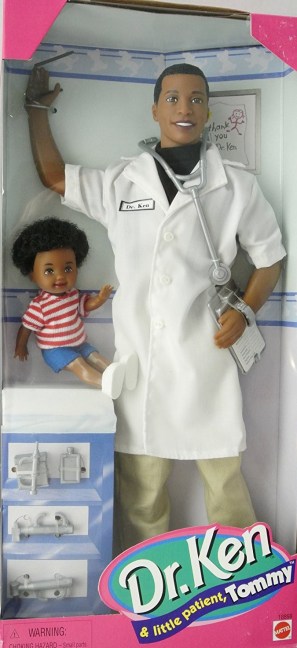
Even your grandmother who was only so-so about you dating women loves Dr. Ken. Like your whole family is so obsessed with Dr. Ken that they don’t even care that she’s not Jewish and they’re like, hang on to this one, don’t fuck it up! And you’re like YEAH I KNOW as if having a perfect girlfriend isn’t stressful enough already
53. Western Stampin’ Ken
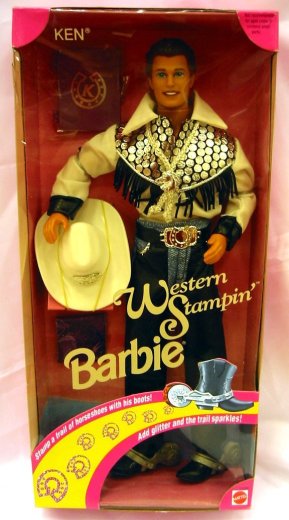
Cameron: I’ve seen western stamping ken at like every drag king show i’ve ever been to.
Mey: Western ken is the rodeo queen (a real thing) at a gay rodeo
Molly: Western Ken looks like they just had a weird feeling when their friend touched their new belt buckle
52. Cheerleader Ken
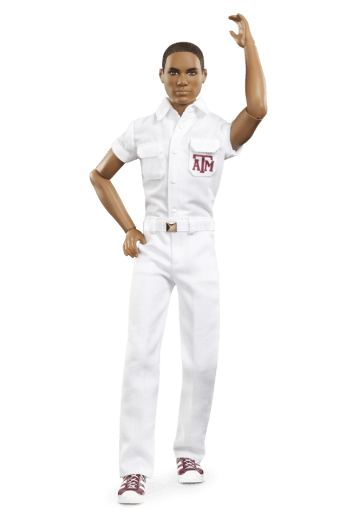
Dufrau: She could be the director of a utopian society
Riese: or the director of a dystopian society
Cameron: That girl in middle school who could never have a social life because of ballet class? look at her now. She has an accent for some reason.
51. United Colors of Benneton Ken
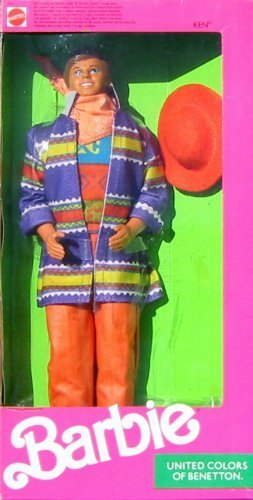
Ken has a house in Saratoga mostly decorated with stuff she picked up in New Mexico when she lived there for a minute back in the ’80s. She’s very sweet and inquisitive and she has two large dogs she loves to pieces but you know what now that you mention it, she never really liked camping as much as the other girls did. Another love would be women’s music, of course.
50. Photo Student Ken / Photographer Ken & Her Golden Retriever
At first she gave it a whirl because why not, she’s pretty good at Instagram?
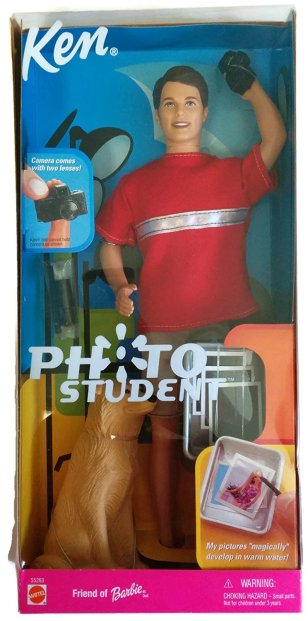
Look at her now!
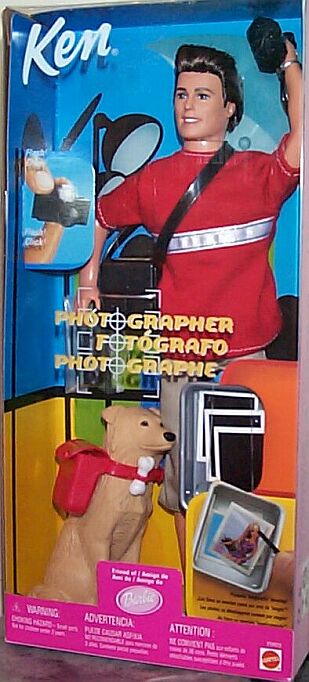
Her hair is so long and her dog has a fanny pack!
49. Art Director Ken
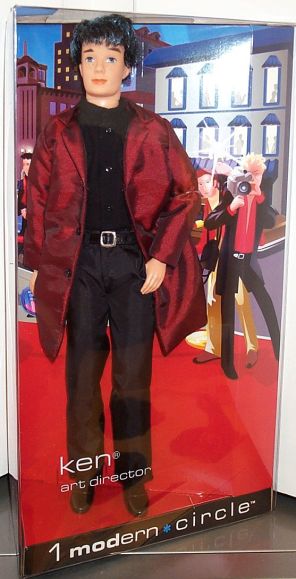
“You are cordially invited to the world premiere of Modern Circle Production Company’s newest movie, Love in the City of Angels.”
– The back of this doll box
Art Director Ken is an asshole to everybody except you and her entire apartment is white and spotless even though she has a dog. She takes you to cool events. You have a crush on her dog-walker but the dog-walker is apparently straight, which is problematic and offensive.
48. Victory Dance Ken
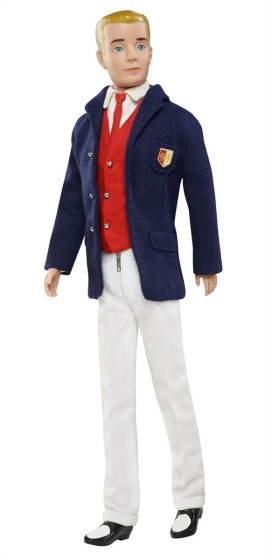
Valerie: She started an all-female Warblers in protest of the original and they only sing songs made famous by men but they don’t change the pronouns
47. Wedding Day Ken
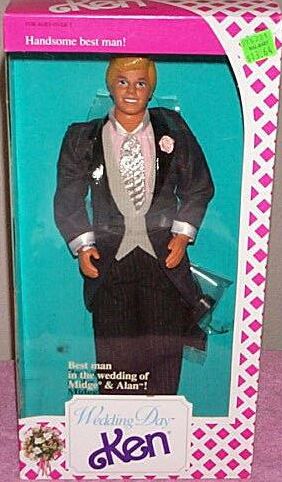
Ken is so excited that she finally convinced Alan to let her wear a suit instead of a dress to Midge and Alan’s wedding!
46. Earring Magic Ken
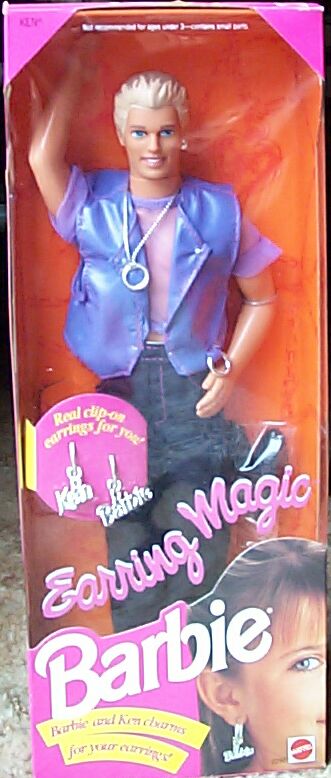
Dufrau: She was the bouncer at a Boston dyke night club when i was 22
45. Cool Lookin’ Ken
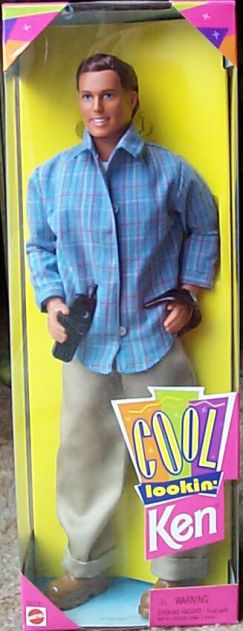
So truly this is me in 1994 wearing my Dad’s shirt from Structure and you bet your ass I’m wearing full-on boxer shorts underneath those GapKids khakis. I also have a pair of Joe Boxer underpants underneath the boxer shorts because I love layers and large telephones.
44. Skate Date Ken
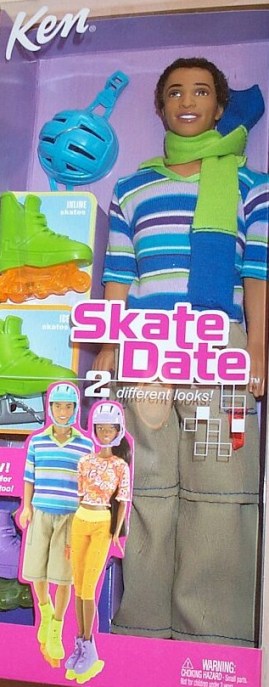
Molly: DO SKATE DATE’S PANTS ZIP OFF AT THE KNEE
because that’s all lesbians i know
43. All-Star Ken
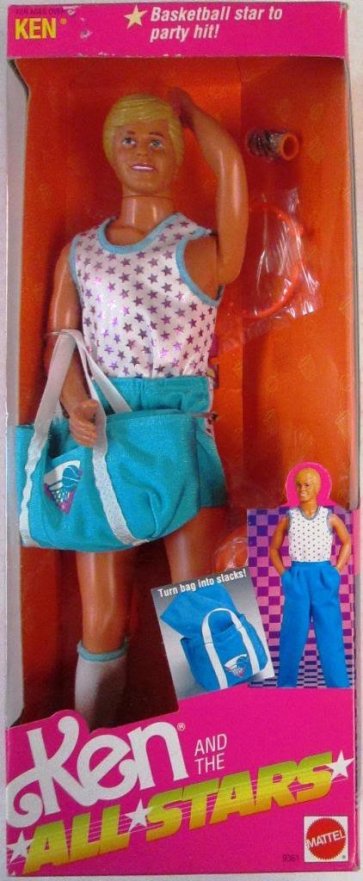
Mey: This is Claire, Jasika Nicole’s wife
42. Horse Lovin’ Ken
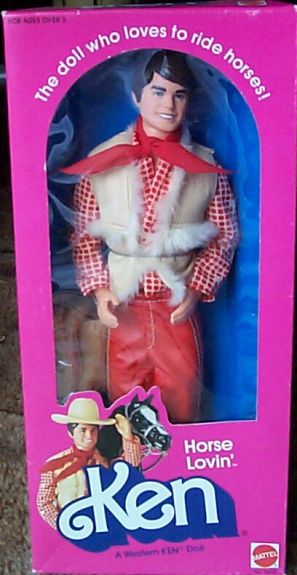
Cameron: She’ll steal your heart and your cattle
Mey: I’d definitely marry her
41. Adventure Ken
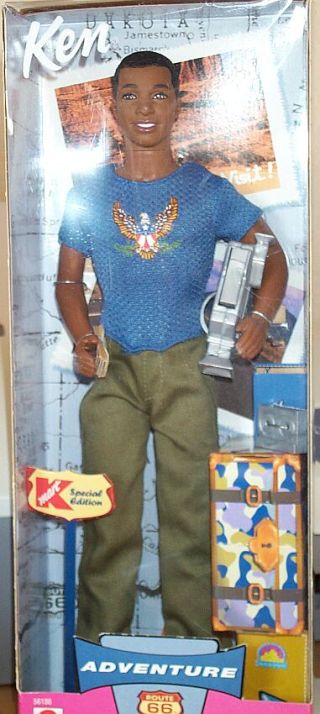
Sarah: Adventure Ken is basically exactly what a baby dyke would wear and bring to a lez bar for the first time.
Cameron: Adventure Ken was in Tiger Cruise the DCOM
Mey: Tiger Cruise the September 11 military family one?
Cameron: yeah
idk it was on a big boat
40. In-Line Skating Ken
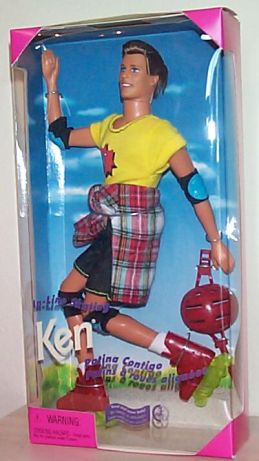
She goes by her Roller Derby name on Facebook because she doesn’t want her toxic stepfather to find her. She’s a really loyal friend and a downright incredible girlfriend and always puts safety first!
39. Movie Date Ken
Dufrau: ok this one is just me on laundry day
38. Sporty Ken Fashionista

Valerie: What are the 100 poses
That seems like too many poses
Riese: puppy eyes
all the poses are different ways of serving puppy eyes
Valerie: Ohh
Jenna: yeah she’s always the sensitive one when she and her friends pretend to be a boy band
Valerie: Blue steel
37. Stylin’ Stripes Ken (2017)
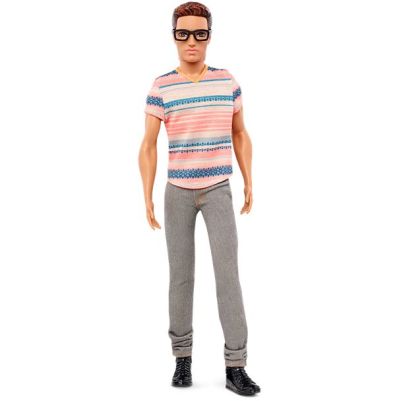
Cameron: you think she’s gonna tell you about how we live in a post-gender, post-racial society but she surprises you by being super woke & you’re totally disarmed & you kind of hate yourself for it
36. Busy Ken With Holdin’ Hands!
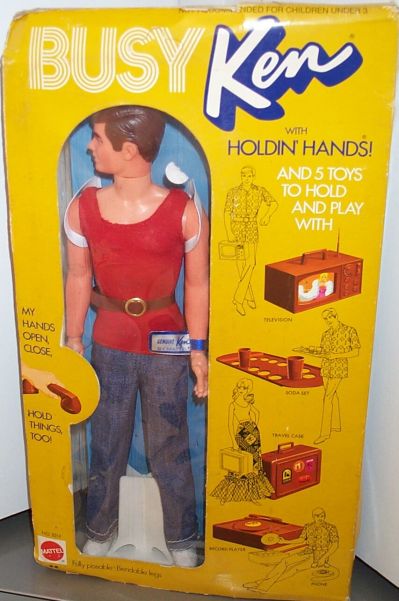
Stef: same
Molly: SHE’S GOT HOLDIN’ HANDS
Stef: you can tell she’s genuine bc she has that sticker on her hip that says GENUINE
Molly: I love the cinch belt
Dufrau: She seems very attentive
Stef: Bringing you sodas
putting on some mood music
even answering your phone
Molly: “hey babe i saw your twitter rants today and picked up some calming lavender bath bombs”
Stef: she can’t be that busy
Molly: i don’t know how she does it
maybe we can have it all
35. Color Blocked Cool Ken (2017)

Cameron: i’d wear that.
Riese: yeah because this doll is you
Cameron: you might be right
Jenna: honestly i’d wear at least 75% of these outfits
Dufrau: yeah this is nice
34. Ken Fashionista Checkered Shirt
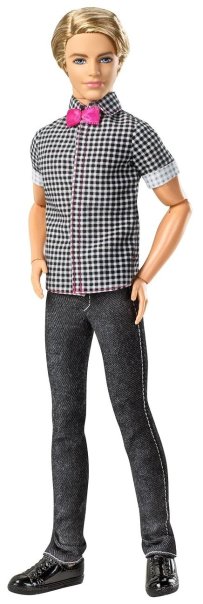
Stef: i think Deanne Smith owns this exact outfit
how does her hair even make that shape
Jenna: fucking dapper ken is wearing another outfit of mine what the fuck
step OFF, ken
33. Vintage Ken Doll With Matte Hair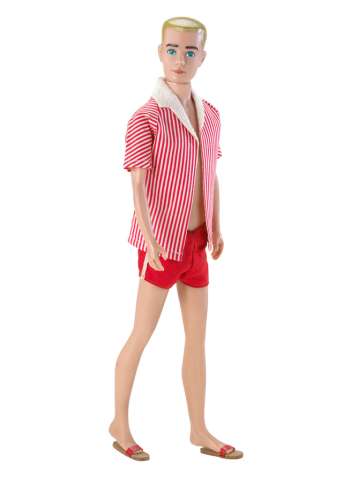
Ken just got to Los Angeles from Missouri and before moving had really only ever hooked up with straight girls (there was like this whole THING in high school). She isn’t looking for a relationship, but she keeps falling in love with incredible women / making out with strangers at The Abbey / not knowing what to do with all these new feelings
32. Fashionista Ken Cutie
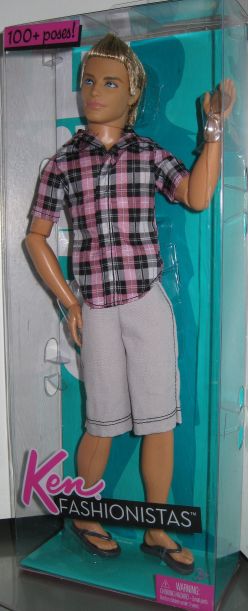
Dufrau: She dated two of my best friends sophomore year of college and ive never forgiven her for her behavior
Sarah: Cutie Fashionista Ken is the first time you get a dyke spike after listening to Viz by Le Tigre
Cameron: Cutie Fashionista Ken kept trying to be the Shane of the friend group
31. Sweet Talking Ken
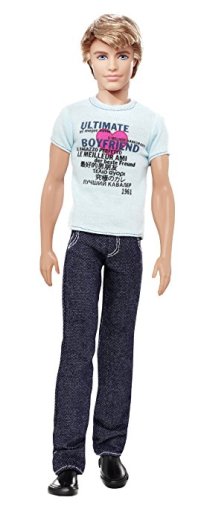
Cameron: The actual Shane of the friend group & everyone’s mad about it
Dufrau: i think sweet talking ken looks like she used to be more buttoned up but then Shane gave her a makeover
30. Glitter Beach Barbie Ken

This is a lesbian who usually dresses on the masc side but always femmes it up for a thematic dance.
29. Tennis Stars Ken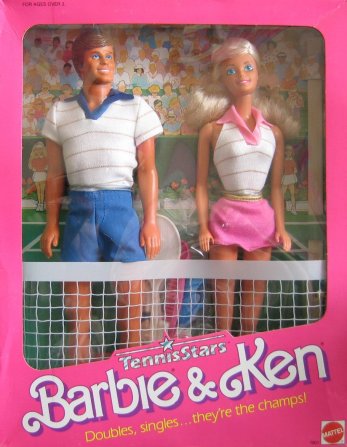
Ken really oversold her experience with tennis on her first date with Barbie, which came back to haunt her five months later when it was time to go play tennis with Barbie’s parents, who were skeptical about Ken since Barbie has blown through so many girlfriends lately. Good news: Ken turned out to be really great at tennis, and you know how it goes: doubles, singles… they’re the champs!
28. Free-Moving Ken 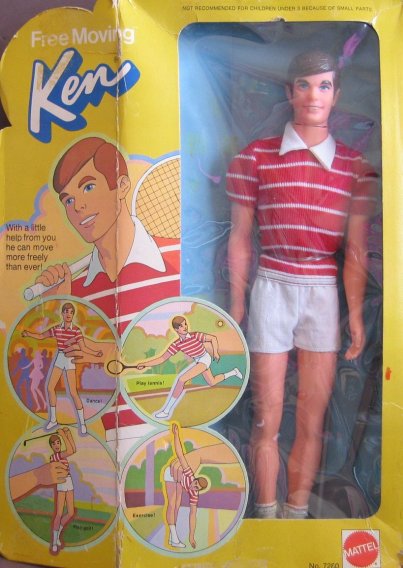
It’s cool it’s not like they were soulmates! Ken’s fine. Ken’s totally gonna be fine.
27. Red White ‘n Wild Ken
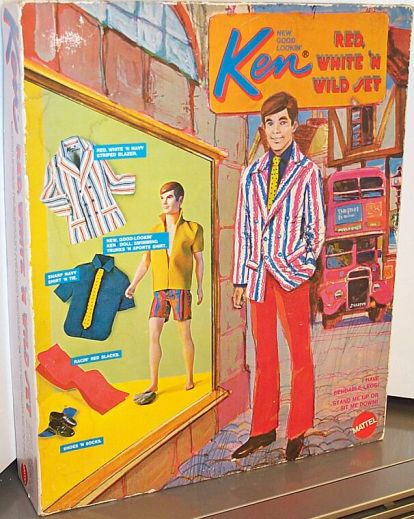
Cameron: based on cynthia nixon’s wife’s tie at the tonys, i think she’d wear that coat
Alaina: rojo caliente the love of my life
26. Hip Hoodie Ken

Jenna: she likes to cuddle
Dufrau: she has a great haircut
25. Camp Ken
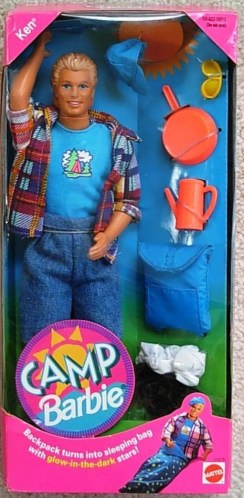
This is the blonde version of my ex-girlfriend, Marni, the co-director of A-Camp and an outdoor enthusiast.
24. Video Game Hero Barbie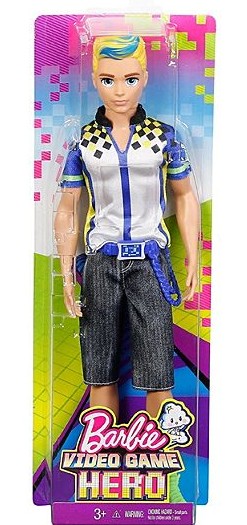
Dufrau: Guy Fieri?
Mey: No that’s rainbow dash the lesbian pony from my little pony
23. Moschino® Barbie® and Ken®
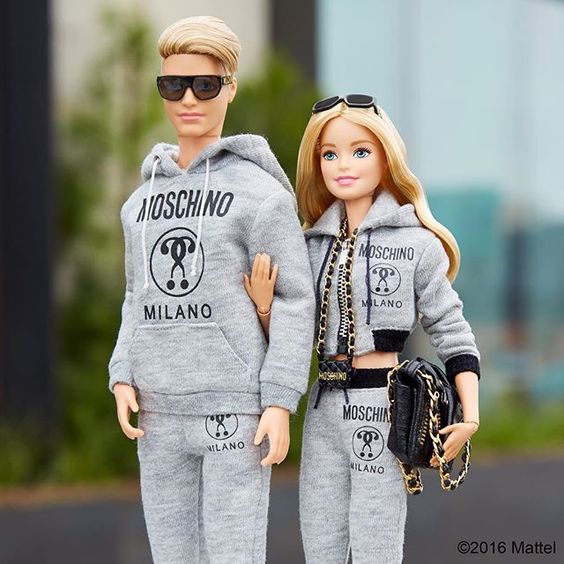
Look me in the eyes and tell me this is not Nats Getty and Gigi Gorgeous.
22. The New Look Ken
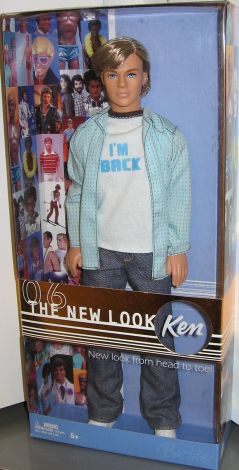
This is what your ex wears when she drives by your house on her way home from work just to see if you’re around
21. Rainbow Prince Ken

Cameron: Well you can’t prove that she WASN’T a unicorn in a past life
Dufrau: She hosts a children’s show but adults watch because she is so soothing
20. Talking Busy Ken
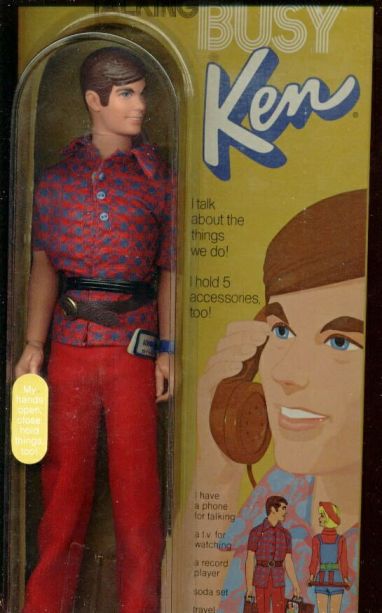
Ken talks! She talks all the time! That’s been a big thing in your relationship, is both of you learning how to overcome your fucked up childhoods and communicate openly about your emotions so things don’t get bottled up. Ken’s having a tougher time accessing her emotions, but she will definitely talk about the things we do! Here’s what Ken will say:
- I’ll bring my guitar to the party.
- Help me pack for my vacation.
- Have you heard Barbie’s new records?
- Come on, let’s dance.
- Hi, this is Ken (as if he was speaking on the phone).
- Barbie’s a great cook.
19. Beachy Tropical Shirt Ken (2017)
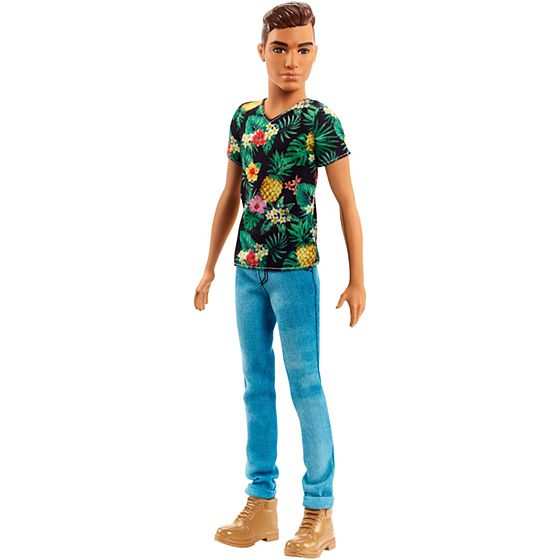
Cameron: this is the outfit my friend wore to her bachelorette party. i’m not joking.
Dufrau: this is when you have a friend who is cuter than you and you’re just like “how the fuck??”
18. Preppy Check Ken (2017)
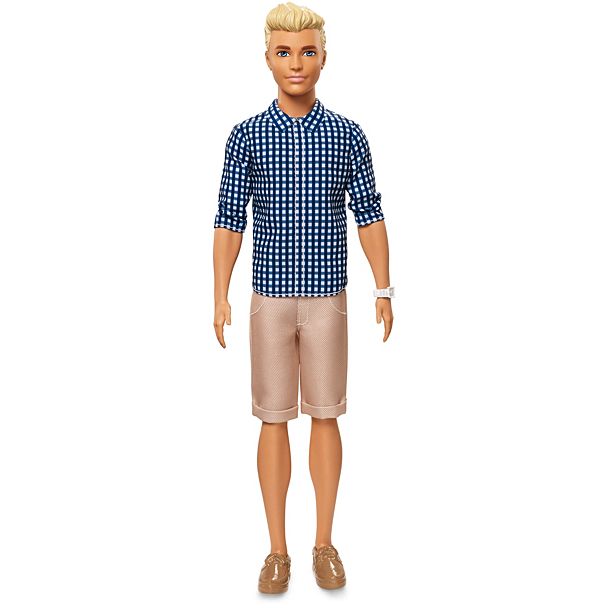
Jenna: gd i would also wear that one
ugh
Cameron: dressing just patriotically enough not to be called out at the family 4th of july cookout
17. Barbie & Friends
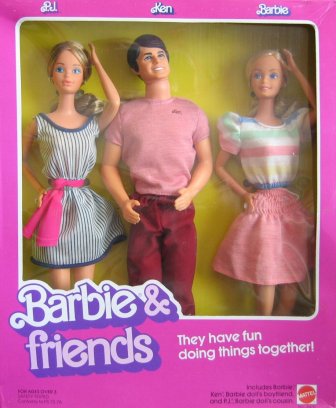
Ken is poly and has “fun” doing “things” with her “friends.” Look how happy she is!
16. Hyped On Stripes Ken (2017)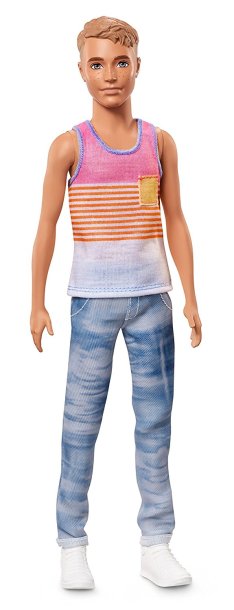
Cameron: this is just every summer gay.
Dufrau: this is Jenna Lykes except blonde. A COMPLIMENT I PROMISE.
15. Cali Cool Ken (2017)
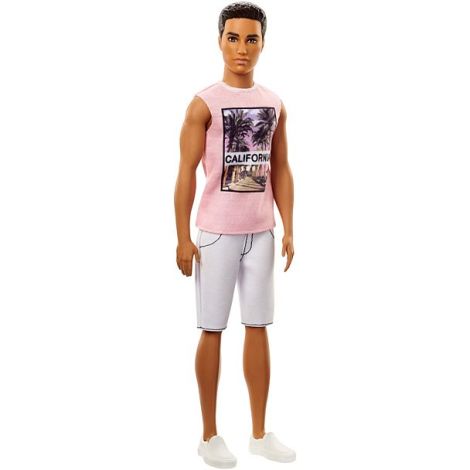
Cameron: also every summer gay
Jenna: I feel like cali-cool said she would call you back, but she definitely didn’t call you back. And even though you didn’t really WANT her to call you back, it’s the principle of the thing.
14. Checked Style Fashionista Ken (2017)
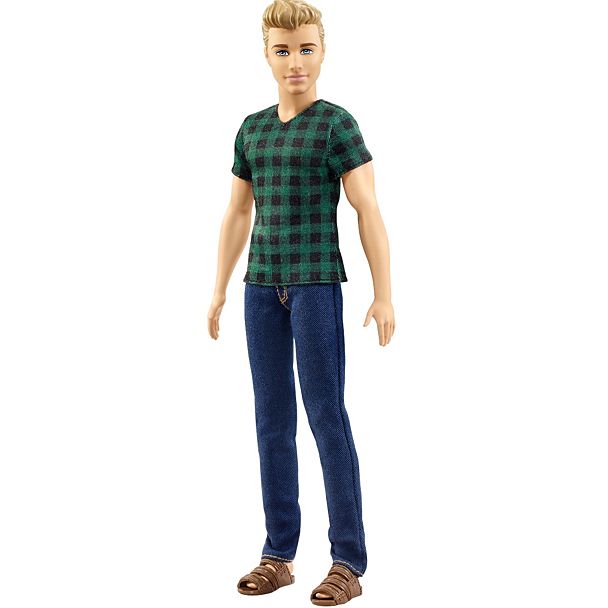
DON’T LOOK AT ME LIKE THAT
13. Classic Cool Ken (2017)
Jenna: oh man, she’s very hot
Dufrau: hot
Jenna: having some feelings about a doll rn
Cameron: she helped me find a book i was looking for a gender studies research paper & suggested something better. i revised my thesis.
then changed my major to joan.
12. Art Director Ken
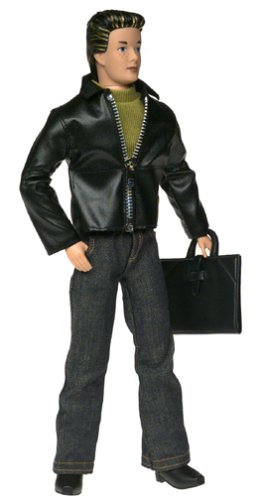
Art Director Ken #2 is also an asshole but you deal with it ’cause she always gets bottle service for the table and has lots of stories about Closeted Power Lesbian parties in Palm Springs that happened in the late ’80s / early ’90s and she’s your only source regarding the possibility of Jada Pinkett-Smith being bisexual
11. Camo Comeback Ken

Cameron: She lost her snapback on a rollercoaster at Universal Studios.
Will not let you forget it
10. Big Brother Ken
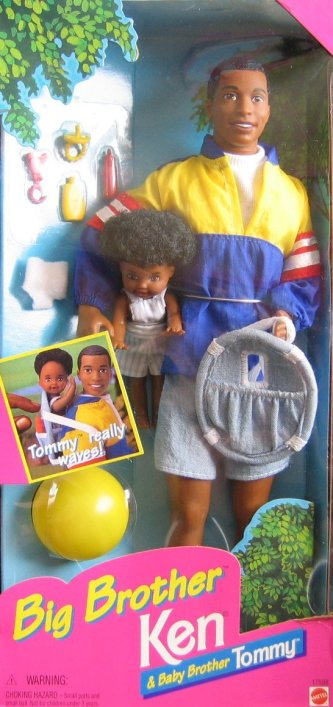
Mey: Big brother ken is def a hot lesbian mom
Jenna: yeah, and she also owns a subaru
Mey: She ignores Sarah Pfefferman at PTA meetings
9. Fashionista Cutie Ken
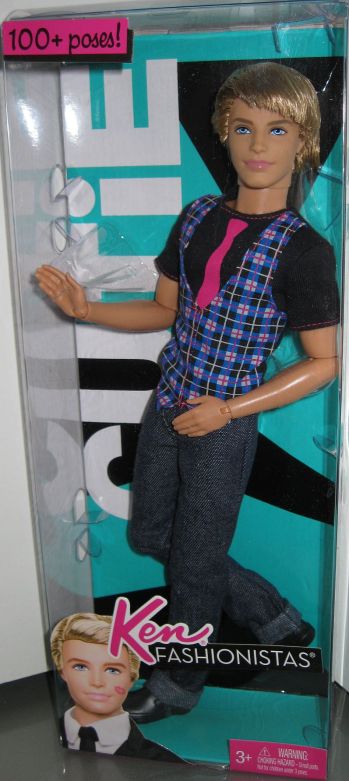
Jenna: fashionista ken just came out
Dufrau: I think almost everybody has been this ken at some point
8. Cactus Cooler Ken (2017)
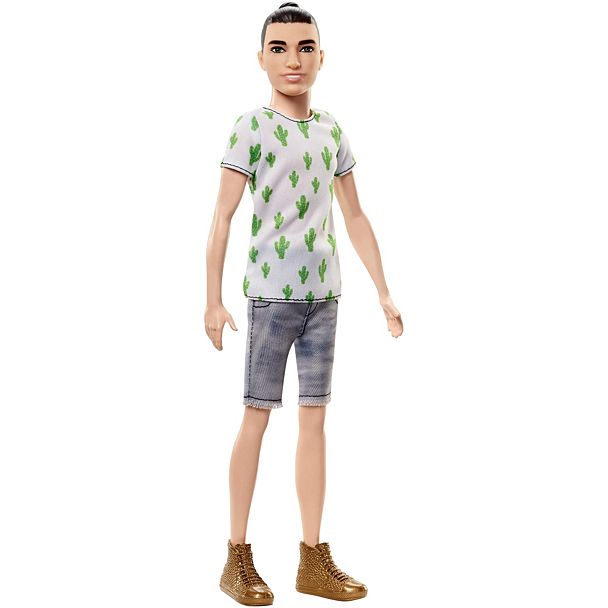
This outfit cost $400
7. Mermaid Ken
Mey: Based on the hair and necklace I’d say Mermaid Ken is a lesbian mermaid who is wearing a magical necklace that makes her human but bc magic is tricky, also a dude and she won’t turn into a woman until she kisses a girl or figures out she can just be trans.
6. Chill In Check Ken (2017)
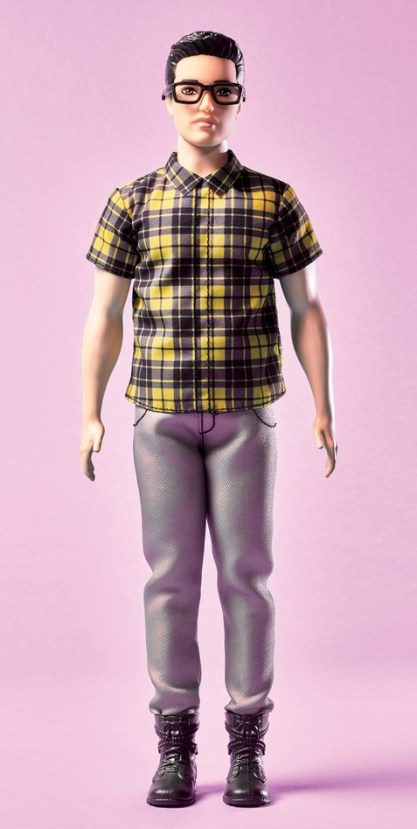
So this is Present-Day Allison from the U.S. National Tour of Fun Home: The Musical.
5. Plaid on Point Ken (2017)
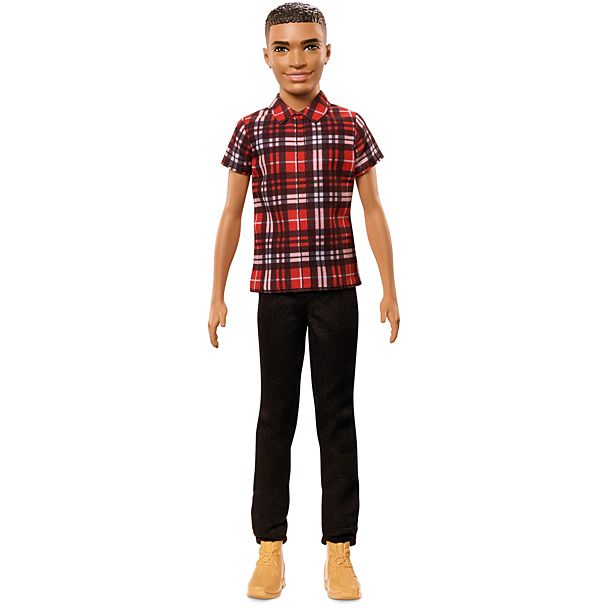
Alaina: This is a peak day two of A-Camp look when everyone wants to show off just how cute and queer they are so they wear their new wildfang button up AND wear hiking boots.
4. Barbie Dreamhouse Ken
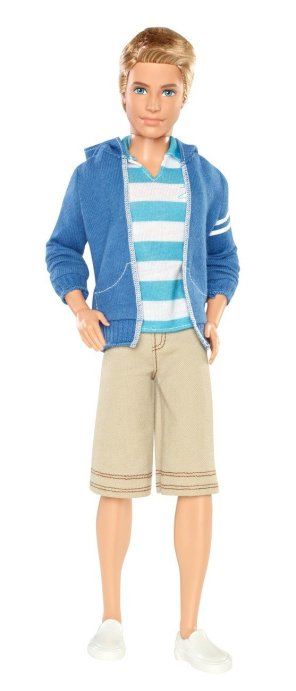
Molly: oh god i’m dressed like barbie dreamhouse ken rn
I asked for pictorial proof of this situation, and she delivered:
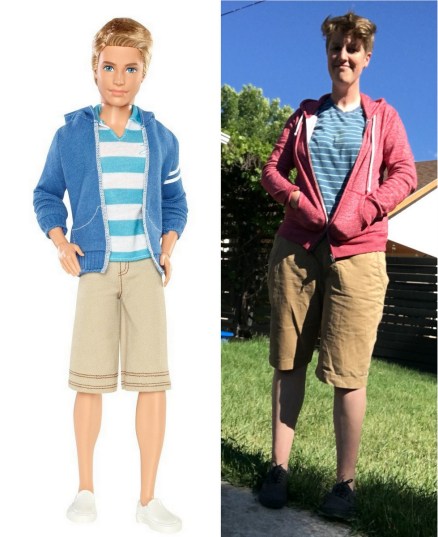
3. Distressed Denim Ken (2017)
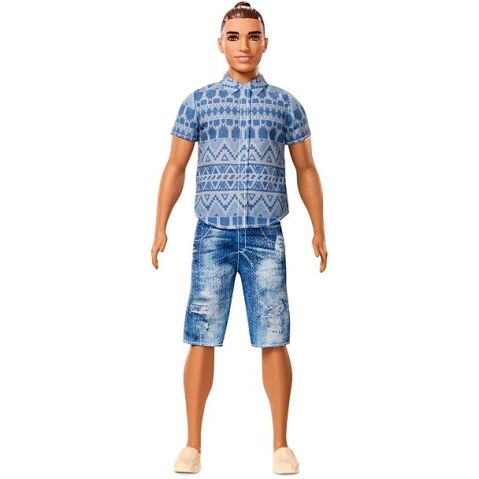
Dufrau: this one is just true. everybody is wearing that exact shirt right now.
Jenna: @dufrau I *am* wearing that shirt and that hair.
Ta-Da:
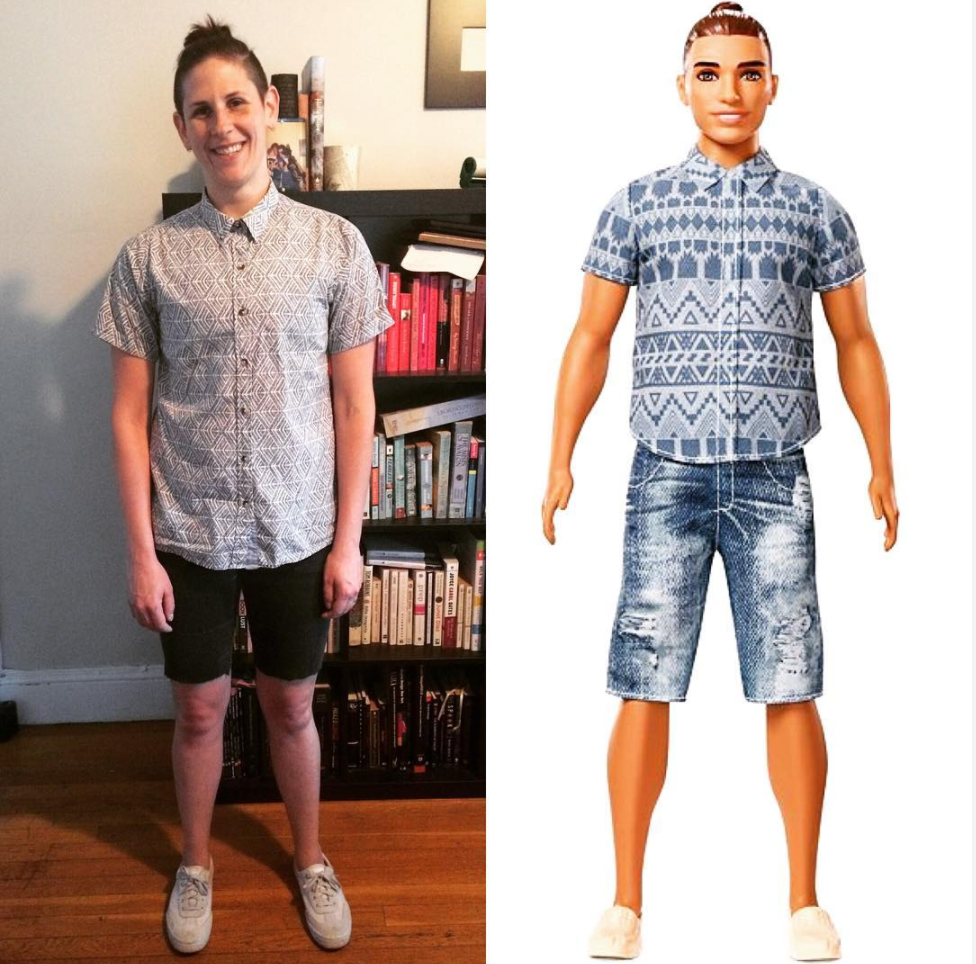
2. Ken Fashionistas Doll in Black & White (2017)
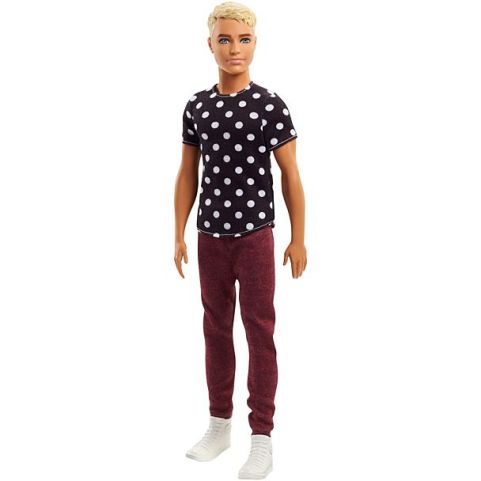
Like so many of you, I noticed that there is a Ken doll for every single one of my exes (who, let’s be real, might also be your exes). But what I wasn’t prepared for was a Ken doll that looks exactly like my PRESENT girlfriend. Wow! Good job Mattel!

my girlfriend // the doll version of my girlfriend
1. Super Stripes Ken (2017)
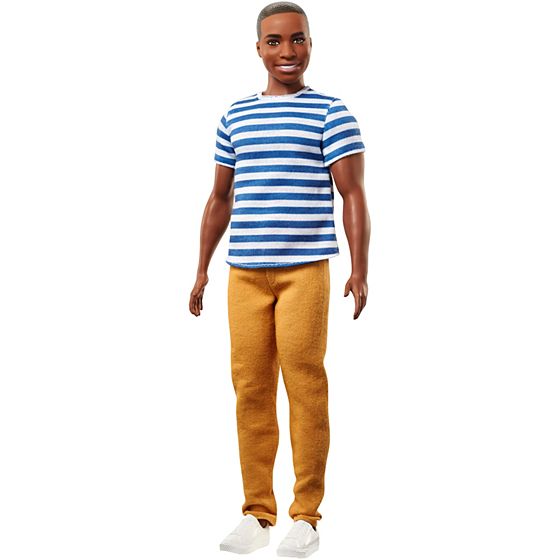
Alaina: “Did they consult Brittani Nichols for this doll? Because this doll is Brittani Nichols.”
Brittani Nichols is definitely somebody’s ex-girlfriend, and is also a celesbian icon. Therefore, this doll is the #1 Most Lesbian Doll on the list. Congratulations!
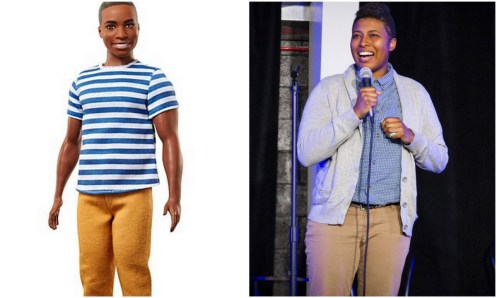
Please show us your Ken pics: We Are All Lesbian Ken: Send Us Your Photos For A Community Gallery
Abby Wambach Barbie: 15 Gay Barbies She Can Invite To The Dreamhouse Potluck
by riese with some help from rachel
Today a very big thing happened in the world of girls and dolls: an Abby Wambach Barbie has been unleashed upon the universe and is surely primed to Make a Difference in the lives of so many young people who deserve heroines.

But who will Abby Wambach Barbie invite over for her first Gay Ladies Potluck at the Dream House? We have some ideas!
1. Leanne
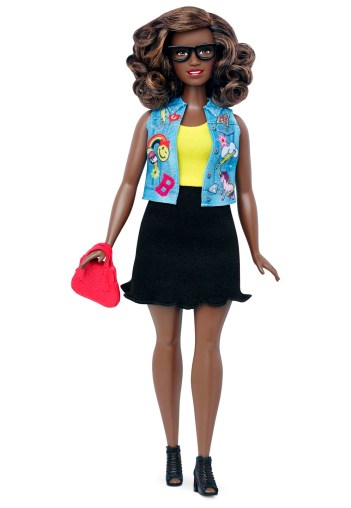
This is Leanne! Leanne is the lead guitarist in an all-women pop-punk band, Three-Beer Queers, and a children’s librarian by day. Her favorite karaoke song is “Desperado” and she can’t wait for you to try her new lentil dip!
2. Kristen Stewart
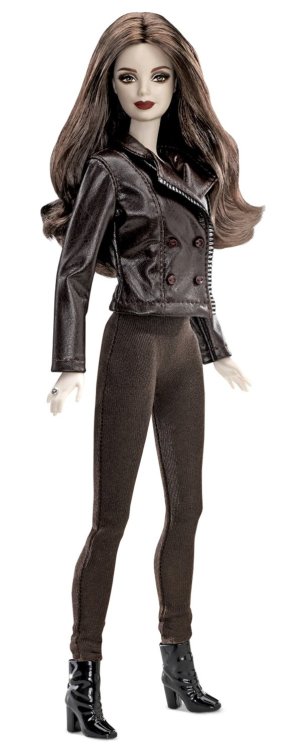
This is Kristen Stewart. She’s in a bad mood.
3. Rosie O’Donnell
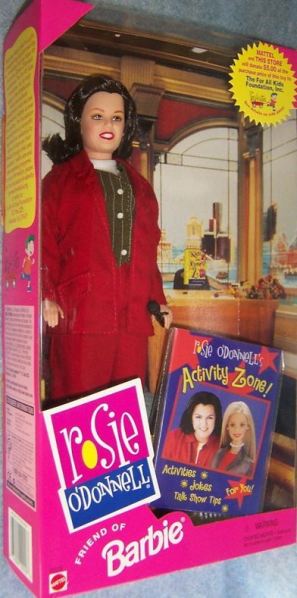
Friend of Barbie or friend of Dorothy?
This is Rosie O’Donnell. She finds Tom Cruise attractive, but not in a sexual way. She loves arts and crafts, Broadway musicals, and Advocating for Youth. Donald Trump hates her, but he can die in a fire.
4. Melody
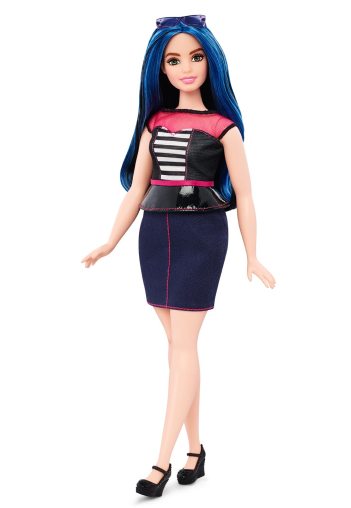
This is Melody; she’s a diehard roller derby fan and has been more into Demi Lovato than you since she was in Camp Rock. She goes thrifting every weekend and runs Black & Pink card-writing events once a month.
5. Cat Cora
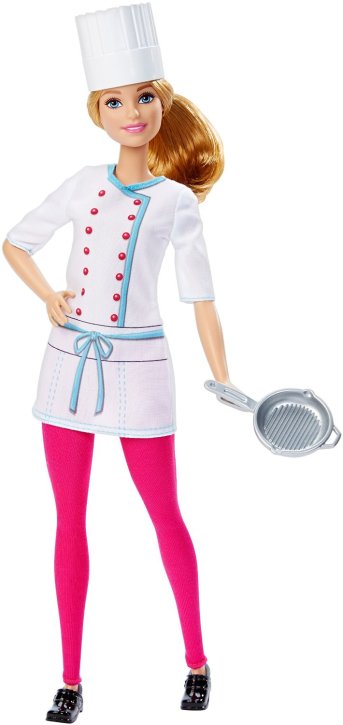
This is Cat Cora! She’s a chef but when she’s not making omelettes, she’s making sweet lesbian love to her wife, raising her creatively named sons, or presiding over that very expensive Cat Cora restaurant in the Virgin Airlines terminal at SFO. Abby needs salmon with Satsuma-Habanero glaze for 15? Coming right up!
6. Haley
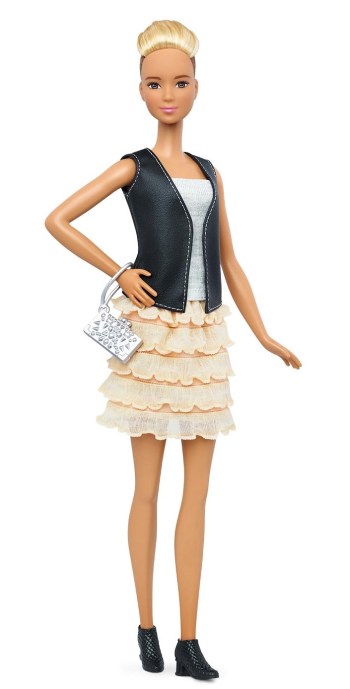
Haley is gluten-free… but she’s such a good cook, you won’t even notice! She knows more about comic books than anyone you’ve ever met and she’s friends with all her exes and also all of your exes.
7. Ramona
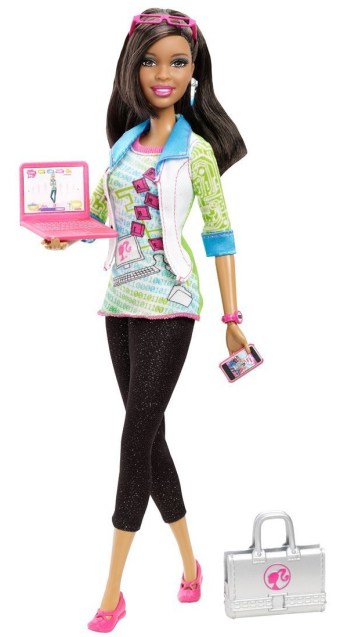
This is Ramona. Ramona’s usually pretty busy and it’s hard to tear her away from her work — or from the Google Campus in Palo Alto where she spends her workdays. But she’s promised everybody at the potluck she’ll put her laptop away for at least three hours, and definitely won’t be checking her phone! This gal is ready for Jell-O shots!
8. Joan Jett
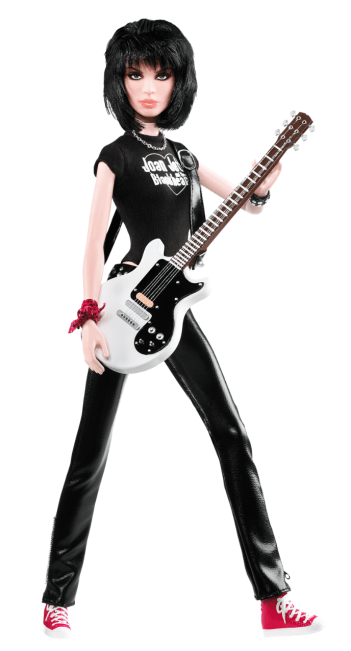
This is Joan Jett. She’ll take the gig.
9. Nikki

This is Nikki. Nikki gets really into Pride, like REALLY into it, and always remembers to bring snacks and sunscreen and extra bottles of water for everyone and so it’s not a big deal that she wants you to wear rainbow face paint every year. All of her pet fish are named “Nikki” and she’s getting her Masters in social work.
10. Melody
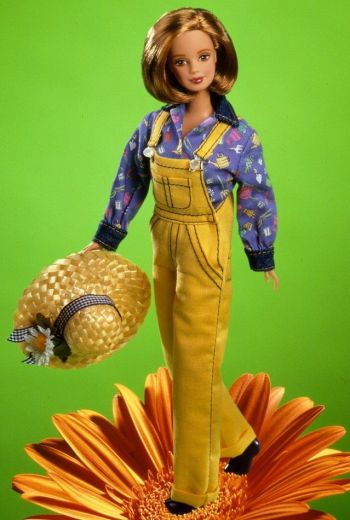
This is Melody. She lives on a womyn’s commune upstate where she presides over the livestock with a firm hand and a strong voice. Melody’s fresh-picked cherries are ALWAYS the hit of the potluck!
11. Kristy McNichol
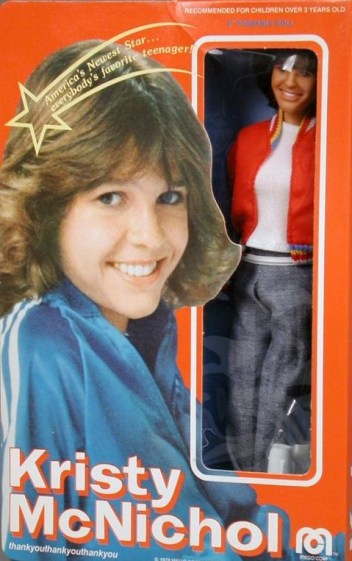
This is Kristy McNichol. She’s your root.
12. Alex
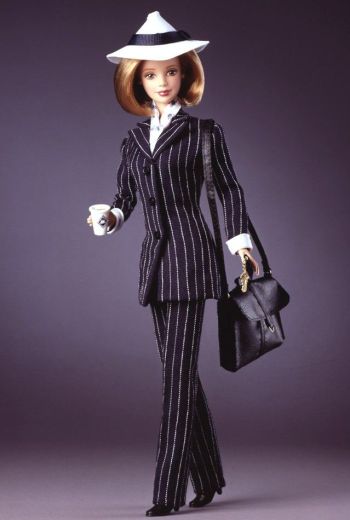
This is Alex. She never met a blazer — or a broad! — she didn’t like. When she’s not carefully orchestrating the careers of her high-powered Hollywood client list or giving instructions to her assistant regarding the property in Palm Springs, you can find her at The Abbey, looking around to see who else is at The Abbey.
13. Roxy
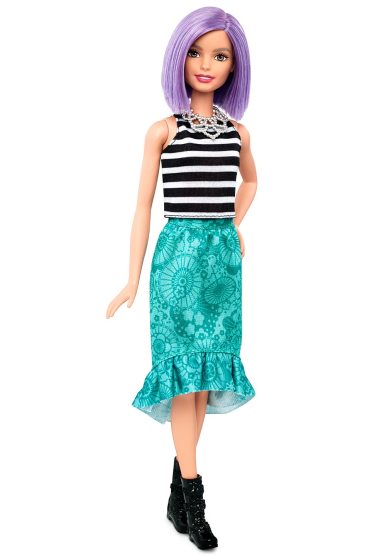
Roxy is really down to earth despite being featured on street style blogs all the time and getting followed around by Pitchfork photographers; she fosters pit bulls and always remembers to bring something vegan to the potluck even though she isn’t vegan. Has an terrible tattoo of a shamrock from a drunken night in college but totally owns it.
14. Christie
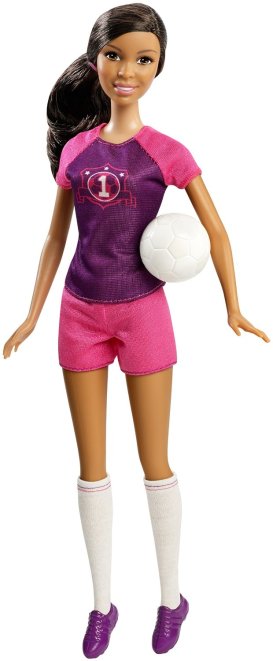
This is Christie! Christie has been in a bit of a funk since Abby’s retirement, but when she heard about the potluck, hope rose through her chest and filled her heart and shins with love. Christie would never pass up a chance to play some pick-up ball with her #1 hero. Don’t worry folks, she’ll bring Gatorade!
15. Julia

This is Julia. She loves dressing dapper, treating her lady like a queen, secretly crying at movies, and bringing enough craft beer for everybody. She’s always looked up to Abby, and can’t wait to meet her in person at the Lesbian Barbie Meet-Up!
Team Pick: Feminist Hacker Barbie
Earlier this week, Pamela Ribon came across a very interesting book: Barbie: I Can Be A Computer Engineer. Pretty sweet, right? What could be better than a fun, accessible children’s book encouraging girls to go into STEM? Nothing — except this book wasn’t really about that.
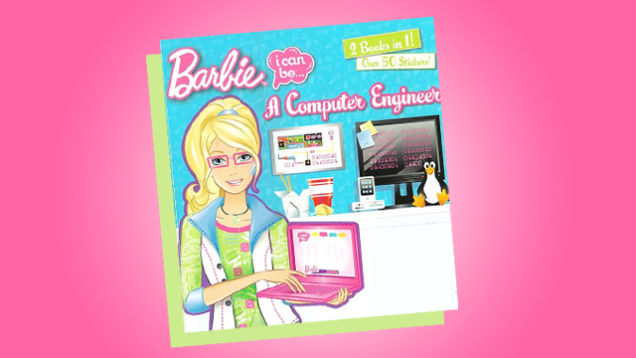
Don’t judge this book by its cover. Via Gizmodo.
In actuality, the book was full of the kinds of sexist drivel that drive girls and women away from STEM. Although Mattel has since pulled the book from sale online, you can read most of it on Ribon’s blog (it’s short!). Alternatively, Casey Fiesler, a PhD candidate in computing, gives the following summary:
As far as I can tell, the steps for becoming a computer engineer if you’re Barbie are:
- Design a videogame.
- Get a boy to code it for you.
- Accidentally infect your computer with a virus.
- Get a boy to fix it for you.
- Take all the credit for these things yourself.
And the problem isn’t even that Barbie isn’t a “real” computer scientist because she isn’t coding. (I am one of those mostly-non-coding computer scientists myself, though now I’m tempted to make a game about robot puppies shooting lasers anyway.) The problem is the assumption that she is a designer, not a coder, and the coders are boys.
To remedy the situation, Fiesler remixed the entire book, creating gems like this:

Via caseyfiesler.com.
Fiesler made the images herself, and they’re so good. I read them and I wanted a million more — and happily, they’re in production!
After Ribon’s article about the book went viral on Gizmodo, the best thing on the internet emerged: Feminist Hacker Barbie. Created by real life computer engineer Kathleen Tuite, Feminist Hacker Barbie is a meme generator allowing users to rewrite pages of Barbie: I Can Be A Computer Engineer.
Results have been spectacular.
For example, Feminist Hacker Barbie optimizes algorithms like you wouldn’t believe.
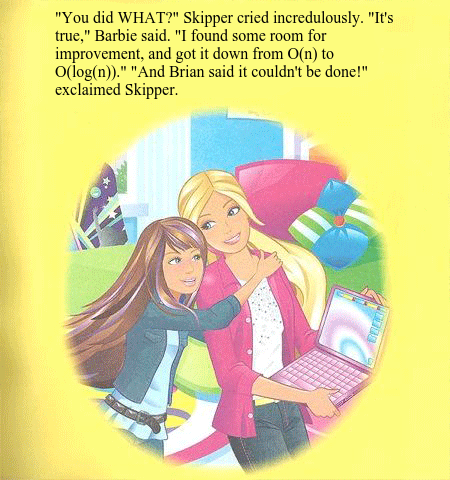
Brian said it couldn't be done. #FeministHackerBarbie pic.twitter.com/dBbBuFWpiv
— she builds their fires (@ErinIshimoticha) November 20, 2014
Feminist Hacker Barbie considers herself a Grey Hat; if you don’t mess with her, she (probably) won’t mess with you.
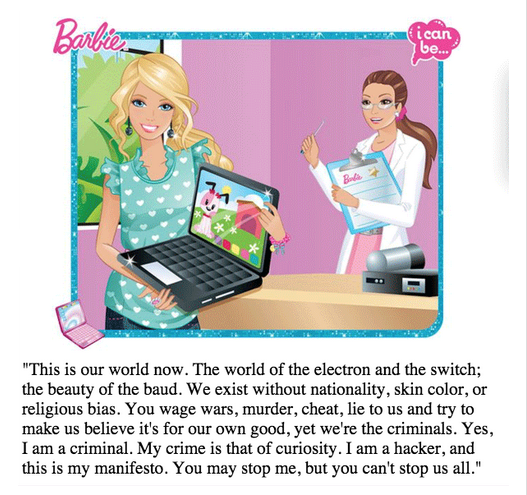
#FeministHackerBarbie is eliciting real actual chortles from me rn pic.twitter.com/8LM2yIMWzD
— eva wood (@EvaGiselle) November 19, 2014
Feminist Hacker Barbie doesn’t need your help implementing the front end design, k thx bye.
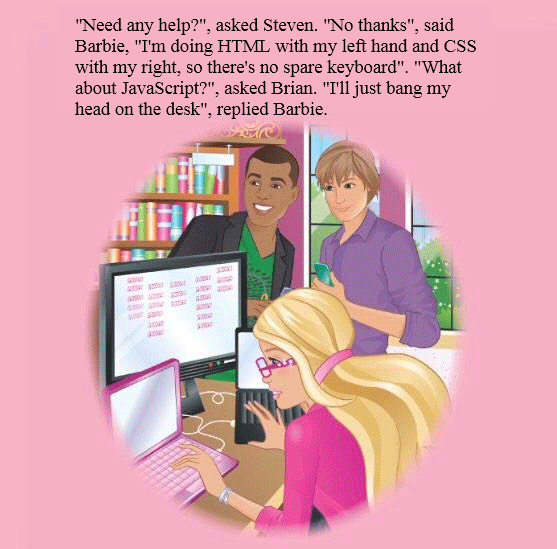
rollin’ RT @rstanek: Okay, this is my favorite edit so far: RT @doublehelix: #feministhackerbarbie knows her web dev pic.twitter.com/SSTqTuUpOF
— Clara Spealman🌱✊🏾🌈🏳️⚧️📢 (@ironfroggy) November 21, 2014
An on and on, all over Twitter, Tumblr and the general feminist interwebs.
Look, I made one too:

Make your own at Feminist Hacker Barbie!
How To Post A Photo In The Comments:
1. Find a photo! This is the easy part. Find a photo on the web, right click (on a Mac, control+click), hit “Copy Image URL” and then…
2. Code it in to your comment! Use the following code, and use a DIRECT LINK to the image. Your image link should end in .JPG or .GIF or .PNG or .CallMeWhateverYouWant even. I don’t care, but it should be an image suffix!
<img src=”http://imagelink.jpg”>
If you need to upload the photo you love from your computer, try using imgur. To learn more, check out Ali’s step-by-step guide.
